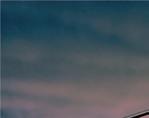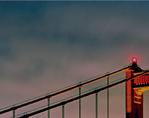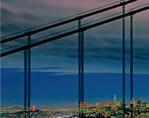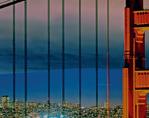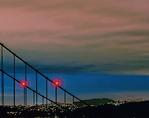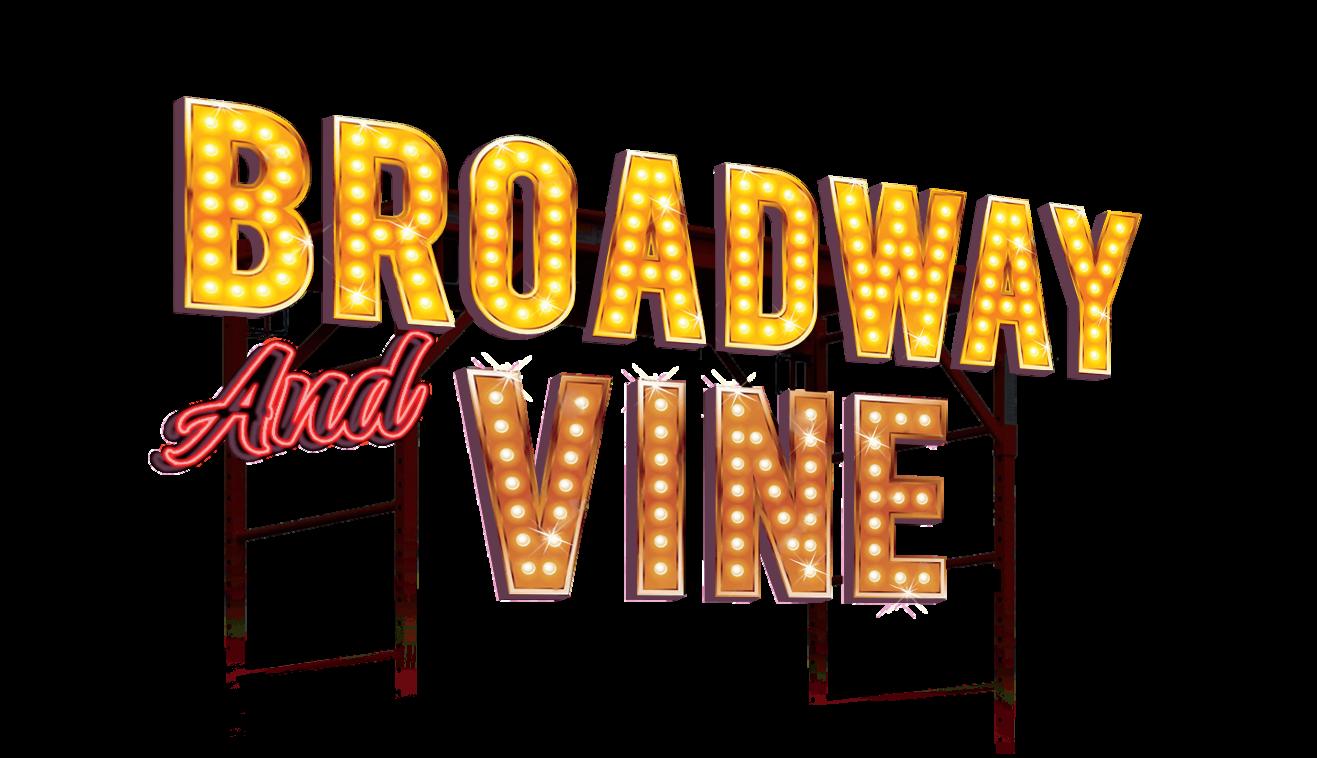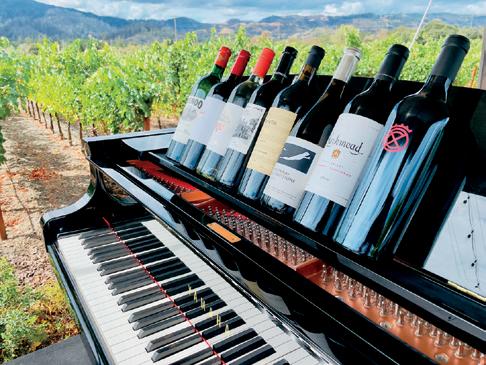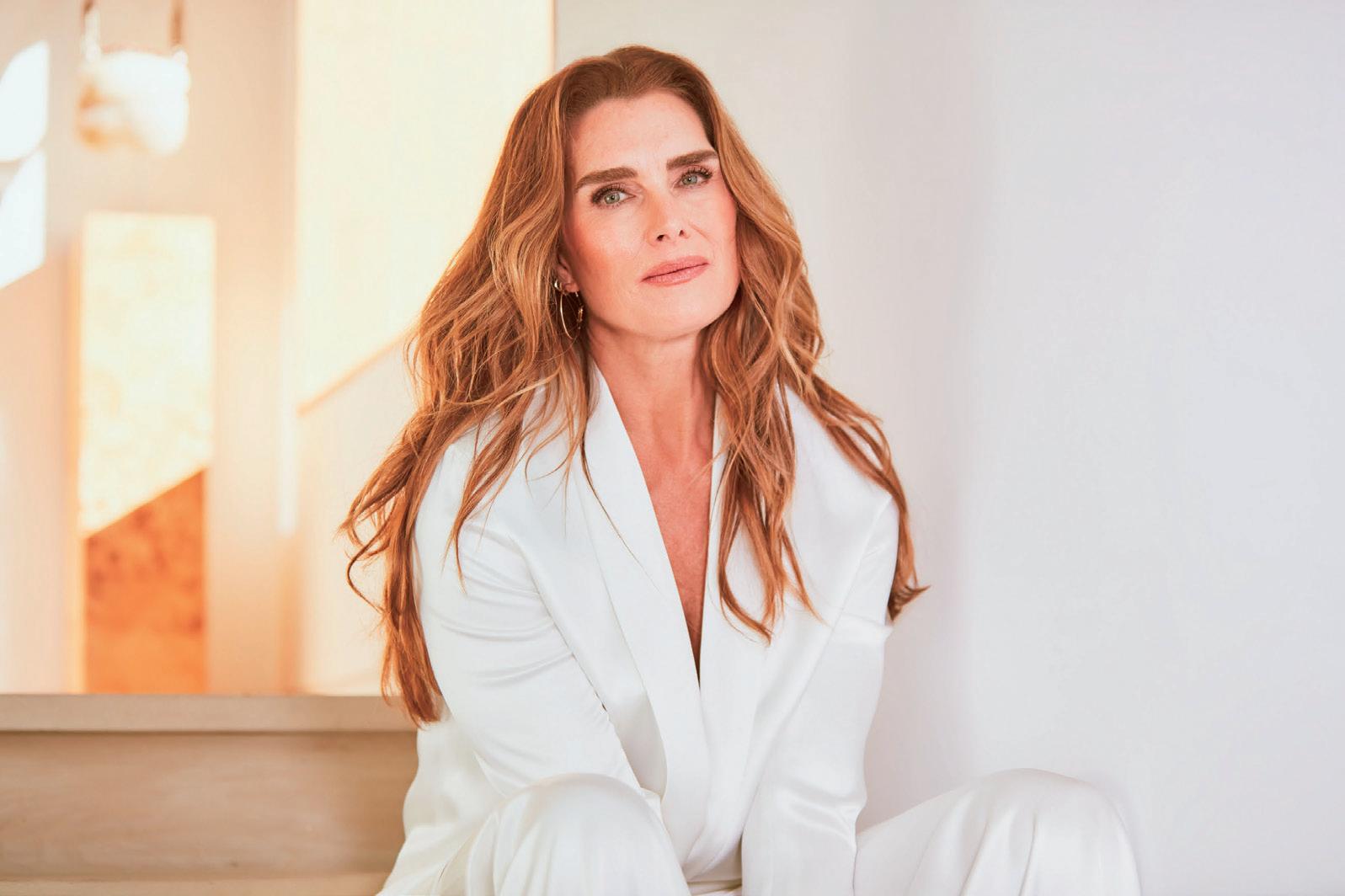GORDON GETTY
THE ORIGINAL RENAISSANCE MAN
























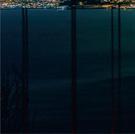
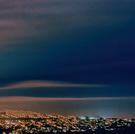








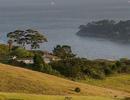
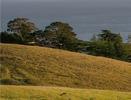


This fabulous residence is a perfect contemporary design with high ceilings and wall to wall windows to showcase the magni cent panoramic views from Bay Bridge, San Francisco, Golden Gate Bridge, Angel Island, Belvedere, downtown Tiburon and Sausalito. Located in a premier Tiburon location, with every room oriented towards the awe-inspiring view and natural light, this newly remodeled stylish 3,878± sq ft 4 bedroom home is an entertainer’s dream! The spacious living room with replace and wetbar, huge family room with replace and attached deck, the dining room with open beam high ceiling and 2 story windows overlooking the breathtaking views o er a dramatic dining experience. The stylish kitchen features ne Quartzite countertops, large center island, breakfast area, Spanish handmade tile oor and top-of-the-line appliances. The double oven is




equipped to be preheated from anywhere using the app. Primary bedroom features a large sitting area with wall to wall windows for perfect views and primary bathroom has a steam shower and state-of-the-art heating system and Quartzite vanities with walk-in closet. Bathrooms are equipped with brass faucets and tile oor handmade by Italian artisans. Other features include an o ce, a spacious laundry room with sink and 2-car garage. The close proximity to downtown Tiburon’s shops, restaurants, waterfront pathways, Angel Island and San Francisco ferries, the prestigious Corinthian and San Francisco Yacht Clubs gives every resident the remarkable sensation of vacationing at home!
More photos and info available at 23Venado.com


























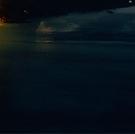



















































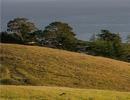











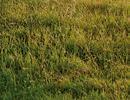



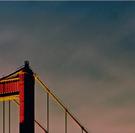




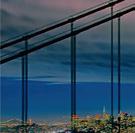

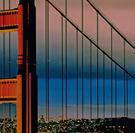


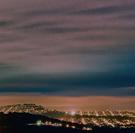
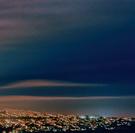





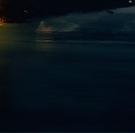









































































Located on the prestigious Belvedere Island’s South side, these 2 rare waterfront lots total one acre with boathouse and boat dock have magnificent views from San Francisco, Golden Gate Bridge, Sausalito to Mt. Tam with ever changing views of sailing yachts, sparkling








$18,995,000
evening lights, stunning sunsets and a level area at water’s edge with unobstructed panoramic views. This is a very rare opportunity to build a waterfront estate with privacy, and accessible by both water and land. Price includes two parcels 060-181-34 and 060-181-35 totaling approximately 1 acre.
For More Information, Call or Text Olivia Decker at 415.720.5915

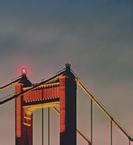




































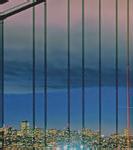


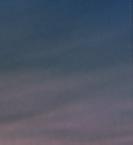



































A rare opportunity to buy a new home under construction to customize your fi nishes on a dream location near tip of Belvedere Island at end of Belvedere Ave. This appx. 5,000 sq ft masterpiece designed by acclaimed architect David Kotzebue features contemporary design and open fl oor plans, handcrafted European materials, expansive decks, views of Golden Gate Bridge, San Francisco, East Bay, Angel Island. Modern handmade bathroom vanities, crafted oak fl oors and stones. Interior design by Barbara Turpin Vickroy leading designer, honored with best design awards worldwide. Adjacent to open space




















next door, this home o ers privacy to entertain and enjoy the Infi nity edge pool with custom pool house. The extensive foundation has cost over $4,500,000 so far. Completion is estimated for June 2023. Buying now would be able to choose fi nishes except the hand crafted stone decking from Spain and the intricate kitchen mill work from Germany are already ordered. AKA 1 Blanding Ln, Belvedere
For more detailed information, please visit: 465BelvedereAve.com






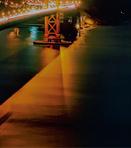














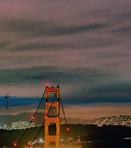
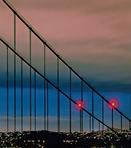





































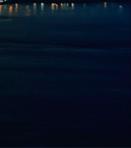

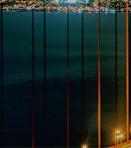




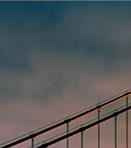


























Featured in Architectural Digest, this world class residence showcases panoramic views of the San Francisco Bay, the Golden Gate Bridge, and the San Francisco and Sausalito. A magnificent masterpiece in a dramatic setting, this property has a most prestigious location and is comprised of a ±8,131-squarefoot home on a ±0.67-acre lot. It features 4 bedrooms, 5 full and 2 half baths. This work of architectural art was designed by the world-renowned architect Charles Gwathmey and boasts spectacular outlooks from every corner of the expansive floor plan. The primarily vertical organization of this house takes advantage of its sloped site on the Southern coast of Belvedere Island. The uppermost level contains a 3-car garage, an elevator descends to a courtyard where you will find a detached 1 bedroom, 1 bath guest house and a wine cellar. The main house’s is situated between two large retaining walls which follow the site’s natural contours and splay outwards toward the Bay. An interior circular staircase winds around an elevator and forms a cylindrical focal point. A barrel-vaulted ceiling articulates the living and dining room at


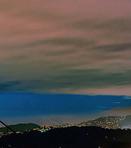
Featured in Architectural Digest, this world-class residence showcases panoramic views of the San Francisco Bay, the Golden Gate Bridge, the entire city skyline of San Francisco, and Sausalito. This magnificent masterpiece in a dramatic setting on the most prestigious location is comprised of a ±8,131 sq .ft. home on a ±0.67 acre lot, featuring 4 bedrooms and 5.5 baths. This architectural work of art was designed by architect Charles Gwathmey, with spectacular outlooks from every corner of the expansive 4-level o or plan. The primarily vertical organization of this house takes advantage of its sloped site on the southern coast of Belvedere Island. The uppermost level contains a 3-car garage with glass doors, an elevator which descends to a courtyard, a detached one bedroom, one bath guesthouse and a spacious wine cellar. The remaining levels of the main house are situated between two large retaining walls, which follow the natural contours of the site and splay outwards towards the Bay. The house’s compact organization within the precinct formed by



the retaining walls ensures privacy. An interior circular stair winds around an elevator and forms the cylindrical focal point of the house’s massing. A barrel-vaulted ceiling articulates the living and dining room at the entry level of the main house, and a large deck projects towards the Bay to extend the space into the landscape. 3 bedrooms, 3 baths, a study and a two-story entertainment room occupy the intermediate oors, while a media room, a beautiful wet bar, a full bath with steam shower and sauna on the lowest level open onto a spacious outdoor terrace with a pool, whose “in nity edge” of water establishes a poetic connection to the Bay. The interior oors are limestone and wide plank, Bubinga wood and cabinets are lightly stained maple. The exterior is clad in gray stained cedar, with a curved standing seam zinc roof. All exterior windows, doors and decks are teak, all terraces are beige/gray amed limestone pavers and the retaining walls are painted warm white stucco. More photos and information can be found at: 445BelvedereAve.com
the entry level, and a large deck projects towards the bay, extending the space into the landscape. 3 bedrooms, 3 baths, a study, and a two-story entertainment room occupy the intermediate floors, while a media room, a beautiful wet bar, a full bath with steam shower, and a sauna fill the lowest level which opens onto a spacious outdoor terrace with an infinity pool on the edge of San Francisco Bay. The interior floors are limestone and wide plank Bubinga wood, and cabinets are lightly stained maple. The exterior is clad in gray stained cedar and a curved, standing seam, zinc roof. All exterior windows, doors, and decks are teak; all terraces are paved in beige or gray-flamed limestone; and the retaining walls are painted a warm white stucco. The home is a state-of-the-art smart house within walking distance of the San Francisco Yacht Club, Corinthian Yacht Club, and downtown Tiburon where you will find ferry services to San Francisco and Angel Island and dozens of fine restaurants, including Michael Mina’s Bungalow Kitchen, and French Bistro Left Bank.
More photos and information can be found at: 445BelvedereAve.com














































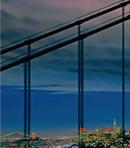












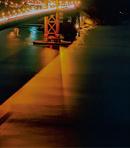








































This issue is an emotional one for me, as the cover story about Gordon Getty and the story of Susan Williams on her late husband, Robin Williams, were close to my heart. I met Robin a couple of times in Paris, the first time at the celebration of Lance Armstrong’s victory in the Tour de France. He told me jokes about Tiburon-Belvedere. It was one of the saddest moments when I heard of Robin’s suicide. I went to his Tiburon home and placed flowers at his front gate, along with dozens of other fans. Our editor-in-chief’s interview with Robin’s widow, Susan Schneider Williams, seeks to understand his life and death. Susan’s dedication to the beloved comedian and actor’s impact was immeasurable and gives Robin’s legacy new meaning. Susan spoke to Teresa about the details and complexity of the Lewy body dementia Robin suffered.
Our cover story subject, Gordon Getty, is truly an original Renaissance man. I’ve met Gordon dozens of times over the last 35 years, since we were both on the board of the now-defunct Marin Opera in early 1990s. Gordon is larger-than-life, not because of his billions, but because of his big personality and openhearted generosity. He inspired my pledge of $5 million to Festival Napa Valley for the Olivia Decker Power of Music Series. Gordon announced his $5 million matching grant when he hosted a dinner at his home to welcome me and others as new board members of Festival Napa Valley in November 2019. His grant was for five years and matched anyone who donated to festival during that period. My donation fulfilled his remaining grant within less than three years. Gordon was impressed and donated another $5 million matching grant in January 2023. At nearly age 90, Gordon’s long, rich life is iconic and fascinating. It’s truly interesting to read even a glimpse of his vast world.
We also profile Daydreamers founder, Bay Area entrepreneur Katina Bajaj, who is a clinical psychology researcher, author, speaker, and creator. You must read this article to understand why, although daydreaming seems to be not doing anything, it works the brain to make myriad connections through creativity and help us with burnout and stress.

We also profile British fashion designer Marchesa’s co-founder, Georgina Chapman. I met at her at a 2019 fashion show for San Francisco Opera Guild’s annual fundraiser. I won the bid to go to New York Fashion Week, where I visited her at the Marchesa atelier. Georgina returned to Fashion Week this year. Her flowing, colorfully floral gowns are so feminine and romantic. I think the world would be much more peaceful if every woman dressed in Marchesa!
In this issue’s Haute Events, I cover the San Francisco Opera’s 100th anniversary concert and a dinner with the artists. This one-night-only centennial celebration featured a program spanning San Francisco Opera’s first century with the San Francisco Opera Orchestra and Chorus; conductors Eun Sun Kim, Sir Donald Runnicles, and Patrick Summers; and 15 vocal soloists who have been active on the opera stage for decades. The concert included projected archival imagery from 100 years of San Francisco Opera history. Founded in 1923, San Francisco Opera is only the third American opera company to reach the centennial milestone.




One other Haute Event this issue is my beloved Festival Napa Valley. Please read Jennifer Boden’s interview with Festival President Rick Walker on this 17th season’s upcoming programs, July 14–23. Highlights this year include the Arts for All Gala fundraiser at Nickel and Nickel with a special dinner by chef Charlie Palmer, a concert headlined by 8-time GRAMMY® award winner Carrie Underwood on July 16, and the Olivia Decker Power of Music concert of Matteo Bocelli on July 15. Young Bocelli has an amazing voice like his father, Andrea. He will perform a mix of classic and contemporary songs. The Manetti Shrem Opera on July 21 will be Don Pasquale, starring Lucas Meachem, Alexey Lavrov, Serena Saenz, and Xabier Anduaga. Both concerts go on stage at Charles Krug Winery in St. Helena. While you attend Festival Napa Valley, please check out the vineyard estate for sale in this issue’s Haute Residence at www.3265SodaCanyon.com.


Our July-August issue is our official kick-off for summer. We feature a lot of food, wine, and travel stories, too. Enjoy reading it!

PUBLISHER
Olivia Hsu Decker
Olivia@HauteLivingSF.com
EDITOR-IN-CHIEF
Teresa Rodriguez
Teresa@HauteLivingSF.com
CREATIVE DIRECTOR
Michelle Restante Michelle@HauteLivingSF.com
DIGITAL EDITOR
Laurie Jo Miller Farr
Laurie@HauteLivingSF.com
COPY EDITOR
Karen M. Smith henhousepublishing@gmail.com
CONTRIBUTING WRITERS
Jennifer Boden, Noël Burgess, Laurie Jo Miller Farr, Becca Hensley, Steph Keay, Fran Endicott Miller, Robert B. Richards, and Sharon Seto
ABOUT TOWN AMBASSADOR
Aubrey Brewster
HEALTH & WELLNESS AMBASSADOR
Lydia Graham
BEAUTY & LIFESTYLE AMBASSADOR
Karen M. Horton, MD, FACS
LUXURY AUTO AMBASSADOR
Tim Lappen TL@JMBM.com
SOCIETY AMBASSADOR
Stephanie Block Stephanie@HauteLivingSF.com
WINE COUNTRY AMBASSADOR
Claudia Ross Claudia@HauteLivingSF.com
SUBSCRIPTION & DISTRIBUTION INQUIRIES
Olivia Hsu Decker Olivia@HauteLivingSF.com
AD SALES REPRESENTATIVE
Cindy Pelland Cindy@HauteLivingSF.com
Haute Living San Francisco Visit us at www.HauteLivingSF.com
Follow us @HauteLivingSF for your guide to all things haute

ICONIC PACIFIC HEIGHTS GOLDEN GATE AND BAY VIEW MANSION | $14,950,000


STUNNING BAY, GOLDEN GATE & SKYLINE VIEWS FROM A PREMIERE RUSSIAN HILL HIGH-RISE | $3,950,000








STYLE GLAMOUR ON NOB HILL | $8,700,000

GRAND-SCALE BUENA VISTA PARK WITH TOP-OF-THE-WORLD SKYLINE AND BAY VIEWS | $7,500,000
WORLD-CLASS PANORAMIC VIEW GRAND RESIDENCE AT THE MILLENNIUM TOWER |UPON REQUEST


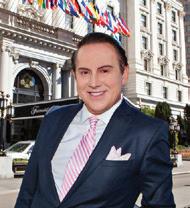
SUPER-SOPHISTICATED FOUR



6 PUBLISHER’S LETTER
12 EDITOR’S LETTER
13 CONTRIBUTORS
14 HAUTE CALENDAR
From theatrical productions to the drama of the world’s finest antique cars, summer has something for everybody.

18 HAUTE KITCHEN
Managed by a third generation of its founder’s descendants, Original Joe’s has served as a place where families gather together and celebrate life. Sharon Seto reminisces about her family’s fondness for this top-grossing, independently owned restaurant and shares a couple of its iconic recipes.
24 HAUTE SHOPPING
Whether you’re gadding about incognito or just adding that finishing touch to your favorite summer outfit, these sunglasses are the must-have accessories for savvy summer fashion.
26 HAUTE WINE
A vibrant mosaic of cultures contributes to Victoria’s amazing food and wine scenes, which makes it the perfect place to host the 10-day Melbourne Food & Wine Festival.
30 HAUTE DRINKS
You might consider gin a quintessentially British liquor, but this juniper-flavored liquor is popular around the world. Meet botanically inspired gins from these international distillers.
34 HAUTE CUISINE
The newly renovated La Mar Bar celebrates the social aspect of eating and drinking with a new menu showcasing inventive cocktails and the vibrant cuisine of Peru.
36 COVER STORY
Gordon Getty is a modern renaissance man, educated and skilled in diverse topics both artful and scientfic. Writer and sorpano Lisa Delan interviews this West Coast icon.

HAUTE PROFILES
42 Susan Schneider Williams, the resilient widow of comedic genius Robin Williams, speaks to the terrible toll taken by Lewy body proteins and what she’s doing to build awareness and support research.
50 Retiring in November 2023, Randall Kline reflects on his incredible achievement in building SFJAZZ, its unique building, and receiving the Lifetime Achievement Award.
52 Celebrity auctioneer Liam Mayclem has a passion to help nonprofit organizations raise the funds they need to help the world, and expresses his deep appreciation for the San Francisco community’s ongoing generosity.
54 Author and clinical psychology researcher Kitina Bajaj founded Daydreamers, a service that helps stressed-out, burned-out adults rediscover their creativity and incorporate it into improving their well-being and mental health.
58 Diversity makes companies stronger by bringing in a variety of perspectives. Julie Castro Abrams, founder and CEO of How Women Lead, discusses the benefits of increasing female representation in business and venture capital investment.
60 Ultra-feminine and romantic characterize the Marchesa woman, according to co-founder Georgina Chapman. The fashion powerhouse specializes in creating gowns with a botannical flair and a sense of escapism.
64 HAUTE HOTEL
Extend your forest bathing tranquility and Yosemite National Park adventures with a stay at Château du Sureau. The resort offers plenty of Old World charm, sumptuous luxury, and exquisite dining.
68 HAUTE TRAVEL
With over 7,000 shops and restaurants, a walking tour of Nice offers myriad ways to satiate the senses with the French and Italian fusion of sights, smells, and tastes of Provençal.

HAUTE SCENE
72 SailGP and Rolex share a passion for teamwork and precision. Their partnership for the third season finale pushed the boundaries of maritime achievement in the exciting world of yachting.
74 Where else can foodies and gourmets gather for a mindboggling array of winemakers, chefs, sommeliers? The Healdsburg Wine & Food Experience, back for a second year, delivers an event that exceeds all expectations while celebrating the producers and agricultural workers who make the bounty possible.
76 The Westin St. Francis hosted the launch party celebrating the May-June issue of Haute Living, San Francisco.
78 The Academy of Art University’s Spring Fashion Show revealed graduating students’ collections.
79 Four Seasons Resort Hualālai hosted the second of its 2023 Winemaker in Residence series, featuring premium wines from Harlan Estate.
80 For three days of literary discussion and fellowship, 20 famous authors and 400 devotees of literature gathered at the Fairmont Sonoma Mission Inn & Spa. The luxurious setting offered intimacy, comfort, and fine dining conducive to a memorable event.
81 The Presidio Performing Arts Foundation hosts a benefit performance honoring the women of Iran.
82 BODYTRAFFIC’s signature energy and dance moves accompanied world-renowned cellist Sophia Bacelar in the Olivia Decker Power of Music Series’ June program.
86 Bay Area notables host a book signing for Making Their Mark: Art by Women in the Shah Garg Collection by Komal Shah.
87 Citizen Film debuts a poignant film about three autistic race car drivers.
88 HAUTE MOVES
Invited to participate in the Mercedes-Benz Test Drive
Experience at Stanly Ranch, Robert Richards recounts his thrill and delight in testing out the Mercedes 2023 EQS SUV and AMG SL 63 convertible.
90 HAUTE BEAUTY
Summertime means outdoor fun, but too much sunshine damages the skin. Our recommendations for the best sunscreens do more than just protect your skin from sun damage, they also leave your skin moisturized and smooth.
92 HAUTE WELLNESS
From Malibu to the Maldives, spas worldwide cater to sun worshipers and help them recover from the cumulative damage of sun exposure while also offering rituals that impart tranquility, peace, and relaxation.
96 HAUTE RESIDENCE
With magnificent views of distant mountains and its own vineyards, this prized property offers gracious living in the Atlas Peak AVA and some of the best grapes sold to local Napa Valley wineries.
HAUTE EVENT
100 Festival Napa Valley brings the arts to all, July 8-23. With world class performances at stunning Napa Valley venues and beyond, their innovative year-round programming showcases both big-name legends and budding talent.
104 The San Francisco Opera commemorates its first 100 years with a century-spanning program and a rare dinner with the artists.
HAUTE AMBASSADOR
108 Lydia Graham interviews internationally acclaimed biochemist Judith Campisi who explores the road not taken in her research to ease or even eliminate age-related ailments.
110 Gracious summertime entertaining brings up images of elegant apparel and dainty afternoon tea, a quintessentially British tradition. Man-about-town Aubrey Brewster shows us how it’s done and shares his foolproof party planning tips.
114 Dr. Karen Horton shares her belief that a caring relationship with staff, celebration of everyone’s victories, and opportunities for continuous improvement result in the ongoing success of San Francisco Plastic Surgery.
116 Fine dining goes hand-in-hand with fine wines, and many menus pair the excellence of their locally sourced cuisine with locally sourced wine. With so many excellent wine options from which to choose, why do many restaurants offer internationally sourced wine lists? Claudia Ross speaks to several local sommeliers to find out.
118 HLSF’s newest ambassador, comedian and wine expert Stephanie Block, regales readers with the latest and greatest of San Francisco’s society and fashion trends.



Over the last 20 years, working in publishing has been an incredible experience. One of the highlights has been the opportunity of meeting and interviewing some truly exceptional individuals. From Richard Branson and John Legend to Nancy Pelosi and Isabel Allende, I’ve been privileged to share the captivating tales of those who shape our future and inspire us with their ideas. In this issue, I had the honor of spending time with Susan Schneider Williams, the passionate and determined widow of Robin Williams. She shared with me the heartbreaking truth about the little-known protein that destroyed her husband’s brain and how she turned her grief into positive action by raising awareness and funds for Lewy body dementia research. In writing this poignant story, I intend to initiate dialogue, explain symptoms, and break down the barrier of fear and shame that can prevent individuals from sharing their private struggles. If this article can positively impact even just one family, I will consider my goal achieved.
In addition to Susan’s compelling narrative, we feature other individuals making a significant difference in the world. Laurie Jo Miller Farr interviews the beloved celebrity auctioneer, Liam Mayclem. Liam shares his very personal childhood with us and shows us that, even through tragedy, we can find glimmers of hope. Our food and travel writers, Noël Burgess and Becca Hensley, take us on a delectable journey through their personal experiences, showcasing the vibrant cultures and culinary delights of Melbourne, Australia, and Nice, France.
We are thrilled to welcome Stephanie Block back to our publication. She offers her unique perspective on the latest happenings in the city. With her signature wit and brilliance, Stephanie takes us on a fabulous ride “Around the Block,” revealing the hidden gems and vibrant personalities that make up our community.
We are grateful for the support of our advertisers and subscribers who help sustain our print publication. If you’re interested in advertising or subscribing, contact me at Teresa@HauteLivingSF.com, and don’t forget to use the code EDITOR to receive 50 percent off your annual subscription through our QR code below.

BECCA HENSLEY
A bon vivant journalist who believes travel is the ultimate celebration of life awash with lessons waiting to be learned, widely-published, Texasbased Becca Hensley is travel editor for New Orleans Bride and editor-at-large for Insider’s Guide to Spas
In a career spanning three decades, she has contributed to scores of magazines and newspapers, including Architectural Digest, Elite Traveler, Global Traveler, Conde Nast Traveler, and the Houston Chronicle. Follow her on Twitter and Instagram @beccahensley.





A graduate of Golden Gate University and serial entrepreneur, Sharon loves the excitement and creativity of the business world and its people. Her addiction to business ventures began with the acquisition of the El Cid Building, site of the famous SF Jazz Mural. She has served as a board member, fundraiser, and event chair for nonprofit organizations, including the SF Symphony Board of Governors, City College of San Francisco Foundation Board, Red Cross Board, National Colorectal Cancer Alliance Board, SF Ballet, and Dress for Success.
JENNIFER BODEN
Jennifer is a freelance wine, food, and travel writer based in beautiful Sonoma County. She has an extensive career in journalism. She contributes to KRON 4 News San Francisco, ABC 10News San Diego, and others. Prior to her writing career, she worked for several network affiliates as a news anchor and executive producer. She earned a degree in broadcast journalism from Arizona State University’s prestigious Walter Cronkite School of Journalism and Mass Communication.
Aubrey, an epicure and man-abouttown, is a product of his environment. His affinity for cooking, fashion, and entertaining was inherited from summer vacations shared in Charleston, West Virginia with his southern belle model-turned-hostess grandmother. It should come with no surprise that he followed in his grandmother’s footsteps, with an inherent talent for hosting legendary parties. He is often listed among San Francisco’s best dressed. Aubrey is a San Francisco native, traveler, and food and lifestyle blogger (aubreyabouttown.com). He resides in San Francisco with his husband, Edward. Aubrey can be found enjoying afternoons lunching with friends at Neiman Marcus and some of San Francisco’s favorite haunts when not hosting or attending events.

Noël Burgess is an East Coaster living in Northern California wine country. His goal is to promote diversity and inclusion in wine, food, and travel with a focus on the places, the products, and most importantly, the people! Noël’s work can be found in VinePair , Wine Enthusiast , Travel & Leisure , Thrillist , San Francisco Magazine , and many other media platforms. Follow him on Instagram @mrnoelburgess and at noelburgess.com.


Laurie is a US/UK dual citizen and dedicated urbanite who loves walkable cities. As a San Franciscobased travel writer, she enjoys views from its crazy, signature hills following half-a-lifetime promoting her two hometowns—a couple of oh-so-flat places: New York City and London. Laurie’s byline is found in USA Today , CBS, Where Traveler , Haute Living , Epicure , Fast Company , Napa Valley Life Magazine , Food & Travel Magazine , Eater , Google Touring Bird , and other major media titles. She was awarded Yahoo Contributor of the Year and is a member of the Society of American Travel Writers.
LYDIA GRAHAM
Lydia is an enthusiastic advocate and explorer of healthy living. She has launched and positioned health and wellness companies, products, technologies, and organizations receiving more than 100 awards nationally and internationally. Her favorite focus is on healthy living and healthy longevity. She sits on the board of the Buck Institute for Research and Aging whose mission is to eliminate the threat of age-related disease for today’s and future generations. Like the scientists at the Buck, Graham envisions it will be possible for people to enjoy life at 95 as much as at 25. She reminds us in her articles that what we do each day matters in our journey to achieve optimal wellbeing.
Steph Keay is a Canadian freelance and technical writer currently based in Silicon Valley. After completing her Bachelor of Commerce in her hometown of Calgary, Alberta, she spent a summer in Croatia assisting The Yacht Week with events management on the islands of Hvar and Vis. Formerly in PR/marketing, she has also placed stories for a variety of clients—including tech leaders, international artists, and acclaimed actors and musicians—with ABC, FOX, NBC, San Francisco Chronicle, The Mercury News, American Way, and others. In her spare time, she enjoys adventuring, photography, and travel—all of which she documents on on her website, StephKeay.com.
THROUGH JULY 23
de Young | Ansel Adams in Our Time
Famed for lush gelatin silver photographs of national parks, Ansel Adams (born in San Francisco in 1902) is a giant of 20th century photography, whose images are icons of the American wilderness. Golden Gate Park, 50 Hagiwara Tea Garden Drive. famsf.org
THROUGH AUG. 20
86th Season Stern Grove Festival
Free Sunday concerts in the eucalyptus amphitheater. Headliners include Lyle Lovett on July 9 and the San Francisco Symphony with special guest Lettuce on July 23. The Big Picnic, an annual fundraiser for the nonprofit, concludes the summer series starring The Flaming Lips. Park entrances open at noon, concerts begin at 2 p.m., reservations are required. 19th Ave. at Sloat Blvd. sterngrove.org

THROUGHOUT JULY AND AUGUST
San Francisco Giants | Oracle Park and Oakland Athletics | Coliseum
There’s plenty of summertime action on the diamonds. The Giants play 12 home games in July, including Postgame Fireworks Night on July 3 and versus the Oakland A’s on July 25 and 26, plus 15 home games in August. The A’s host 12 games in July and 11 games in August, including the SF Giants on Aug. 5 & 6. mlb.com/giants and mlb.com/athletics
THROUGH SEPT. 9
| San Francisco Playhouse
Catch a new production revival of the legendary hit musical about 17 aspiring dancers. Called “unimpeachable” by The New York Times and with a score by Marvin Hamlisch, the show won the 1976 Pulitzer Prize for drama, nine Tony Awards, four Drama Desk awards, and a 1984 Special Gold Tony Award as Broadway’s longest-running musical. 450 Post St. san-francisco-theater.com/ theaters/sf-playhouse/a-chorus-line

THROUGH SEPT. 24
The Tudors: Art and Majesty in Renaissance England | Legion of Honor

From Henry VII’s seizure of the throne in 1485 to the death of his granddaughter Elizabeth I in 1603. This is the only West Coast venue for the first major U.S. exhibition of Tudor portraiture, textiles, sculpture, silver, jewelry, and manuscripts. Lincoln Park, 100 34th Ave. famsf.org/exhibitions/tudors
The calendar tells us it’s the height of summer, even when the fog sometimes tells us otherwise. Never mind, there’s sure to be sunshine and smiles from Mendocino to Monterey—plus plenty of wonderful events. Once again, Haute Living, San Francisco is proud to be a media sponsor of the 17th Festival Napa Valley, “The Best 10 Days of Summer,” an annual event that plays a vital part in building a healthy, vibrant community. Enjoy!
BY LAURIE JO MILLER FARRSan Francisco Symphony with Fireworks | Shoreline Amphitheatre
A festive outdoor performance with vocalist Capathia Jenkins and conductor Edwin Outwater presents a crowd-pleasing lineup of favorite American classics and a special tribute to the Queen of Soul, Aretha Franklin. Spectacular fireworks for the grand finale. 8 p.m. Mountain View. sfsymphony.org/Buy-Tickets/2022-23/ Shoreline-4th-of-July
5 – 9

For the first time in Pebble Beach history, the iconic and prestigious golf destination welcomes 100 of the world’s greatest players, including Michelle Wie West, to compete for the oldest and most coveted major championship in women’s professional golf. pebblebeach.com/events/2023us-womens-open-championship
5 - 23 | Orpheum
One of the most celebrated musicals in theatrical history, the enthralling storytelling phenomenon returns to the stage in a production for the 21st century. Already seen by over 130 million people worldwide in 53 countries and 22 languages, the curtain goes up for three weeks only. 1192 Market St. broadwaysf.com/events/les-miserables
7
Now in her sixth decade as an award-winning singer-songwriter, the poetic and prolific storyteller continues to create music of hope and healing that lights up the world and speaks to the heart. 875 Bordeaux Way, Napa. http://bitly.ws/Fy7t
JULY 9 AND 23, AUG. 9 AND 20 Summer Stage at Filoli
As the sun sets behind the mountains, vibrant live performances are staged against the backdrop of the gardens and historic house. Relax in the meadow with a drink in hand. Performances on consecutive dates by Effie Zilch and Miko Marks, Lolah, Brucemore Artisan Studio, and Trio Paz. VIP Area sponsored by Wente Vineyards. 86 Cañada Road, Woodside. filoli.org/summer-stage
JULY 12 AND AUG. 9
Winemaker Wednesday | Orafo
A special evening featuring a wine educator from the selected winery to provide the tasting and share insights about the unique characteristics and history of the wines. With Flowers Vineyard & Winery, Sonoma, followed by Miner Family Winery, Napa, at Four Seasons Hotel at Embarcadero, 222 Sansome St. fourseasons.com/embarcadero/ dining/lounges/orafo
13 – Aug. 20
SFJAZZ Summer Sessions
Six weeks of concerts featuring Savion Glover, Sun Ra Arkestra, Taj Mahal, Stanley Clarke, Preservation Hall Jazz Band with Tank and the Bangas, and more artists. 201 Franklin St. sfjazz.org
14 – 23
Festival Napa Valley
California wine country’s flagship festival returns for its 17th season with a rich line-up of music, food, and wine events. Superstar country artist Carrie Underwood headlines fundraiser Arts for All at Nickel & Nickel, with an elegant dinner by chef Charlie Palmer on July 16. Spanish guitarist Pablo Sáinz-Villegas plays Joaquín Roderigo’s Concierto de Aranjuez at the opening concert at Charles Krug winery. More fabulous programming at 60+ gorgeous venues throughout Napa Valley. Haute Living, San Francisco is a proud media sponsor. Festivalnapavalley.org
15
Taste of Napa | Meritage Resort & Spa
Featuring wines of Catalonia, 70 wineries, breweries, restaurants, culinary artisans, and a reserve tasting salon plus live music, games, activities, prizes. 11 a.m. –3 p.m. festivalnapavalley.org/calendar/taste-of-napaat-the-meritage-resort-2023

15
Matteo Bocelli in Concert | Olivia Decker Power of Music Series
Beloved Italian classics, ballads, favorite opera arias, and pop hits plus original compositions and selections from this rising international star’s upcoming debut album. With award-winning Spanish violinist Francisco Fullana and maestro Eugene Kohn conducting. At Charles Krug Winery, 6:30 p.m. festivalnapavalley.org/ calendar/matteo-bocelli-in-concert
23
San Francisco Marathon
Marking the sapphire anniversary (45 years) of the event that attracts 30,000 runners for a 5:15 a.m. kickoff at Embarcadero. The last northbound runner must access the Golden Gate Bridge by 7:40 a.m., and southbound runners must access the bridge by 8:50 a.m. to re-open sidewalks and bike paths for the public. thesfmarathon.com/full-marathon
27, 28, and 30
| San Francisco Symphony
Film with live orchestra featuring the film with a score by John Williams, directed by Steven Spielberg. Conductor, Constantine Kitsopoulos. Davies Symphony Hall, 201 Van Ness Ave. Also at Frost Amphitheater, Stanford University, on July 28.
Rated PG. sfsymphony.org/Buy-Tickets/2022-23/ Raiders-of-the-Lost-Ark
28 – 30
The 3-day festival hosted by Dave Chappelle features 5-time GRAMMY® winner and artist-in-residence
Robert Glasper with special guests De La Soul, Bilal, and Lalah Hathaway and Terrace Martin, plus Mary J. Blige, Nas, Chance The Rapper. 1600 Atlas Peak Rd.., Napa. bluenotejazz.com/jazz-festival-napa
1 – 27
| Golden Gate Theatre
She was simply the best. Set to the pulse-pounding soundtrack of the most beloved hits from the Queen of Rock n’ Roll, follow the journey of one of the world’s bestselling artists of all time. Suggested for ages 14+. 1 Taylor St. broadwaysf.com/events/tina

2 – 3
| San Francisco Symphony
Two years of stalking the streets of Gotham City and striking fear into the hearts of criminals has led Bruce Wayne deep into the shadows. Experience the caped crusader on the screen accompanied by a live orchestra performing Michael Giacchino’s captivating score. Rated PG-13. Davies Symphony Hall, 201 Van Ness Ave. sfsymphony.org/BuyTickets/2022-23/The-Batman
2 – 13
| Orpheum Theatre
From the producer of The Lion King comes this timeless story in a thrilling new production filled with unforgettable beauty, magic, comedy, and spectacle. It’s a magical theatrical event where one lamp and three wishes make the possibilities infinite. Ages 5+. 1192 Market St. broadwaysf.com/ events/aladdin

4

The Salvation Army’s 19th Annual Flower Power Silent Auction & Luncheon
Featuring floral designer Orna Maymon, emceed by KPIX 5’s Juliette Goodrich, and honoring the CEO of Union Square Alliance, Marisa Rodriguez, as the Woman of Dedication, the luncheon benefits The Salvation Army’s back-to-school and after-school programs in city neighborhoods. Fairmont San Francisco, 950 Mason St. westernusa. salvationarmy.org/san_francisco/flower-power
11 – 23
Harry Potter and the Order of the Phoenix™ in Concert | Davies Symphony Hall
Get ready to join Dumbledore’s Army™. When Professor Umbridge™ takes over Hogwarts™ School of Witchcraft and Wizardry, find out what else can Harry do to resist her terrible rule. An immersive experience on a giant screen accompanied by a live symphony orchestra. Ages 5+. 201 Van Ness. broadwaysf.com/events/harrypotter-and-the-order-of-the-phoenixtm
12 – 13
48th Annual Rotary Fine Art in the Park
More than 150 juried California artists display paintings, sculpture, textiles, jewelry, ceramics, wood, and glass works for sale over two days in an open air setting with a wine and beer garden under the redwoods at Lincoln Park, Los Altos. rotaryartshow.com
18 and 19
Drake | Chase Center
Four-time GRAMMY award winning and multiplatinum selling hip hop artist returns to the stage in his It’s All a Blur Tour, performing in two shows with GRAMMY winner and multi-platinum rapper 21 Savage. chasecenter.com/events/drake-20230818

19
Merola Grand Finale | San Francisco Opera
A triumphant end to a transformative season features all young artists of the summer program in a dazzling array of opera’s most brilliant works. Conducted by maestro Kelly Kuo and directed by 2023 Merola Stage Director Tania Arazi-Coambs, this evening showcases the extraordinary talent of the 2023 Merolini. English supertitles. sfopera.com/ seasons/merola/grand-finale
20 – 22
Pebble Beach Concours d’Elegance | Pebble Beach Golf Links
Since 1950, a prestigious event for international collectors of classic, vintage, and antique cars to meet and compete for best of show, with 200 motorized beauties rolling onto the hallowed 18th hole fairway. Experts critique their elegance, technical merit, and history in a highlight of Monterey Automotive Week. pebblebeachconcours.net
48th
SUBSCRIBE NOW BEFORE YOUR COMPLEMENTARY





ORIGINAL JOE’S IS MORE THAN A RESTAURANT. IT’S A FAMILY LEGACY that spans three generations for me as well as for them. As a huge fan of Original Joe’s since childhood and dining at the restaurant with my parents and family throughout the years, memories run high each time I go: my dad’s huge birthday celebration, raising a glass to my beloved friend, my husband’s shrimp Louie salad grin, and all the stories we would tell each other around the table. There’s always someone we “bump” into while dining. At Original Joe’s, we celebrated our joys and comforted our sorrows. It’s where we felt at home and connected. It’s that kind of place, and now, I share the same yummy food and old-school Italian vibes with my grandkids, creating more treasured memories. Original Joe’s is not just a restaurant, it’s a legend in my family and for others. Go and you will see.
John and Elena Duggan are co-owners of Original Joe’s, a third generation, family owned and operated, Italian American restaurant located in the heart of San Francisco’s North Beach neighborhood. It’s been a city institution since their grandfather founded the restaurant in 1937. The Duggans have been at the helm of the family business since 2003, when the beloved restaurant was still operating on Taylor Street in San Francisco’s Tenderloin district.

After suffering the loss of the original location to a devastating fire, the Duggans were forced not only to find a new location worthy of its longstanding history with San Francisco, but also to adapt their
family’s business model to change and evolve with the times. Since reopening in its flagship location in 2012, Original Joe’s has grown to employ over 300 people and has thrived in North Beach, becoming a San Francisco Legacy Business and an integral component of the Bay Area restaurant industry. Original Joe’s San Francisco and sister restaurant Original Joe’s Westlake in Daly City, also family owned and operated, are both frequently listed in the Top 100 grossing independently owned restaurants in the United States and receive several nationwide accolades.
In December 2020, the Duggans opened a new takeout concept in San Francisco’s West Portal neighborhood, named Little Original Joe’s and featuring pizza, pasta, and parmigiana, alongside a robust marketplace, rotisserie, and takeout counter. Little Original Joe’s shines in a category of its own, having ranked on DoorDash’s list of 100 most loved restaurants in 2022. A second location of Little Original Joe’s is slated to open in the Marina district in fall 2023. The 85-year-old family establishment is also planting roots in the East Bay with its third Italian American restaurant opening in Walnut Creek in 2024. Between the new concepts and locations, in March 2023, the Duggans acquired what has widely been declared as “one of the best cheesecakes in America’’—San Francisco’s Zanze’s Cheesecake. The time-honored family business has plans to revive and expand Zanze’s, which has been around for 43 years.

SALAD
Serves 4-6
~ ½ pound romaine hearts, chopped
~ 1 head radicchio, chopped
~ ¾ cup salami, matchstick cut
~ ¾ cup cucumbers, thinly sliced rounds
~ ¾ cup red bell pepper, chopped
~ ¾ cup garbanzo beans
~ ¾ cup pepperoncini, sliced
~ 1 head fennel, shaved
~ ¾ cup Kalamata olives
~ ¾ provolone, matchstick cut
~ ½ cup parmesan, freshly grated
~ Salt and pepper to taste
INSTRUCTIONS
1. Combine all the ingredients in a mixing bowl, except for the parmesan cheese. Stir gently to combine.
2. Add the dressing and season to taste with salt and pepper. Toss gently to incorporate the dressing. Top with shaved parmesan cheese.
ORIGINAL JOE’S ITALIAN DRESSING
Makes 24 fluid ounces and has a shelf life of seven days.
~ 1 tablespoon garlic, finely minced
~ 2 tablespoons shallots, finely minced
~ 2/3 cup red wine vinegar
~ 3 tablespoons Dijon mustard
~ 4 teaspoons sugar
~ 1 tablespoon fresh oregano, minced
~ 2 tablespoons fresh Italian parsley, minced
~ 2 cups olive oil
~ Salt and pepper to taste
INSTRUCTIONS
In a mixing bowl, combine everything except the olive oil. Using a whisk, slowly add the olive oil in a thin, steady stream to emulsify. Season with salt and pepper to taste.
“WE SERVE MORE THAN JUST FOOD. ORIGINAL JOE’S HAS BEEN WEAVED INTO THE MEMORIES OF PEOPLE’S LIVES FOR GENERATIONS AND IT IS AN HONOR AND A PRIVILEGE THAT WE DO NOT TAKE FOR GRANTED. EVER.”
HL: What is your most favorite dish(s) to make at home?
OJ: For us, cooking and family go hand-in-hand. Sunday dinners have been a constant and anchor of our busy lives for as long as we can remember. I (Elena) try to go to the Stonestown Farmers Market every Sunday and base my menu around what moves me and what I can find that day. As summer approaches, the brothy butter beans from Iacopi Farms are a staple. I’d have to say my favorite dishes to make at home for a Sunday night dinner are usually a frittata using any lingering vegetables from the week, a big green salad, and grilled lamb chops with salsa verde and roasted smashed potatoes. Other family favorites I rotate through regularly include lasagna, breaded chicken cutlets—especially for the kids (my children and nieces and nephews)—and what we’ve all come to call “Kevin’s Rigatoni,” which is ground sausage, marinara sauce, cream, parmesan, and basil. We’re a no-frills kind of family: simple dishes with beautiful ingredients generally do the trick.
HL: Original Joe’s has fed generations of people over the years. Do you have any funny memories or stories you want to share?
OJ: This was back during the Taylor Street days: a little boy was a regular with his parents, and they came in about once a week. He was around eight to 10 years old when he decided he wanted to run away from home. But, before he made his trek, he needed to eat first (naturally) and showed up at Joe’s. The team at Joe’s pretended to go along with his little scheme and let him sit at the counter for his final meal before he ran away—then, of course, called his parents who came and picked him up afterwards. Just goes to show how Joe’s has always been more than just food. The little boy is still a customer to this day! Also—not necessarily a funny story, but more of a fun fact—John, Jr. met his wife, Julie, at the Taylor Street location. Julie, from Canada, was visiting San Francisco with a girlfriend and somehow ended up in the seediest part of SF (the Tenderloin neighborhood). John, Jr. intervened during their dinner to ask what brought them in and she said they got lost in the city and were hungry, so decided to stop in. It was love at first sight!
HL: How do you balance “life” working together at home and in the business?
OJ: Fortunately, work-life balance comes pretty effortlessly to us, because Original Joe’s is not only what we do, it’s also who we are. Our own children are being raised in a very similar way to how we were, with our restaurants existing as a living, breathing piece of our heritage. For us and our entire family, Original Joe’s is a point of constant focus, pride, and attention. Original Joe’s on Taylor Street was open before our mother was born; it has defined our lives as a family for three generations and more to come!
HL: What is your dream vacation?
OJ: Anywhere with family, delicious food and wine, and a kitchen that we can cook in!
HL: Are there any future endeavors on the horizon?
OJ: We recently acquired Zanze’s Cheesecake, which is widely declared as one of the best cheesecakes in America, and we have exciting plans to revive and expand distribution of the longtime San Francisco favorite. We also have a second, larger location of Little Original Joe’s in the Marina district opening in fall 2023; Elena’s, an all-new Mexican American concept is set to open fall 2023 in West Portal; and a third location of Original Joe’s in the East Bay’s Walnut Creek neighborhood will be around in 2024.
~ 2 tablespoons olive oil
~ 1 medium yellow onion, chopped
~ 8 ounces ground beef
~ 1 (10 oz.) package frozen spinach, thawed and squeezed dry in paper towels
~ 8 eggs, lightly beaten
~ 1/4 cup finely grated parmesan
~ Sourdough baguette, for serving
~ Kosher salt and black pepper, to taste
1. Heat olive oil in a skillet over medium-high heat.
2. Add in chopped onions; cook for about five minutes.
3. Add ground beef; cook until browned and all moisture evaporates, about 10 minutes.
4. Add spinach; cook for about two minutes.
5. Add beaten eggs; cook until eggs are cooked and mixture is slightly dry, about four minutes. Season with salt and pepper and top with a sprinkling of parmesan. Serve with a toasted sourdough baguette.
~ 1.5 ounces premium vodka
~ 0.75 ounce freshly brewed espresso
~ 0.5 ounce Bailey’s Irish Cream liqueur
~ 0.5 ounce Tuaca liqueur
~ 0.5 ounce Kahlúa coffee liqueur
~ 0.25 ounce Frangelico hazelnut liqueur
1. Pour all ingredients into a shaker filled generously with ice.
2. Shake vigorously and double-strain into a chilled martini glass. (A layer of foam on top of the drink indicates it was shaken enough!)
3. Garnish in the center with three espresso beans.
Flavor profile: The freshly brewed espresso will bring out a strong coffee flavor, but balances nicely with hints of vanilla, chocolate, and toasted hazelnut. It pairs perfectly as an after-dinner drink or Sunday morning brunch pick-me-up!

Makes 6 servings (6 ounces per person).
~ 6 chicken breasts, 6 ounces each
~ 3 cups Italian breadcrumbs
~ 2 cups all purpose flour
~ 6 eggs, beaten
~ 8 ounces arugula
~ 2 tablespoons lemon juice
~ ¾ cup olive oil
~ 1 cup parmesan cheese, shaved
~ Salt and pepper to taste
~ Olive oil for frying
~ 2 lemons, cut into quarters
To prepare the chicken:
1. Using a meat mallet, gently pound chicken breast to an even half-inch thickness.
2. Season the chicken breasts with salt and pepper to taste.
3. Place the flour, eggs, and breadcrumbs in each in separate bowls.
4. Begin by dipping both sides of the chicken breasts in the flour, shaking off any excess.
5. Next, dip the chicken breasts into beaten eggs, being sure to coat both sides of the chicken.
6. Finally, dip the chicken breasts in the breadcrumbs, coating both sides.
7. Complete these steps for each chicken breast.
To cook the chicken:
1. Place a 12-inch skillet over medium heat and add the olive oil. Heat the oil to 350 degrees Fahrenheit.
2. Place three of the breaded chicken breasts in the oil.
3. Cook until crisp and golden brown, about 2 to 3 minutes per side.
4. Remove to a platter lined with paper towels, season to taste with salt and pepper, and keep warm.
5. Repeat with the remaining chicken breasts.
To plate:
1. Season to taste with salt and pepper. Gently toss to combine.
2. Place a chicken breast on a plate, top with 1½ cups of arugula on each.

3. Garnish with two tablespoons shaved parmesan on each and a lemon wedge.











Oval frame sunglasses by Gucci take inspiration from 1990’s catwalk fashion. Made in Japan with a two-toned metal frame, they arrive in a velvet case with satin lining. $750 gucci.com


 BY BECCA HENSLEY
BY BECCA HENSLEY
ATTENTION GRABBERS, STYLE TRANSFORMERS, ANONYMITY TOOLS, STATEMENT MAKERS, and sun shaders, sunglasses–it seems–have a plethora of purposes in our lives. Whether you wear them to hide from humanity, to mimic an icon, or to keep your eyes safe from UVA and UVB rays, sunglasses reign as our nonpareil accessory. Here are some to add to your collection.
Ava by CC Eyewear has a black cheetah print with hints of blue, presented in a retro round shape and keyhole bridge–perfect for a wine tasting event in Napa or a ramble through the art museum. San Francisco-based CC Eyewear makes custom readers, blue light glasses, and sunglasses in plant-based frames that brim with style. Founded by Jennifer Farrelly and designed by a fashion veteran from Prada and former Head of Product at Warby Parker, the fashion-forward company offers luxurious eyewear at affordable prices. $100 cceyewear.com
Filipe in citron by Paradigm Eyewear bedazzles with its trippy poise and worldly savoir faire. The colorful lenses flow in curves that don’t quite fit the sunglass shape—purposeful and funky. The lemony-green hue will turn heads. $185 paradigmeyewear.com
1. LOUIS VUITTON
LV signature square-round sunglasses by Louis Vuitton

Men’s boast understated beau monde brash with light blue acetate frames, a unique square-round shape, blue lenses, and signature engraving. They feature 100 percent UV protection. $520 louisvuitton.com


2. GARRETT LEIGHT
Retro Biggie by Venice Beach’s Garrett Leight California Optical is an undaunted, charismatic silhouette for lovers of vintage chic. In sturdy acetate, the glasses come in three colors. $385
3. LU GOLDIE
Aurélie in satin by Lu Goldie are divinely boundary-breaking with an unapologetic 1990’s cachet. Looking like a mosaic of gleaming Murano glass, they feature the brand’s signature gold braiding and come with a lovely protective pouch. For every purchase, a tree is planted. $179 lugoldie.com
4. VERA WANG
Vera Wang knows how to make party perfect glasses. Audacious Camille is the perfect combination of acetate, metal, and jewelry embellishments. As seen on Heidi Klum! $303 baxterandbonny.com


5. AMERICAN OPTICAL
Saratoga tortoise sunglasses by American Optical stand out as a red-white-and-blue classic, perfect for Fourth of July fêtes. These tortoise sunglasses went underground for decades, but they’re back—better than ever. Famously worn by President John F. Kennedy, the revived mainstay has green, polarized, impact resistant, nylon sun lenses. $255 aoeyewear.com
6. RAY BAN
Gold gradient brown by Ray Ban 3699 is the king of cool. These sculpted metal-framed Ray Bans strut into any room like the most popular kid on campus. Touting themselves as an elevated basic, these glasses go way beyond basic to be essential. $166 rayban.com sunglasshut.com



7. EMBER NICHE
The Dru in “Mountaintop Green” by Ember Niche sets an instantly artsy mood with its quirky, transparent green acetate frame and 15 percent tinted green lenses. Inspired by cartoons and the lush forests of South America, these glasses were envisioned in New York City by Ember Niche founders Timothy Campbell and Jarrett Raghnal. $225 emberniche.com
8. RANDOLPH
50th Anniversary Concorde by Randolph celebrates five decades with a limited edition silhouette prime for sailing on your yacht or seeking out the Big Five in Kenya. A skillfully handcrafted objet d’art with a timeless 23-karat gold frame finish and SkyTec™ glass “American Gray” lenses exude elegance and savvy. You’ll cherish the limited edition 50th anniversary collector’s box set complete with cognac case with 50th anniversary logo, cleaning cloth, travel journal, and more. $549 randolph.com
9. BURBERRY
Marianne cat eye sunglasses by Burberry have a reimagined heyday shape. They’re sexy and as daring as Catwoman on the prowl. Watch out, Batman! Look for the studded logo inspired by signature Burberry jewelry, a fashionista’s dream. $335 sunglasshut.com burberry.com

“THE MELBOURNE FOOD AND WINE FESTIVAL CELEBRATES WHAT MELBOURNE DOES BEST—GREAT HOSPITALITY AND GREAT EVENTS. ”
 - STEVE DIMOPOULOS, MINISTER FOR TOURISM, SPORT, AND MAJOR EVENTS
- STEVE DIMOPOULOS, MINISTER FOR TOURISM, SPORT, AND MAJOR EVENTS

Melbourne Food & Wine 2023
BY NOËL BURGESSTHE MOSAIC OF CULTURES IN MELBOURNE, AUSTRALIA has over 100 ethnicities, nationalities, and heritages, starting with its original indigenous inhabitants. Victoria’s capital city is a confluence of communities, which helps to explain why it has produced one of most vibrant and creative food scenes in the world. Enophiles might raise their wine hands to argue that the wine scene is just a robust as the food with regions such as the renowned Mornington Peninsula and Yarra Valley. Nonetheless, we should be fortunate that these two sides decided to pair up for a gastronomic party known as the Melbourne Food & Wine Festival (MFWF).
Founded in 1993 as a small gathering of chefs and winemakers, MFWF is now in its 31st year with nearly 200,000 people visiting from all over the world. This includes San Francisco Bay Area epicureans, thanks to direct flights on United
from SFO to MEL. First-time visitors to Melbourne and the festival enjoyed the narrow laneways and intimate locations of Fed Square, where over 100 of the events were held. The 10-day festival ran from Friday, March 24, to Sunday, April 2, this year, welcoming chefs from San Francisco, Kyoto, New York, London, and a multitude of local Australian food and wine experts. The highlight of the Melbourne Food & Wine Festival program is the annual World’s Longest Lunch followed the next day by the World’s Longest Brunch. These signature events draw about 3,000 people, with local culinary stars in charge of the menu paired with wines from the region. This year it was held in Treasury Gardens, one of Victoria’s oldest gardens dating back to the mid-19th century. Located near Victoria’s Parliament House, its lush green landscape provides optimal space and ambiance for the 2,000-foot table needed for these events.


Alla Wolf-Tasker, culinary director of Lakehouse Daylesford, prepared a 3-course feast for an eager crowd. Wolf-Tasker, a legend in Australia, pioneered sustainable production more than 40 years ago when few considered the practice worthwhile. Her passion to move food forward and use local organic ingredients was on display during the MFWF kickoff event:

ENTRÉE
Tartlet of late season hoophouse vegetables, herbs, flowers, parmesan, and mustard crust, goat’s milk custard, pear purée.
MAIN COURSE
Duck brik, roast fig, eggplant, radicchio.
DESSERT
Autumn apple (caramel apple and walnuts, buttermilk mousse, apple cider jelly).
Curious about the wine selections? Tahbilk, established in 1860, is Victoria’s oldest family-owned winery and vineyard. Their 500 acres of land produces mostly Rhone varietals such as Grenache, Shiraz, Roussanne, Mourvèdre, and Marsanne. Curating wines to complement a multicourse meal could be difficult for one brand, but Tahbilk offered a diverse selection for every type of palate:
• NV Coueslant Chardonnay Pinot
• 2022 Marsanne
• 2022 Grenache Mourvèdre Rose
• 2019 Grenache Shiraz Mourvèdre
• 2018 Cane Cut Marsanne.

Growing up in Sydney, Natalie Paull knew she wanted to cook from a young age. Fast forward to 2011 when she opened up Beatrix Bakes on Queensbury Street in North Melbourne. It wasn’t long before her cake bites and pastries developed a cult following. Her small shop generated lines wrapping around the block on weekends for a decade until the combined realities of the pandemic and burnout closed her shop in the summer of 2022. While still selling whole cakes online, her fans in Australia and abroad were thrilled for her “sort of” return at the MFWF World’s Longest Brunch. Paull prepared a 3-course brunch with her signature cheesecake for fervent guests:
Rye galette with late season tomato, buffalo ricotta, herbs, parmesan, and olive oil.

A Cakewoman’s Breakfast: coriander seed-cured kingfish, pickled beetroot and dill, Ossau-Iraty, a lil’ hash brown, jammy boiled Honest Eggs, fresh radishes with whipped butter, soft herb salad, and a Baker Bleu sourdough roll.
DESSERT
Cake for Breakfast: cheesecake with cinnamon granola streusel and caramelized JAZZ™ apple compote.
What drink is synonymous with brunch? Mimosas, of course, which the Pizzini family was happy to provide. Pizzini Winery, located in Kings Valley wine region, stays true to their heritage with the production of Italian varietals such as Prosecco, Sangiovese, Nebbiolo, and many others. For the festival, the Pizzinis provided a few selections in addition to the heavily requested Pizzini Mimosa being poured by the waitstaff:

• Sparkling
Pizzini Prosecco NV
II Soffio Prosecco Rosé
• White
2022 Pinot Grigio
• Rosé
2022 Rosetta
• Red
2022 Nonna Gisella Sangiovese.
“FRANKLY I’VE NEVER SEEN A FESTIVAL SO GENUINELY EMBRACED BY SUCH A DIVERSE AUDIENCE. FOOD HAS THE CAPACITY TO ENGAGE AND LINK PEOPLE, AND THE MELBOURNE FOOD AND WINE FESTIVAL DELIVERS THAT SENSE OF ENGAGEMENT IN SPADES—FROM HIGH END HAUTE CUISINE TO LOCAL EVENTS IN SMALL RURAL COMMUNITIES.”


The Melbourne Food and Wine Festival has been a mainstay of Melbourne’s major events calendar for three decades, contributing to Victoria’s reputation as Australia’s premier food and wine destination. Visit www.melbournefoodandwine.com. au to learn more about the 10-day event. Tickets will go on sale later this year for March 2024.

From Germany’s Black Forest, one-of-a-kind Monkey 47 reigns as the artisanal bartender’s au courant, behind-the-bar darling. It boasts an astonishing 47 botanicals. In a bottle inspired by a flea market’s vintage pharmaceutical flagon, the gin’s backstory involves a monkey in a zoo and herbalists from tiny Swabian villages well versed in the hinterland’s yield. Harmonious, this gin tastes like a romp in the woods with spruce shoots, blackberry leaves, rose hips, lavender, acacia blossoms, hawthorn, lingonberry, angelica, and more. It’s aged in earthenware containers and has a molasses base.

Taste the largesse of the Northern Territory, home to the true outback, with a tipple of Darwin Signature Gin

A contemporary gin, rich with nature’s gifts and blessed by the dramatic landscape it occupies, the spirit comprises Kakadu plum, water lilies, and native lemongrass among other plants and botanicals. Try it in a classic gimlet.

IN THE UK’S PASTORAL HAMPSHIRE, I GAD ABOUT AT BOMBAY SAPPHIRE DISTILLERY, kitted out in the futuristic redo of Laverstoke Mill, first mentioned in the Doomsday Book in 1086. Today, sleek and contemporary, the distillery redefines the former industrial workspace with startling architectural elements such as Thomas Heatherwick’s two glass houses, riveting greenhouse domes that glitter in the sunlight among the abundance of greenery. Within them, rather than tasting the gin just yet, I wander through an indoor garden that brims with plants, each a sample of the specific, rare botanicals that Bombay Sapphire uses to make its world class gin. Collected from all over the world, they include licorice root from China, coriander from Morocco, cassia bark from Vietnam, juniper from Tuscany, lemon peel and bitter almond from Spain, orris from France, and angelica from Germany.
In Australia’s less trammeled state, the even more unspoiled Kangaroo Island draws visitors for its spectacular nature and wildlife. Thirty minutes by air from Adelaide, it spans 98 miles in width. After hiking and marsupial spotting, belly up to Kangaroo Island Spirits’ award winning gin distillery. Sip O Gin, a classic, dry style spirit with hints of juniper and citrus. It has an unusual key ingredient, Olearia Axillaris, a daisy that grows by the sea and which imparts sense of place, adding sweet piney nuances.
A hands-on distillery that suggests guests activate all their senses while learning about gin (and before they indulge in the grand finale gin cocktail experience while seated in the distillery’s lavish bar), Bombay Sapphire truly brings home the point for imbibers that gin might be the original plant-based libation. Once a medicinal dram for monks, later an anesthetic-like escape for the masses, liquid courage for soldiers, and one of the Jazz Era’s preferred party drinks, gin’s popularity hasn’t faltered. In fact, gin, made from a neutral spirit (usually distilled from a grain such as wheat or barley) relies on unique cornucopias of botanicals for flavor, though by law, juniper must dominate.
As gin soars in popularity, gin drinks go beyond martinis, and gin makers around the world strive to produce artful spirits that have sense of place, notable personalities, culinary cunning, and the ability to provoke an exclamation of awe when tasted. Because it’s a gin jungle out there, we’ve compiled a compendium of some of the world’s most enthralling gins for your bar cart.
Medieval copper pot stills, a slow distillation process, and gunpowder tea as a main ingredient contribute to the hearty body of Drumshanbo
Gunpowder Irish Gin. Chock-full of botanicals, this exotic gin gets its bracing, fresh finale from a citrus fusion of makrut lime, grapefruit, and lemon. Note the American jackalope on the label for fancifulness.

Also in Ireland, the legendary Merrion Hotel makes two signature, handcrafted gins. The lemon-flavored Merrion Lemon Gin, charged with lemony freshness in a custom copper pot still, features no fewer than 15 botanicals such as sage, apple blossom, and sweet orange. Alternatively, the Dublin-sited, 5-star hotel’s non-alcoholic Artonical Gin vaunts a comingling of verbena, lemongrass, citrus, and juniper with no added sugar or sweetener—a mocktail lover’s dream.
Playful ENGINE Gin might seem like a gimmick at first, as it comes packaged in a real half-liter oil can. Made in Piedmont and an homage to the region’s motorhead scene, the bright, refreshing, and whimsical gin uses ingredients sourced from across the Italian peninsula, including licorice from Calabria, lemons from Sicily, sage from the Alta Langa, and pure water from the Alps.

Evoking the Amalfi Coast’s allure and its lemon trees, clifftops, and crystalline waters, Malfy Gin embodies coastal Italy’s dolce far niente (the sweet art of doing nothing) lifestyle. It’s what you’ll want to drink to imagine yourself on a boat headed to Capri. Made by a distilling family with a century of experience, Malfy hails from a blend of handpicked Italian lemons, pink grapefruits, oranges, pure Italian water, and juniper. Try Malfy Gin Rosa, the brand’s stylish pink version infused with Sicilian pink grapefruit.


In May at the just reopened and lavishly renovated Carlton Cannes, a Regent Hotel, as part of the 76th annual Cannes Film Festival, Brad Pitt in collaboration with the Matthieu Perrin and distiller Tom Nichol released The Gardener Gin—fondly dubbed by fans “the French Riviera gin.” Exuding flavors from Cap d’Antibes nearby, the spirit fuses both fresh and dry citruses: pink grapefruit, lemon, and sweet and bitter orange. Made from wheat in a copper still and offered in a Mediterranean-hued bottle, Gardner Gin is a metaphor for the region.

Made in Skåne, Sweden’s southernmost region and its veritable, verdant breadbasket, Navy Strength Organic Gin is created in family-owned Purity Distillery’s own castle near Malmo. From a canon of indigenous ingredients, including soft Swedish spring water, Swedish winter wheat, and malted barley, thyme, basil, angelica root, and lingonberry, this bold, Nordic creation uses the brand’s award-winning, copper-stilled, uber-distilled vodka as its base, then ups the gin ante with its range of botanicals.

“A PERFECT MARTINI SHOULD BE MADE BY FILLING A GLASS WITH GIN AND WAVING IT IN THE GENERAL DIRECTION OF ITALY .”
–Noel Coward
On the southern tip of New Zealand’s North Island, hotelier Bill Foley has a portfolio of three gins, overseen by distiller Rachel Hall. Created from a recipe she’s perfected over the years, Lighthouse Gin is made near Foley’s resort, Wharekauhau Country Estate. Pure, complex, and redolent with the organic freshness that typifies New Zealand’s culinary terrain, the trio of spirits comprise nine botanicals (including fresh zest from New Zealand navel oranges and Yen Ben lemons) and water from the Remutaka Range.


Martini lovers will swoon over Holborn Dining Room’s Limited Edition Gin by Tarquin’s at Rosewood London. Reflecting the regal Cornwall Coast in its flavors, this gin draws a subtly salty herbaceous-ness from handpicked rock samphire, while coriander seeds add spice and fresh lemon and orange peel add a brisk brightness. Crafted under a direct flame where bread dough seals the top of the still, the spirit gains character in the process. Each bottle is individually filled, labeled, waxed, stamped, given batch tasting notes, and signed—all by hand.
Crafted in Charleston by innovative Grain and Barrel Spirits, High Goal Gin is imbued with southern charm and flavors, including mint from Kentucky and Meyer lemons from Florida. Meant to be a bracingly refreshing gin with a modern twist, the exclusive small batch (3,000 bottles) gin was inspired by the opulence and lifestyle of polo as seen through the eyes of Nic Roldan, American polo player and High Goal co-founder. Look for its distinctive recycled glass bottle, made in Milan.

From Sonoma’s first craft distillery, Prohibition Spirits, which has a tasting room on the historic Sonoma Plaza, indulge in something refreshing and unexpected: Melon & Mint Gin Created by distiller Fred Groth for his wife, Amy, who prefers smooth spirits “with essence of flavor,” this gin is her all-time favorite of the distillery’s “Re-imagine Gin” series. A concoction of cantaloupe melon with hints of fresh mint, the 40 percent AVB, purposefully light on juniper, can be sipped over ice alone or mixed into any cocktail.

We know you’re thinking scotch whisky, but small batch, craft-made “London dry gin” Tulchan Gin manifests Speyside’s peerless distilling legacy with a luxurious gin riff. Showing prodigious notes of sloe berries, blackberry leaves, elderflower, white asparagus, and classic gin botanicals (from juniper to angelica), the clever concoction captures the moors, rivers, and valleys of this subregion of the Highlands.

So evocative it could be summoned from the pages of a storybook, Secret Garden Distillery makes Herb Garden Gin just on the outskirts of Edinburgh. The estate grows and hand-harvests more than 600 varieties of plants. A sustainable distillery founded and run by a mother and two daughters, they proffer a line of luxury gin styles both classic and modern in mood. Try unexpected flavors such as lavender gin or elderberry. Some expressions change color when tonic water is added.

PEACEFUL. PRIVATE. BESPOKE.

Level 4.29 acres with over 600’ of Rubicon sand beach boasting Big Blue Lake Tahoe views . Main house, bunk house with extra bedroom suite, and full guest house make this a true lakefront compound. Play lawn games, or sit on the viewing bench for reflective time when not sunning on the spacious pier. Your boat is protected in the boat house, with family or guest boats on the two buoys. This is “Old Tahoe” at its best for gracious, understated living in a serene and private setting SummerCampTahoe.com $35,000,000

TRINKIE WATSON
NV & CA BROKER, CIPS, CLHMS, CRS, LTG, GRI NV BS 1022 CA 00326518
800 783 0722
twatson@chaseinternational.com
laketahoeluxuryestates.com
Tahoe City office: 531 North Lake Boulevard


It’s always hora feliz at this swanky new spot on the Embarcadero.
 BY STEPH KEAY
BY STEPH KEAY
IT’S A BALMY FRIDAY EVENING ON THE EMBARCADERO, AND the city’s social set is out and about. At Pier 1½, lively chatter drifts out the double doors as patrons stream in: a pair of girlfriends in gilded platforms, an assemblage of backpack-decked colleagues, a sharply dressed suitor with a bouquet of lilies in hand. The location is La Mar Cocina Peruana’s newly reopened bar, connected to the acclaimed restaurant by an adjoining foyer. Following an 8-week renovation, La Mar Bar has unveiled a new, nautically themed interior, a menu of delectable Peruvian bites and beverages, and a spirited music line-up. The 49-seat bar and lounge seeks to revitalize nightlife on the Embarcadero with deejay sets and musicians performing live Thursdays through Sundays. Tonight, tropical house music is on the menu: a saxophonist riffs to the sounds of summer spinning on the turntables, setting the scene for the happy hour crowd.
Designed by David Magid of the Los Angeles-based Magid Studio, the seafood-centric menu and waterfront setting, as well as the fishing villages of Lima, inspire La Mar Bar’s whimsical new interior. A sleek, 13-seat bar showcases ceramic tiles, reminiscent of fish scales, in various shades of aqua. Behind the bar, backlit shelves house an impressive spirit selection of piscos, tequilas, mezcals, and more. A lounge area tucked into the far end of the space is the ideal place to loosen up after work or ahead of the weekend, softly lit by a 12-foot calamari sculpture suspended above. The centerpiece of the new space, the giant cephalopod was hand-woven by Peruvian artist David Goicochea and imported directly from his workshop in Lima.
La Mar Bar’s new menu, curated by executive chef Victoriano Lopez, is an opportunity to indulge in shareable bar snacks showcasing the vibrant flavors of Peru. Choose from a selection

The Yasashi Mariposa—a rich, rounded cocktail made with sake, Cocchi Americano, lemongrass orgeat, and lemon

of taquitos: salmon with a zesty jalapeno-cilantro sauce, cured hamachi with a spicy roasted tomato and rocoto sauce, ahi tuna with smoked aji amarillo sauce, or Dungeness crab with salsa roja. Another fresh option is the nigiri, with duck, hamachi, and scallop on offer. House specials include crisp plantain chips served with creamy avocado sauce, beef oxtail empanadas, savory chicken croquetas, chicken thigh chicharrón with raw hot pepper sauce, and even a Peruvian take on fondue: picture a bubbling skillet filled with sweet corn, queso fresco, and Gruyère.
While you might come for the food and atmosphere, you’ll stay for the drinks. The bar’s drink menu, exclusive to the space, features a variety of libations spotlighting agave and pisco. La Mar Bar perfects the pisco sour, Peru’s national drink: a unity of tart, sweet, and earthy flavors in one silky concoction. Twists on the original include the chilcano, adding a refreshing fizz with ginger beer; El Capitán, a take on the classic Manhattan; and the pineapple-infused pisco punch, invented right here in San Francisco. Other cocktails range from bubbly and bright to bold and brash, with taste profiles sure to satisfy all. Highlights include the Wasp, a floral concoction of passionfruit and aji panca; the rich and nutty Que Bacan made with pisco, Kahlúa, espresso, and sherry, and the Yasashi Mariposa, a citrusy, sake-based cocktail topped with an edible wafer butterfly. Looking for something a bit more unorthodox? Try the Ojo de Tigre, an alcoholic twist on leche de tigre—the spicy, citrus-based marinade used in a classic Peruvian ceviche.
In the spirit of Peruvian culture, La Mar Bar is a toast not only to eating and drinking well, but also to celebrating the social aspect of both. So, whether you’re raising a glass with old friends or a new date: Salud!
GORDON GETTY SPEAKS WITH THE VOICE OF A 5-YEAR-OLD.

That is to say, his exuberant expression of self, creative intent, and heartful engagement with humanity found its voice by age five and has not wavered. In the eighty-five years separating him from the boy he was then, that voice has grown richer, deeper, more nuanced, and erudite, but its essential nature remains intact. It is rare to know who you are at such a young age. It is rarer yet to carry that foundational spirit through almost nine decades of life. As anyone who has had the good fortune to know Gordon Getty can attest, there has never been and will never be another like him. Even his external attributes are singular. Getty’s laughter is
instantly identifiable, his gestures paint stories, and his singing carries the colors of a life deeply lived.
Getty is a true renaissance man whose work spans multiple fields, including music, literature, evolutionary biology, theoretical economics, strategic philanthropy, and winemaking. His broad range of expertise reflects a uniquely “golden brain,” the term applied to a minority of people who equally utilize left and right brain functions. In other words, Getty is intellectually ambidextrous. Indeed, his greatest fulfillment is found in progressing simultaneously in multiple pursuits, alternating his focus between the creativity of the arts and the structure of the
PHOTO: ELLIAN RAFFOUL/MOANALANI JEFFERY PHOTOGRAPHY (COURTESY OF SAN FRANCISCO SYMPHONY) Gordon Getty with San Francisco Symphony at his 80th birthday celebration
Gordon Getty with San Francisco Symphony at his 80th birthday celebration



sciences (though he would argue that there is great creativity to be found within structure). Uniquely, winemaking is both a science and an art. Not surprisingly, the oenophile has found many kindred spirits in the Napa Valley. Nowhere is this more evident than in his delight with Festival Napa Valley’s annual summer celebration of music and wine. Getty has been involved with the festival since its inception, and the two weeks in July spent surrounded by musicians and vintners is one of the highlights of his year.
At almost 90, Getty is still constantly evolving. He thrives on challenging himself, turning the work before him around in his mind like a Rubik’s Cube as new forms reveal themselves. But there is always time to smell the roses (or, more aptly, the grapes). He recently shared, “The older I get, the busier I am, and the busier I am, the more free time I have!” If Getty’s greatest satisfaction is found in his work, then his greatest joy rests with his family and friends. His eyes soften and shine whenever he speaks of his children and grandchildren, and he loves nothing more than being in their presence.
He has close relationships with nieces and nephews and embraces his dear friends with familial affection. The pandemic was a time of great personal loss for him, and it was in the company of family and close friends that he found resilience. Now halfway through his 89th year, Getty is thriving. Most days find him at his desk, hard at work bringing new ideas into the world, with evenings aglow sharing dinner with loved ones around the kitchen table, breaking bread, uncorking choice vintages, and of course, singing.
I have worked alongside Gordon Getty in his musical life for over three decades and recently sat down with him to revisit some of his high points and challenges as a composer over the years. Along the way we touched upon a handful of additional topics about which he is equally passionate. Conversations with Gordon Getty are seldom linear. I have discovered that the greatest insights into his process are revealed not in response to the question asked,


but in response to the question he wishes had been asked. Excerpts of our conversation follow. Read on and enjoy the journey!
HL: Which performances or recordings of your music stand out most vividly for you?
GG: Well, the first performances of Joan and the Bells on the Volga River tour with the RNO (Russian National Orchestra), where you sang Joan, were stupendous. The orchestration had come to me fully formed and I wrote it rather quickly. Those rehearsals were the first time I heard the whole piece with orchestra, and thought, “Jeepers, Gordon, you’ve really got it this time!” And certainly, Joan and the Bells, when Pentatone recorded it in Munich (with Melody Moore and Lester Lynch), was a high point. The recording of my piano pieces with Conrad Tao was unbelievable, because he’s just so good! I mean, scary good! I remember he was not quite 18. Can you believe that? He was still a minor, and his parents had to travel to Skywalker Sound with him. That recording was a doozy! And I’m really looking forward to the new recording of Goodbye, Mr. Chips (Getty’s most recent opera, which was released as a film during the pandemic) early next year. That will be shortly after my 90th.
HL: You are engaged in such disparate fields—music, literature, economics, evolutionary biology—is there a throughline that connects all these different modalities for you?
GG: You can’t compose unless you have a composer’s ear—it’s the organ of Corti (responsible for transduction of auditory signals). You need an exceptionally accurate sense of relative pitch; absolute pitch has nothing to do with it. It might have something to do with verse, too, because the ear in verse is very important, as you know, because you’re very good at that. But as far as economics and evolutionary biology, those two fields are both almost pure logic. You don’t need much evidence at all in either field—you have to puzzle things out. I do these puzzles in the mornings—Sudoku and the puzzles in the New York
Times—and the crossword puzzle in the Financial Times, which is hilarious, and it’s a killer, too. I spend too much time at that, but I love it! Orchestrating in itself is a kind of brainteaser, in which all of the instruments have to connect in just the right way to create the whole. So, I love to solve puzzles, and I seem to be good at it. I always knew that I could compose, I always knew I could write verse, and I always knew I was a good problem-solver.
HL: I remember when Misha (pianist, conductor, and composer Mikhail Pletnev) said to you, “Gordon, you live in a world of art and music, of beauty, language and deep thought. You are not of this world.” Over the past 30-plus years, I’ve known you to spend most days diligently working to explore and contribute to these worlds. Do you ever wonder if your intense focus comes at a price?
GG: I have a funny mind. I’m the last guy in an airport terminal or on the highway—back when I drove—to understand instructions and know where to go. I understand the words, but they are saying, “Sacramento is this way” or “North is that way.” And I’m saying, “Wait a minute, I need more information!” Everyone else gets it and I don’t! A lot of people have much more in the way of practical gifts than I do. I doubt that I’d score four out of 10 on the scale of practical gifts. It’s funny, because we’re born with different noggins, like Jack Spratt and his wife. My dear wife, of course, was great, and she organized all the things that I wasn’t good at, so she spared me much of that.
HL: She also offered some lovely, creative input, like suggesting you add a love duet to your opera, The Canterville Ghost GG: That too, that too. She had astute powers of observation and was keenly insightful.

HL: What new music are you working on now?
GG: “Saint Christopher” (for chorus and orchestra). I can tell you it’s a puzzle, because this time I’ve tried to channel Bach—and I’m telling you, holy mackerel, that’s a tall order!
HL: You and I have spent a lot of time grappling with the “survival of classical music,” given current cultural trends. What gives you hope for the future of music?
GG: Well, I’m thinking about the ancient bone flutes found in caves from over 30,000 years ago that have gone down to the museum in Dordogne in Les Eyzies (the Musée national de Préhistoire). These are actual bone flutes, with holes punched in them; people played these flutes. I’ve heard recordings made on replicas and, by God, they sound like modern music to me. The impression I drew is that people played this music for a reason, and nature knows only one reason: it’s selective advantage (which suggests the best adapted individuals survive).
My hypothesis—which is worth less than a molecule of my best wine!—is that if you saw someone around the campfire that didn’t respond to the music, you wouldn’t trust them. You would gravitate toward other members of the group who showed interest in sharing the music. That’s whom you would bond with. Now studies have found that music and empathy are linked—they are processed via the same neural pathways.
If we’re looking at evolution, these pathways influence the way we navigate our social environment. We are drawn to connect with others who demonstrate qualities, like empathy, that we trust, and that is how we build strong communities, better equipped to withstand the hardships humans face. Of empathic people, we say they have a soul, meaning a deep heart, a caring for others. And as long as we have a soul, we will always have music.
Lisa Delan’s poetry and prose have been featured in literary journals such as American Writers Review, Burningword Literary Journal, Cathexis Northwest Press, Poets’ Choice, and Viewless Wings. She has been nominated for a 2023 Pushcart Prize.
In 2022, Festival Napa Valley commissioned settings of three of Delan’s poems by composers Jake Heggie, Jack Perla, and Luna Pearl Woolf, which premiered by Alexandra Armantrading and Kevin Korth as part of the festival’s summer season. Delan is currently working on a libretto for a new choral work with Volti composer-inresidence, Mark Winges, to premiere in the SF Bay Area.
When she is not writing, you can find the soprano, an international performer who records for the Pentatone label, singing works by some of her favorite American composers.



THE ICONIC HOUSE ON STEINER AND BROADWAY IN San Francisco draws lively crowds of tourists. Fragrant roses line its edges and blooming wisteria climbs to the corners of the curtained windows. Excited visitors stand near the iron gates, flashing big smiles for photos, while others wait in anticipation, staring at the house as if Mrs. Doubtfire is about to greet them at the door with a plate of warm cookies. However, the property is just a prop from the beloved 1990s film starring Robin Williams as a transformed dad-turned-nanny. Even though it’s all imaginary, we still can’t help but envision Robin Williams bouncing down the steps humming a catchy tune as the movie’s title character, nor do we want to accept that our cherished Robin Williams is gone, never to brighten us with his witty humor and piercing blue eyes.
Robin Williams’ characters provided a sense of purpose and insight into life’s questions for so many individuals, while his comedy brought joy to countless people around the globe. With the many roles he played that spoke to us, it felt as though we knew him personally, but only one person truly knew him: his wife, Susan Schneider Williams. As a beloved comedian and actor, Robin Williams’ impact was immeasurable, but now in his death, his widow gives Robin’s legacy meaning.
Susan Schneider Williams shares, “We met each other at just the right time in both of our lives. We had been through enough that we appreciated each other. We both valued respect and unconditional love. I never wanted to change Robin. I got clean and sober at age 20, and we had that in common. Our commitment to clean living and honesty was our connecting point, and we were a safe harbor for each other. I never had that shelter until I met Robin. Robin used to call me his warrior princess, and he made me feel like a princess.”
Before being catapulted into the media following Robin’s death, Susan had a successful career as a graphic designer and artist. After completing her studies at California College of the Arts, she spent 25 years as a graphic designer specializing in identity design, corporate branding, and marketing. For the last 15 years of her design career, she ran her company, Critical Eye Design. Susan indulged her love for painting in her free time, losing herself in expression and discovery. In 2006, she began turning her passion for fine art into a full-time career, transitioning from design to focus exclusively on painting and thus founding Susan Schneider Fine Art.
Susan’s passion for art extends beyond her paintings. In addition to creating beautiful pieces inspired by the Impressionists, Hudson River School artists, and John Singer Sargent, she has experience as an accomplished mentor, private teacher, and curator. Her talent for sharing her skills and vision with fellow artists has enriched her career and led to numerous exhibitions, group and solo, and her work being held in private collections worldwide.
But that all changed on August 11, 2014.
It felt as if the world stopped spinning and an awful prank was being played on every news station across the world.
“Robin Williams is dead at the age of 63 by apparent suicide.”
Susan lost her husband, her confidant, the love of her life, and her safe harbor.
“After his death, he wasn’t there to protect me anymore, and I had to protect both of us. I didn’t ask why. Why is a ridiculous question. In most cases, it’s the how. I was the boots on the ground now trying to understand what killed my husband,” Susan shares.
Susan takes us back to when Robin first showed mysterious symptoms: “I was busy painting and working, then my husband started having these random anxieties and sleeping problems. We were chasing symptoms, trying to get to the bottom of what was going on. What I know now is there are over 40 symptoms of the disease that took his life. We didn’t know they were all connected, and none of the doctors knew.”
She continues, “In October 2013, 10 months before his passing, Robin sought medical attention for a range of seemingly unrelated symptoms, including constipation, urinary difficulty, heartburn, sleep disruptions, and a diminished sense of smell. While under great stress, he also experienced intermittent tremors in his left hand that were initially attributed to a past injury. Despite ongoing care from his doctors, his health declined.”
Despite testing negative for diverticulitis, Robin Williams experienced various symptoms that seemed to come and go randomly. Over the next 10 months, these symptoms increased in severity and frequency, making them difficult to manage. By winter, he was experiencing problems with paranoia, delusions, looping, insomnia, memory, and high cortisol levels. Seeking medical help and psychotherapy became a constant as he tried to manage these seemingly unrelated conditions.
In April 2014, while filming Night at the Museum 3 in Vancouver, Robin experienced a panic attack. He struggled to remember even one line for his scenes, despite performing flawlessly in a 5-month Broadway production three years earlier. This sudden loss of memory and inability to manage his anxiety deeply upset him.
“Despite numerous doctor appointments, testing, and psychiatry sessions, he repeatedly expressed his desire to ‘reboot’ his brain. We underwent an excessive number of blood tests, urine tests, and cortisol and lymph node checks, as well as a brain scan and cardiac exam. While the results of all these tests were negative, his cortisol levels persistently remained high. Though we were relieved to hear the test results were negative, Robin and I were both left with an uneasy feeling that something was deeply wrong. Finally, on May 28, he was diagnosed with Parkinson’s disease,” Susan recalls.
She continues, “We thought we figured it out once we got a diagnosis of Parkinson’s, but Robin knew that there was something more going on.”
Susan felt relieved when Robin finally received a diagnosis of Parkinson’s disease. However, she soon realized that he wasn’t himself and was slowly losing his confidence, becoming obsessed with inconsequential things. “It was like watching a loved one drown in quicksand, helpless to do anything. The real diagnosis finally came after Robin’s death, which was a devastating blow,” she admits.
It was too late to save Robin Williams, but Susan became determined to raise awareness about the devastating illness that took Robin’s mind in hope she could save others from the devastating experience she and her husband endured.
“I felt like I was hearing the name of my husband’s killer for the first time.”
While Robin was alive, medical experts could not diagnose the root of his suffering, there was no biomarker for an accurate diagnosis. At the time of his death, only autopsies could confirm that he had Lewy body dementia.
Lewy body dementia is a medical condition where normal proteins, called alpha-synuclein, become misfolded and build up in the brain. These misfolded proteins, known as Lewy bodies, interfere with the brain chemicals responsible for mental function, physical movement, behavior, and mood.
These deposits of abnormal proteins interfere with regular brain activity and can lead to various dysfunctions, including emotional, cognitive, and motor imbalances.
“No medical professionals had it figured out. What I know now is that Robin’s Parkinson’s diagnosis was incomplete. It was the end of Robin’s disease progression, not the beginning,” Susan explains.
Nearly every region of his brain and brainstem was riddled with these abnormal alpha-synuclein protein deposits. For Susan, the mere fact that something had invaded almost every part of her husband’s brain made perfect sense to her.
“I know my husband was struggling, and it took everything for Robin to make it through the day. So, after his death, finally having an accurate diagnosis, I sought to understand this disease.”
After a thorough brain autopsy, the county coroner was stunned to discover that Robin’s brain tissue was overrun with Lewy body proteins. This shocking revelation shows the possible cause of Robin Williams’ tragic suicide.
To understand what the coroner found, Susan enlisted the expertise of Dr. Eric Huang, a forensic neuropathologist and esteemed professor at UCSF. Dr. Huang produced a comprehensive presentation to educate Susan on Lewy body proteins, including detailed slides of Robin Williams’ brain.
“My husband had been dragged through something awful; Dr. Huang pointed out the buildup of tau protein tangles and the amyloid plaque, which is present in Alzheimer’s disease. Then he pointed out the alphasynuclein, the misfolded Lewy body proteins. I thought, well, wait, you’re telling me my husband did not just have Lewy body disease, but Alzheimer’s and Parkinson’s as well?”
Yes.
Dr. Huang explained that Parkinson’s and Lewy bodies are a spectrum disease and they have the same essential, underlying shared biology. Still, the issue was that, at the time, the Lewy body proteins themselves did not appear in any accurate biomarker. Therefore, when a person is showing Parkinsonism, or Parkinsonian-type symptoms like the shuffling gait, Parkinsonian mask, or cogwheel rigidity, they will most likely be diagnosed with Parkinson’s disease.
Unfortunately, these symptoms were the end of the disease progression for Robin Williams. When he showed these symptoms, his brain was already riddled with Lewy body proteins.
“He had about 40 percent loss of dopamine neurons, and almost no neurons were free of Lewy bodies throughout the entire brain and brainstem,” Susan shares.
She took Robin’s last two years of medical records and full coroner’s reports, which she combed through with her father, who is a retired pathologist. Then, she sent the reports to four medical professionals specializing in Lewy body dementia, because she wanted to get an assessment of Robin Williams’ diagnosis. They all came back and agreed that this was one of the worst cases they’d ever seen of Lewy body dementia. They couldn’t believe he was functional at the time of his suicide.
“Robin was running on fumes. He was filming back-to-back movies and shows, but I believe his Juilliard training helped him keep his composure through the destruction of his mind.”
Susan goes on to share how Robin’s wit and intelligence helped him manage the symptoms: “Robin had such cognitive reserve, and this is a significant point, because I often hear people say, ‘Oh, my father was so smart, and my mother was brilliant, and then it seemed like everything happened so fast.’ That was the case with Robin; it felt like everything happened so fast. First, Lewy body dementia is fast, the lifespan is generally five to eight years, and there’s no cure. Many people don’t even have time to get a diagnosis.”
Since Robin had so much cognitive reserve, this was the key for him. He staved off the symptoms longer than most, but then it was like the dam suddenly broke, and he couldn’t hold back the symptoms any longer. It appeared as though his decline were more rapid, but it actually wasn’t. He’d been declining all along. In fact, he might have had a 15-year prodrome phase, because he could create new neural pathways in his brain.
Susan shares, “Robin had a beautiful mind. He had a lot of roadways in his brain, and I’m sure he used all of them to navigate his world. Robin was freaking amazing and could hang in there longer than most. He was protecting everyone close to him, everyone he loved. He protected us by trying to act normal and not reveal his symptoms. In the end, I believe he took this disease before the disease could take any more of him.”
The term dementia originates from the Latin words de, meaning “without,” and mens, meaning “mind,” which combined means “without mind.” In Roman mythology, Mens or Mens Bona, also known as “Good Mind” in Latin, was a deity that personified the power of thought, consciousness, and the mind itself. Mens Bona represented the essential quality of “right thinking” to guide Romans toward wise decisions and virtuous actions.
So, when someone begins to lose their right thinking or judgment on a clinical level, they are often diagnosed with dementia.
But what is dementia?
Dementia is a medical condition that involves a significant decrease in cognitive function, leading to difficulties in everyday activities. The primary cause of dementia is Alzheimer’s disease which is characterized by memory loss and cognitive impairment.
David Eagleman is a renowned neuroscientist at Stanford University, bestselling author, and co-founder of innovative startups Neosensory and BrainCheck. As director of the Center for Science and Law, a national nonprofit institute, he brings his expertise on sensory substitution, time perception, brain plasticity, synesthesia, and neurolaw to the forefront of medical research. He clarifies the term dementia: “Dementia is a general term; there are many different flavors, and traditionally, we haven’t been able to distinguish what type someone has until autopsy. And the whole game has been to discriminate earlier between the types, so we can apply the right preventative measures or medical support.”
Dr. Ronald Petersen is a neurologist and the director of the Mayo Clinic Alzheimer’s Disease Research Center and the Mayo Clinic Study of Aging. With his vast expertise and experience, he is committed to leading cuttingedge research dedicated to finding solutions to the challenges of Alzheimer’s disease and aging.
He explains how different types of dementia operate in the brain: “In Alzheimer’s disease, there’s a general network of structures that are involved, and when you look at what those networks do, they are often involved with memory, learning, problem-solving, and language. In Parkinson’s disorders, the alpha-synuclein forming the Lewy bodies often has a predisposition for nerve cells which are in the motor parts of the brain. So rather than the memory and thinking parts of the brain, they’re more motor control. Hence Parkinson’s disease is more motor disorders, coordination, and movement. But the Lewy bodies get into the memory and thinking parts of the brain and the motor parts. So, a typical patient with Lewy body dementia will have cognitive impairment as well as motor problems, so there’s a combination of the two.”
While there are many other causes of dementia, the one that Robin Williams suffered from is called Lewy body dementia, which has the same root cause as Parkinson’s disease.
Let’s start with Parkinson’s disease. Parkinson’s is considered a movement disorder because it affects movement and causes tremors, slowness, and stiffness. In Parkinson’s the alpha-synuclein protein changes shape and clumps up and forms deposits in cells called Lewy bodies in the part of the brain responsible for creating dopamine. These clumps are what researchers think play a role in damaging or causing the loss of the cells that make dopamine, which is responsible for movement.
Robin Williams suffered from Lewy body dementia, and his symptoms were a combination of both mental and physical. A misfolding of the alphasynuclein protein is present in both diseases. It is a normal protein in our bodies, but with those suffering from Parkinson’s and Lewy body dementia, something goes awry.
Dr. David W. Dodick, MD, FAAN, is an esteemed medical professional renowned for his expertise in the field of neurosciences. He is a trusted authority as a Professor Emeritus at Mayo Clinic and Consultant for Mayo Clinic International. Additionally, Dr. Dodick is the chief science officer and chair for the Atria Academy of Science and Medicine and an adjunct professor at the Norwegian University of Science and Technology. He discusses the impact of Parkinson’s dementia on society: “Parkinson’s disease is probably the fastest growing neurological disease, if not medical disease, on the planet. According to some recent literature, there’s up to a 500 percent increase in the incidence of Parkinson’s disease just over the recent past. Some of that is linked to industrial solvents used in everything from dry cleaning to pesticides to even drinking water. We’re able to see the signs of the disease on brain imaging studies for Parkinson’s disease right now and hopefully with Lewy body dementia, which is what Susan’s initiative is focused on, specifically finding a biomarker for Lewy body dementia.”
Dr. Rachel Dolhun is a neurology and lifestyle medicine physician specializing in movement disorders and senior vice president of medical communications at The Michael J. Fox Foundation. She points out some subtle differences between Parkinson’s and Lewy body dementia:

• Parkinson’s and Lewy body dementia are both progressive diseases involving brain cell loss and a shared pathology of abnormal alphasynuclein protein clusters called Lewy bodies.
• Cognitive changes can occur in Parkinson’s, ranging from subtle to more significant changes later in the disease.
• Lewy body dementia is used as an umbrella term for two related conditions: Parkinson’s disease dementia and dementia with Lewy bodies.
• Parkinson’s disease dementia, if it occurs, typically happens after living with Parkinson’s for many years or decades, while dementia with Lewy bodies has memory and thinking changes early in the disease at the same time or within a year of the movement symptoms.
• The challenge with these similar diseases is they share many symptoms and don’t yet have a test that can, on its own, tell them apart.
As a medical professional specializing in aging, Dr. Bradley F. Boeve, M.D. has an extensive range of clinical and research interests, focusing on disorders that lead to cognitive impairment, dementia, and prion disorders. Dr. Boeve’s expertise includes neurogenetics and neurological sleep disorders. His research is focused on various disorders, including mild cognitive impairment, Alzheimer’s disease, Lewy body dementia, and others.
“Lewy body dementia is triggered by the misfolding of alphasynuclein proteins that clump together, forming what’s known as a Lewy body. This clumping occurs in nerve cells, specifically in the dendrite and axon branches, and fuses into a ball in the cell body. Dr. Friederich Lewy discovered this phenomenon in 1912, but we still don’t
fully understand the triggers that cause this misfolding.”
He continues, “These Lewy body masses were thought to occur mostly in the brain and particularly in the base of the brain involved in motor functioning. Lewy bodies were discovered in people with Parkinson’s disease, specifically in the part of the brain responsible for dopamine production and movement. This discovery helps explain the symptoms associated with Parkinson’s disease. What has become apparent over many years is that these Lewy bodies are not only happening in various parts of the brain, but they can also happen in the spinal cord and the peripheral nerves—the nerves that go to the heart, the GI system, the bladder, and the sex organs. So, what was initially thought to be a brain-related problem has turned out to be a widespread nervous system problem.”
The widespread deposits of protein clumps throughout the body are the reason that Lewy body dementia patients suffer from up to 40 different symptoms as it relates to the disease. There are cognitive symptoms; there are neuropsychiatric symptoms like depression, anxiety, and hallucinations, and there are motor symptoms. There may be what is called autonomic symptoms, which are more related to the changes in the body’s nerve cells, that can cause constipation and lightheadedness when a person stands. Lewy body dementia can also cause urinary incontinence and erectile dysfunction. It also affects several sleep circuits, so that numerous sleep issues can happen. Abnormal Lewy bodies can affect the olfactory bulb, causing it to degenerate, and patients may have difficulty detecting smells.”
Dr. Dodick clarifies, “By the time diseases like Parkinson’s are diagnosed, the brain has already suffered significant damage. Eighty percent of the dopamine-containing cells in certain brain areas have already been depleted. This means that symptoms are already present before a diagnosis even takes place. Telltale symptoms and signs that may not be recognized by the individual or by family members or friends can occur, but signify to a physician that they may be in the earliest prodromal phase of Parkinson’s disease or Lewy body dementia, even though they don’t have any symptoms yet—symptoms like REM sleep behavior disorder, where people move during REM stages of sleep. Normally when you’re dreaming, you’re paralyzed. So, if you’re moving during the dream phase of sleep, that’s abnormal. This behavior disorder, where people thrash or move about during dream sleep, is a telltale sign of Lewy body dementia.”

“WHEN YOU’VE GONE TO THE GATES OF DEATH AND YOU TURN AROUND AND YOU LOOK BACK, LIFE LOOKS PRETTY DIFFERENT. IT BECOMES A LOT
LESS ABOUT YOU AND MORE ABOUT WHAT I CAN DO TO HELP OTHERS.”PHOTOS: SUSAN SCHNEIDER WILLIAMS
To make life even more complicated, the diseases do not exist in isolation; sometimes, doctors find a combination of all three, as with Robin Williams.
Lewy body dementia affects over 1.4 million Americans, making it a prevalent medical condition. While it is the second most common form of dementia, Alzheimer’s remains the largest contributor to the current 5.7 million people estimated to be affected.
One of the common symptoms of dementia with Lewy bodies is experiencing hallucinations, including nonvisual ones like hearing music and auditory ones that may be threatening and trigger feelings of persecution. Additionally, patients may experience delusions, such as believing that people they know and love are impostors in disguise. These core clinical features are enough for a doctor’s diagnosis of probable dementia with Lewy bodies.
Susan shares, “I asked a client of mine who was recently diagnosed with Lewy body dementia how she was able to get a diagnosis, and she says it was the hallucinations. Having hallucinations was the one symptom Robin would not share, and I completely understand why. He was already experiencing anxiety through the roof. His amygdala was broken. His brain had lost the ability to temper and adjust his sense of apprehension. Fear and paranoia took over. In Robin’s brain, one of the worst deposits of Lewy body proteins was in his amygdala, so there was no proper communication happening.”
The amygdala plays a crucial role in processing threatening or fearful stimuli. It is responsible for detecting impending danger and triggering fearrelated responses. Essentially, it is the core apparatus of a neural system that helps us to stay safe. But in Robin Williams’ brain, the Lewy body proteins took control of the mainframe and set off false alarms that he was in danger and bad things were happening when nothing was happening in real life.
As a medical expert, Dr. Ronald Petersen sheds light on the reason behind visual hallucinations in Lewy body dementia patients, “Interestingly, the location of Lewy bodies and affected nerve cells in the brain tends to be in the visual-spatial areas, leading to a pathology-location correlation. This indicates that Lewy body dementia patients experience hallucinations due to the Lewy bodies mainly affecting the visuospatial part of the brain, which includes the perioral and occipital areas. Our vision enters the eyes and projects back to the occipital part of our brains, while the parietal part is
involved in spatial orientation. Hence, when Lewy bodies disrupt the visualspatial area, things can get out of hand and cause hallucinations.”
Another potential mechanism could relate to the Lewy bodies affecting the circuits in the brain involved in REM sleep control. Dr. Boeve explains, “We know that REM sleep behavior disorder—a sleep disorder in which individuals seem to ‘act out their dreams’—often precedes the development of dementia or parkinsonism in those with Lewy body disease. This sleep disorder reflects aspects of wakefulness invading into REM sleep. The opposite may also be happening—aspects of REM sleep such as dream-like imagery could be invading into wakefulness and contributing to visual hallucinations.”
Susan’s client, who has Lewy body dementia, shared an episode with her. She said she knew her husband was in the room with her, and he was sitting on the couch, but then she saw a ghost of him in the corner. She was fine when the ghost didn’t move, because she knew what was going on, but when the ghost started to move, that’s when it got hard.
Dr. Bruce Miller is a respected medical expert in neurology and a distinguished professor at the University of California, San Francisco. As the director of the Memory and Aging Center and the founding director of the Global Brain Health Institute, Dr. Miller is committed to advancing research in the field of brain health. He also plays a pivotal role in leading two prominent collaborations, the Tau Consortium and The Bluefield Project, focused on precision medicine to develop treatments for tauopathies and progranulinmediated forms of frontotemporal dementia. He explains hallucinations from a patient’s perspective: “We always ask if the patient feels like there is a presence lurking behind them. Maybe they can’t quite see them, but this is widespread first evidence. Some people get illusions initially. I think they come from the part of the brain where we conceptualize faces, people, and animals. One of my favorite patients saw spiders making webs in his bedroom, and I got him on the right medication. After that, he put a fan in the room and said that the fan got rid of the spiders and their webs. So, I think they can be malleable to treatment. Sometimes people enjoy them. Some people are terrified by them. So, the emotional response varies a fair bit.”
When Susan speaks about Lewy body dementia around the country, she clarifies that hallucinations, while they’re very hard to talk about, are one of the hallmarks of the disease.


Susan recounts more of the conversation with her client suffering from Lewy body dementia, whose husband had requested a commissioned painting for them. During their hour-long conversation, the client gave Susan important insight into the disease. She likened having Lewy body dementia to holding a live grenade without knowing when it would detonate or the damage it would cause. This analogy highlights the uncertainty and fear that comes with Lewy body dementia.
Living with hallucinations and paranoia was a conversation Robin and Susan never got to have. She was in the trenches with him, but had no idea about his hallucinations.
There were so many unanswered questions before Robin died. Once Susan dug into the findings of the autopsy report she felt it was her responsibility to share their story. Participating in the film Robin’s Wish was one means to do that. The film project took over five years but Susan knew their story could help spread awareness and raise support for LBD. The documentary helped to fight the many misconceptions about Robin’s state of mind and stigmas of mental illness. The film brings awareness to a disease that, while all too common, is still unknown to many. Robin’s Wish premiered on September 1, 2020, to critical acclaim. Susan rolled up her sleeves to tell the true story and rewrite his legacy. For fans around the world, the complete story of what really happened to Robin was finally told.
Ironically, in the blockbuster movie Awakenings, Robin Williams played Dr. Malcolm Sayer, a physician at a hospital in the Bronx, who discovered that certain stimuli could reach beyond the catatonic states of patients who survived the encephalitis lethargica epidemic. Simple actions like hearing music, catching a ball, and being touched by a human have unique effects on individuals. After attending a conference on the success of L-DOPA for Parkinson’s patients, Sayer (played by Williams) believes the drug can also help his patients. After a successful trial with catatonic patient Leonard Lowe (played by Robert DeNiro), Sayer seeks funding to provide L-DOPA to all catatonic patients and grant them “awakenings” to reality.
This breakthrough had the potential to change the lives of many patients. Unfortunately, L-DOPA was insufficient to keep the patients from a catatonic state. This movie was based on the true story about the work of Dr. Oliver Sacks, whom the New York Times heralded as the “Poet Laureate of Medicine.” Dr. Sacks was a physician, best-selling author, and professor of neurology.
Susan recalled a profound conversation she had with a young neurologist whom she met at the National Institute of Neurological Disorders and Stroke (NINDS) during the filming of Robin’s Wish, “This young gentleman in his lab coat told me that it was because of Robin’s role in Awakenings that he got into neurology in the first place, and now here he was working on the very disease that Robin got.”
Dr. Boeve explains there’s a small part in the base of the brain called the substantia nigra. That is the central part of the brain that makes dopamine, which has branches that go to various other parts of the nervous system and the nerves that produce dopamine. Dopamine is the primary neurotransmitter involved with movement. The symptoms are complex, but tremors, shuffling gait, and stooped postures are apparent when a patient is low on dopamine. Many of the symptoms are classically related to features of Parkinson’s disease.
Dr. Petersen further clarifies, “The presence of Lewy bodies in the brain can often lead to a deficiency in the neurotransmitter, dopamine. This deficiency is common in Lewy body disorders, including Parkinson’s disease. Patients suffering from these disorders may benefit from dopaminergic drugs which increase the amount of L-DOPA in the brain. Additionally, when hallucinations occur in diseases like dementia with Lewy bodies, psychiatrists and medical practitioners utilize dopamine blockers.”
It’s worth noting, however, that excessive dopamine levels may create hallucinations, but traditional dopamine blockers can potentially harm patients already deficient in dopamine. Therefore, great care should be taken in their administration.
Susan shares, “Robin had a panic attack, and his doctor recommended an antipsychotic medication to help with the anxiety. It made things better in some ways, but far worse in others. Not until he left us would I discover that antipsychotic medications often worsen effects for people with Lewy body dementia. Also, Robin was highly sensitive to medications, and sometimes his reactions were unpredictable. Later I learned this is a common theme in people with Lewy body dementia.”
Melissa Nerenberg’s article in Neurology, titled “Lewy body disease and suicidality after dopamine agonist withdrawal” (October 24, 2016) about Lewy body disease and the connection between suicidology and dopamine speaks to why it is we must have accurate biomarkers to diagnose Lewy body dementia correctly. If you give someone with Lewy body dementia an antipsychotic, it can speed up the disease progression, and then when the antipsychotics are discontinued, the disease progression can remain. Not only that, but it can also cause the total opposite of what the drug was intended to do. For example, suppose someone with Lewy body dementia has a psychotic episode. In that case, they might end up at the emergency room, and the doctor might first prescribe antipsychotics, yet that can be the most dangerous measure for someone with Lewy body dementia.
Susan laments, “I went through this experience with my best friend, my husband, the love of my life. We were drowning on these class-5 rapids, not knowing what direction we were going to get tossed. I’m experiencing all this from my perspective, not knowing about his hallucinations and overwhelming fear, then I pop out the other side, but Robin didn’t make it.”
She continues, “Robin’s brain had become putty. His neurotransmitters were not working. The chemical messengers were not conveying what they were supposed to do. Now I know that one of the classic symptoms of Lewy body dementia is delusional looping. That’s when we no longer had a break between day and night. Sometimes when Robin got into a delusional loop, I didn’t know if it would last three hours or three days. It was terrifying and exhausting. You live between two worlds, fiction and nonfiction, and you’re trying to rescue your partner from the fictional world, but they don’t know the difference. One thing I learned about suicide is that there’s always more to it. Always more, and you cannot possibly judge what’s happening in a person. Not even close.”
Susan shares what happened days before Robin left us: “The pressure was on. We were supposed to decide what inpatient neurocognitive testing facility he would go to the week he took his life. Robin didn’t want to be locked up. I believe that if Robin was hallucinating, he didn’t think he would ever be able to come out again.”
She adds, “Robin did not die of depression. Depression is one of the 40 symptoms of Lewy body dementia. We were together for seven years, and my husband was not depressed.”
“If we had a proper diagnosis, Robin could have started to take his power back. Instead of trying to figure out what was wrong, we could have planned our future. Like, hey, honey, you want to go hang out on a beach, or do you want to fight this disease? Do you want to give money to research, or do you want to be part of clinical trials? There are ways you can have power over Lewy body dementia, and I’ve taught this to other families suffering through this horrific disease,” Susan explains.
Research is progressing rapidly with the recent groundbreaking discovery that The Michael J. Fox Foundation announced in April 2023. Through The Michael J. Fox Foundation’s landmark brain health study, the Parkinson’s Progression Markers Initiative (PPMI), a new tool has been discovered that identifies an essential pathology of Parkinson’s disease
in living people: abnormal alpha-synuclein in brain and body cells. This discovery represents a giant leap forward in researchers’ ability to identify and understand the disease and offers hope for improved care and treatments. The tool, called the α-synuclein seeding amplification assay (αSyn-SAA), can detect pathology in spinal fluid not only of people diagnosed with Parkinson’s, but also in individuals who have not yet been diagnosed or shown clinical symptoms of the disease, but are at a high risk of developing it.
This breakthrough is ready to transform clinical trials, making them faster and cheaper. And, in the future, it will hopefully help transform diagnosis, care and, ultimately, help prevent disease, too. Because this tool cannot yet, on its own, diagnose or predict individual diseases, it’s best to speak with a movement or cognitive expert to learn what it can and can’t tell you and whether it might be helpful in your individual health journey. Susan has been working with the American Brain Foundation (ABF), hoping to find a biomarker to help diagnose Lewy body dementia while someone is alive.
“The research team will update me at the end of summer, and I can’t wait to see and talk with them about their progress. If we can get the blood plasma biomarker to work and be accurate, that will be much easier for clinicians everywhere to access in less time,” Susan shares with excitement.
Her friend, Ted Turner, has LBD. At the Lewy Body Dementia Association’s (LBDA) request, she painted a breathtaking scene from his property in Montana, and she had a chance to talk with him about his diagnosis. In preparing for her visit with him, Susan Schneider Williams recalled thinking, “How prescient was Ted back in the day? All he wanted to do was make his money to save our environment and the planet, which would, in effect, save our brains.”
Dr. Eagleman explains why it can be challenging to get diagnoses before preventative measures can be implemented, “Somebody hits a stage of mild cognitive impairment when things are starting to get a little bit diminished. But typically, what happens is that people say, ‘I haven’t been getting enough sleep, or I’m feeling stressed.’ Everyone has excuses for feeling less sharp. Often by the time they see a doctor for their symptoms, it’s too late: dementia has already set in.”
Dr. Dodick believes slowing down the progression of neurodegenerative diseases like Parkinson’s is possible through lifestyle changes. Exercise is effective in slowing down the progression of Parkinson’s disease. For example, with objective quantification of factors like gait, sense of smell, and sleep, the risk of developing these diseases can be detected early on or before symptoms appear.
Delaying the onset of these diseases is critical because once symptoms appear, most brain cells are already damaged beyond repair. Therefore, preventing the onset will have a more significant impact than trying to delay the progression of the disease.
To achieve this, Dr. Dodick suggests adopting a medically backed eating plan, such as MIND, which can enhance cognitive function and ward off age-related brain issues. The MIND diet is designed to support a healthy brain. Its name stands for Mediterranean-DASH Intervention for Neurodegenerative Delay, and it merges critical elements of the DASH diet (Dietary Approaches to Stop Hypertension) and the Mediterranean diet. The MIND diet helps enhance cognitive function and lower inflammation by emphasizing specific food groups featured in these diets.
“To optimize my health, I’d incorporate aerobic and resistance training into my routine. I’d prioritize getting at least seven hours of quality sleep each night and ensuring my diet supports my fitness goals. In addition, I’d focus on mindfulness and stress management techniques to increase my vagal tone and reduce my stress levels. This would involve daily breathing exercises three times a day and a mindful approach to these practices,” Dr. Dodick shares.
Dr. Eagleman explains that cognitive fitness is one of the best ways to keep your brain healthy. He explains, “Pushing your brain so that it’s doing the hard work of learning new things is essentially the best thing we know to prevent the ravages of any flavor of dementia. And the reason is brain plasticity, which is building new bridges and roadways even as parts of the brain are falling apart. Somebody who retires and sits on the couch watching television would have been much worse off than Robin. Robin was the guy who had a million ways of working his brain constantly with memorizing scripts, playing different characters, traveling, biking, and doing stand-up comedy.”
Dr. Eagleman continues, “Cognitive fitness is about pushing your brain. It’s much like going to the gym. You won’t get stronger if you work out but do the same thing every time. You get stronger at the gym by constantly surprising your muscles, doing things you haven’t done before, and pushing yourself. You have to keep yourself between the levels of frustration and achievable. Figure out how to do things that are hard for you. Once you get good at crossword puzzles, then switch to Sudoku. As soon as you get good at Sudoku, quit doing that and do something that you’re no good at. That is the key. Constantly seek novelty. One thing I try to do, by the way, is to drive a different route home from work every day. It doesn’t take much longer, but it opens up my mind. The one thing I always have done is switch which hand I brush my teeth and shave. Things, like switching up your office, are easy to do. For example, switch your books on your bookshelf once a month or move your artwork around. People want comfort and familiarity, so you must force yourself to do this. But it’s so worth it in the name of cognitive fitness, because it forces your brain off the hamster wheel and propels you to do something differently, keeping your brain fit and healthy.”
Although she had the choice to depart into the shadows after Robin’s tragic passing, Susan bravely remained amid the trauma to convey an important message about Lewy body dementia. Her unwavering commitment to spreading this message is why she chose to stay within those painful experiences. Susan is commended for her bravery and resilience in such adversity.
So many people come up to her and say, “I’m a doctor in this small town” or “I’m a doctor here,” and the conversation about Lewy body dementia is in that room because of Susan Schneider Williams and her advocacy work. Now, something that no one ever heard of is suddenly part of the conversation across America. People are grateful to Susan Williams for making Lewy body dementia a mainstream issue. It’s a conversation that is happening in private homes and doctors’ offices around the country, and they are talking openly about the symptoms without shame. That is incredible progress.
Susan was at the recent American Academy of Neurology conference in Boston as the Lewy body ambassador for the American Brain Foundation. A neurologist pulled Susan aside and said, “I just want to thank you for the film, Robin’s Wish. I can’t tell you how many times I’m giving a patient the diagnosis and I’m able to tell them, you know, this is what Robin Williams had. This film will help you. This information will help you.”
“I hoped my advocacy would help raise the conversation and educate. I wanted the film to be a tool doctors could use to comfort patients, letting them know they’re not alone. Joseph Campbell says that you must be willing to ditch the life you thought you would have for the one intended for you,” she shares.
For her, it also goes back to purpose. Since she was 20 years old and decided to become clean and sober, Susan has dedicated her life to being a vehicle for good. No matter how bad it got or how much shame could be caused, she stepped up and became a beacon of light for others who also suffered in silence.
“Whatever your fear or shadow is, there’s no point in being ashamed. It is your most prized possession, because from that you can use it as a launchpad. Every day I ask how can I take my experience and help someone else?”
“I got the information and urgency out about Lewy body dementia jump started, and now I can return to painting. Robin loved watching me paint; we were just two artists sharing space for our time. I’m just so grateful that I don’t have to take myself back to that place of trauma all the time anymore. It was tough for years, but now I can hand off the baton to the neurologists and to Robin’s Wish,” Susan says. She continues, “I’m so grateful that I’ve gotten to play a role in helping to align the many consulting partners for Robin’s Wish and supporting SPARK, the educational version of the film. My work at the American Brain Foundation, where I was on the board for six years, the last four of those as vice chair, also involved bringing people and organizations together—plus a lot of strategy work. I helped establish the Lewy Body Dementia Fund and spearheaded a $3 million research award targeted at finding an early biomarker for Lewy body dementia. What’s so exciting about this grant award is that it is also built on bringing together different organizations and researchers from different fields to help fix the problem. After experiencing Lewy body dementia up close and not knowing what it was, I wanted to learn the science behind it. Now I’m the Lewy body dementia ambassador at the ABF.”
When thinking about her future, Susan shares, “I’m looking forward to launching my online store, ssfineart.com, where a portion of all print proceeds will support Lewy body dementia and related brain disease research. I’ve really appreciated the extra meaning behind the work that I’ve done lately: for example, the painting for Ted Turner. The LBDA had asked if I would do a painting for him, honoring his work around Lewy
body dementia, including how he’s shared his own Lewy body dementia experience with the world.”
The heartbreak of losing a loved one to a mysterious illness is immeasurable. Susan’s journey with her husband was painful, but through her tragedy, she discovered the importance of understanding medical conditions like Lewy body disease. Though it was too late for Robin Williams, she hopes her story might help others facing similar situations.

As dreadful as it has been, she has given meaning and purpose to Robin Williams’ death. She could have hidden away from the world, but she took a brave step forward to uncover what took the life of this effervescent soul who brought us so much happiness. Because of her tireless investigation, she found that Robin’s brain hid the clues to his death and his killer was embedded in the slides of his autopsy. From there, she led a crusade to understand this silent killer and lift the shame through sharing symptoms that might be frightening or confusing.
Susan leaves us with one last memory of him. “One quiet morning, I asked, ‘Robin, when we get to the end of our lives and look back, what do you want your legacy to be?’ I couldn’t believe how fast he answered. Robin said, ‘I want to help people be less afraid.’”
Susan, through your work, you have fulfilled Robin’s wish. You are helping people to be less afraid.
Thank you, warrior princess.
If you or a loved one is suffering from any symptoms in this article, please contact your primary care physician and ask to see a neurologist who has expertise in Lewy body dementia.
For more information about Lewy body dementia, visit lbda.org, michaeljfox.org and americanbrainfoundation.org
“THE LIGHT IS WHAT ATTRACTS ME TO A SUBJECT. THE STUDIO HAS ALWAYS BEEN A LAB TO ME. IT’S WHERE I GET TO EXPLORE THE TRUE ELEMENTS OF A COMPOSITION. IT’S WHERE I CAN MAKE OBSERVATIONS AND PROBLEM-SOLVE AS I TRY TO CONVEY WITH PAINT THE MESSAGE OF A MOMENT IN TIME.
THROUGH IT ALL, THE MORE I LEARN ABOUT MY SUBJECT, THE MORE I LEARN ABOUT MYSELF.”PHOTO: VINCENT GOTTI
Randall Kline is responsible for creating one of San Francisco’s most prized cultural institutions, attracting talent, and producing hundreds of shows every year.
At the nonprofit’s annual gala in May 2023, Kline received the Lifetime Achievement Award at SFJAZZ Center for his dedication and outstanding contributions to this art form in San Francisco. He will retire on the organization’s 40th anniversary in November 2023.

Haute Living, San Francisco talked to Randall Kline about how a transplanted college dropout from the Boston area landed in San Francisco and became the visionary behind an internationally admired jazz institution and performance center.
HL: Let’s start at the beginning. What initially attracted you to create Jazz in the City back in 1983?
RK: Growing up in a musical household with jazz, show tunes, opera, piano classics, and the British invasion of the 1960s, there was always something playing. I picked up the electric bass at age 13, made it into garage bands, and eventually played backup
in Boston coffee houses during college before dropping out at the Berklee School of Music. It’s a long story involving hitchhiking up from my brother’s in San Diego on a Thanksgiving weekend in 1974, falling in love with San Francisco, and moving with $600 and no idea about what to do.
After two weeks as a bicycle messenger, I worked up the nerve to knock on the door of The Boarding House music and comedy nightclub on Bush Street. My first job there was as a guard at the exit door for The Manhattan Transfer. Unbeknown to me at the time, it was a first big step into a full-time job in a dream world where I got to observe the business inside and out. I saw how hard Steve Martin worked when he recorded his first album here. There were greats like Bob Marley and the Wailers, Willie Nelson, Crystal Gayle, Emmylou Harris, Hall & Oates, Herbie Hancock, Patsy Cline, Stan Getz, and Frank Zappa.
I transferred to SF State for its great music composition department and got a job at Keystone Korner in North Beach, one of the greatest jazz clubs in America, which attracted the likes of Miles Davis, Dizzy Gillespie, and Abbey Lincoln. Meantime, I was
stacking produce at Living Foods in Mill Valley, commuting to school, and working at the club. By 1981, I started thinking maybe I should produce jazz concerts myself. Identifying a gap, I zeroed in on San Jose, but those concerts weren’t financially successful, despite a bold lineup.
HL: What happened next?
RK: The Boarding House had a new location, and when the sound and lights guy went on the road with Jimmy Buffett, I felt very fortunate to get a $10 grand-a-year gig as a publicist there. I partnered with the club manager, Clint Gilbert, when the idea for a jazz festival was hatched. He knew about the East Bay Center for the Performing Arts which encouraged us to apply to the city for a grant. We got one for $10,000 from the Hotel Tax Fund/Grant for the Arts program.
Launched as Jazz in the City at the Herbst Theater in 1983, the 2-night event was iffy in year one, a success in year two, and off and running by year three. The jazz festival resonated with San Franciscans and, by the early nineties, renamed as the San Francisco Jazz Festival, it had developed a national reputation.
HL: Eventually, your vision came to life in a 36,000-squarefoot, $64 million building. How did you come up with such an ambitious concept?
RK: Today, we have something that doesn’t exist outside of Jazz at Lincoln Center in New York City: a purposefully built, bricks-andmortar building as a center for jazz. This is a new institution model that responded to the times, and that’s the beauty of the evolution of jazz.
We had the greatest minds contributing to the design and acoustics, working alongside brilliant architects. We looked at other spaces, trying to understand and reinterpret the humanity aspect. On a visit to New York, I recall being struck by Lower Manhattan’s Anspacher Theater with its in-the-round configuration. The space makes audiences feel they’re a part of the act and also allows them to see and appreciate other people’s reactions throughout the room. With superb sound and unobstructed sight lines, both audiences and artists tell me that there’s not one bad seat in the house at SFJAZZ Center, and that’s what we intended.
HL: If these walls could talk, what would they say about the sounds they’ve heard since SFJAZZ opened 10 years ago? And about the audiences?
RK: Live performing arts is not replicable. The experience of being in the room is like nothing else. Built very intentionally to be this communicating place, SFJAZZ Center is all about being a lifeaffirming club connecting people and the artists.
What I do hear a lot—people tend to say this about the space—is that when you walk onto that stage, you can feel everyone who was there before you, everything the walls have absorbed, soaking up all the sounds. More than 10 years ago, metaphysics was something I had in mind when planning the talent for opening night at SFJAZZ Center, determining a line-up that would put their blessing on the place through their presence.
It’s a tradition that we have spontaneous marching down the aisles by the musicians. This lets the music envelop you before you ever know it’s happening. John Santos, the acclaimed local percussionist and one of our first resident artistic directors, describes it as welcoming good spirits, as we’ve been looked over by good spirits these past 10 years. It’s like a temple where music is honored … you can’t fool the gods, and the audience makes all the difference in the world.
HL: Forty years is a tremendous career accomplishment. Where would you like to see the state of jazz in SF 40 years from now?
RK: The future is really about this wonderful experience of being in a gathering place. It’s about finding ways to connect with current culture. So many people are focused on their mobile devices right now, it seems like we’re not even having a full experience as we walk down the street. I hope we don’t go down that hole too deeply into the metaverse.
HL: What does accepting the Lifetime Achievement Award mean to you?
RK: It’s difficult to explain how humbled I am. It’s as high an honor as imaginable. Last year, the Lifetime Achievement Award went to Wynton Marsalis. So, when the tables are turned and I’m on the receiving end, it’s hard to get perspective and to think even remotely of being placed on this list when some of the greatest people in jazz have been previous winners. I am deeply grateful and overwhelmed.
On June 15, 2023, the City of San Francisco unveiled the commemorative street name “Randall Kline Alley” on the 200 Block of Linden Street between Franklin and Gough streets in recognition of Randall Kline’s retirement from SFJAZZ and in celebration of founding the organization 40 years ago, while also recognizing the construction and opening of the SFJAZZ Center 10 years ago.

FOR THOSE OF US ATTENDING CHARITY EVENTS AROUND the San Francisco Bay Area, a fundraiser is always memorable when the affable Liam Mayclem steps forward as the live auctioneer. He’s entertaining, polished, debonair, and gifted at storytelling: talents that combine to produce meaningful results from exceptionally generous supporters.
Liam’s affinity for his adopted city runs deep, and we’re all the richer for the special place he’s found in his heart for this appreciative community. It’s a win-win-win.
HL: You’re known as a broadcast reporter, KCBS Foodie Chap, and you serve as emcee for events like Stern Grove Festival and BottleRock Napa Valley. How did you become an auctioneer?

LM: My career as an auctioneer began one fateful night 15 years ago when I was called in to sub for another auctioneer who had suffered a heart attack. I was the emcee, but was quickly nudged into this role. Two bits of good fortune followed: the auctioneer survived his heart attack and my new purpose, a mission and a career as an auctioneer, was born. I have not looked back.
HL: What are some of your favorite charity events and why?
LM: At the core of my work is my heart’s connection as a champion for each charitable cause I represent. I was a foster kid myself, growing up in England and Ireland, so I do many auctions for CASA/GAL Association for Children all around the Bay Area and beyond. As a foster child myself, the mission of nonprofits such as Raphael House, the city’s first and largest family homeless shelter, have been particularly important to me. And because I tragically lost my mom to suicide, fundraising for suicide prevention has been important to me for moments when I can connect my heart and share part of my story onstage prior to the auction.
I know my personal experiences move the needle; this authentically resonates with the audience and inspires giving.
HL: We can’t help but wonder what happened with charitable fundraising efforts during the height of the pandemic?
LM: The pandemic offered me a new opportunity to work with my nonprofit partners, engage with their communities and do fundraising in new and creative ways. As things quickly went
south in March of 2020, I knew I had to create a way not only to stay employed, but also to keep my nonprofits afloat. And, so, the “virtual” auction and gala were born. My 30 years in television found new purpose hosting an event from the end of my bed, looking into the camera of my laptop, tuxedo jacket on top, deck shorts on bottom. I was literally operating from the seat of my “short” pants.
HL: Very resourceful. How did that go?
LM: I would find myself doing two, maybe three, events in one night in 30-minute fundraising segments: an East Coast event at 5 p.m., an LA nonprofit at 6 p.m., and perhaps a San Francisco school event at 7 p.m.
While the “P-word” was in full play, we pivoted quickly and still managed to raise enormous amounts of money. In fact, we had a million dollar night for SF CASA for foster youth. Then came another winning night, this time for Family House. And with the help of the band, Train, we put on a virtual studio production and concert and that also raised more than $1 million with donations coming in big and small from across the country. I was living my best Jerry “Mr. Telethon” Lewis life.
Of course, the pandemic was challenging, but once again the hearts of people in the Bay Area left me speechless. People logged on, raised their virtual paddles, and gave big! I am wickedly happy that events are back and we are together in person once again on the giving train.
HL: Busy man! How many charity events do you take on?
LM: I conduct 50-plus auctions a year. Mostly, they’re in the Bay Area, but I have also worked in Los Angeles for the Children’s Institute, London for the Epic Foundation, and as far away as Bali, raising funds for the Green School.
I am constantly surprised by the enormous philanthropic efforts here in the San Francisco Bay Area. Even in challenging times, like a pandemic or a wobbly economy, the community continues to show up, raise their paddles, and give in audacious ways. So many generous hearts here in the Bay … the generosity often floors me. And personally, it never gets old being a conduit through which people give. I feel so incredibly blessed to have this second career in the nonprofit space—the giving space—and my heart is richer for it.
HL: Storytelling time—can you share any standout moments from your fundraising efforts that gave you the chills?
LM: Among my career highlights as an auctioneer, I recall standing alongside NFL player Russell Wilson and his wife, Ciara, and raising an incredible $4.2 million for the V Foundation. We sold a dinner with Russell and Ciara at that auction for a quarter of a million and then we doubled it, raising half a million for two special VIP dinners.
At another auction, I sold a food tour with me as KCBS Foodie Chap for Make-A-Wish Foundation for the staggering amount of $100,000. Just think of all the wishes granted with just that one auction lot! Doing an auction in my hometown of Westminster, London in 2019 was also a highlight. My brother, Rory, was in the room as I dedicated the evening to our mum, Maureen, who had passed away in 1998.
HL: What’s your secret sauce?
LM: Bringing heart and humor to every event and connecting every person in the room more deeply to the mission and purpose of the cause or nonprofit.

When it’s showtime, I don’t work from a script. I work from the heart with a mission and purpose to ignite the giving spirit within everyone, every single person in the room. Joyfully, I succeed most nights.
It’s about more than a 45-minute live auction. For each and every event, this job requires months of planning and counseling with the nonprofits with which I work. For them, that one night is the most important night of their year, raising critical funds. So, I have to bring it all—meet their goals and deliver 200 percent! Thankfully I do, and 99 percent of the time I get invited back.
I have many clients to whom I can happily say, “We have been partners for more than a decade.” These relationships matter deeply, along with the boost I can provide helping nonprofits win by inspiring audacious giving.
 BY BECCA HENSLEY
BY BECCA HENSLEY
HAVE YOU EVER FELT AN EMPTINESS WITHIN THAT couldn’t be filled? Have you had the urge to be creative, but didn’t know where to begin? According to clinical psychology researcher, published author (Skyhorse/Simon & Schuster), speaker, and creator Kitina Bajaj, the “majority of adults today are feeling creatively unfulfilled, burned out, and stressed.” Adding the pursuit of creativity into our lives can help.
“Creative flow is shown to have the highest impact on long-term mental health, more than even mindfulness or optimism,” says Bajaj, who created her mental well-being start-up, Daydreamers, as “the first and only platform that helps adults exercise, track, and expand their creative brain.” With the goal to “focus on creative habits to reduce burnout and enhance our mental well-being,” Daydreamers’ mission ultimately strives to help people connect with their natural creativity. “That’s when we feel most alive,” says Bajaj.
With a master’s degree in clinical psychology from Columbia’s Mind-Body Institute where she “focused on understanding the intersection of neuropsychology and creative flow, and its impact on our mental, emotional, and brain health,” Bajaj is the co-founder and Chief Well-being Officer of San Francisco-based Daydreamers.
HL: How did you get to where you are today? Tell us about your book.
KB: I always like to say that my career journey is like anything creative: it makes sense to connect the dots looking backwards.
As the daughter of immigrants, I was taught to find “success” first and enjoy life later. I always wanted to do something creative that had a massive impact on our world, but I didn’t know where to start. So, after graduating early from NYU’s Stern School of Business, I did what any sensible, first generation immigrant daughter would do—start my career at a large investment bank in New York City.
I learned pretty quickly that it wasn’t necessarily the right career path for me, but while I was there, I helped start our environmental sustainability work, which was quite nascent at the time. From that experience, I realized how much of a positive impact businesses can have when they dedicate the right mission, resources, and people to making change—and I knew that’s what I wanted to do.
So, I spent a few years working at a philanthropic venture fund focused on mental health and digital learning investments, understanding how to make impact at scale. Concurrently, I started a blog, my creative passion project called On Adulting that was focused on the transition into adulthood, and figuring out how to do it in a fulfilling, mindful, and enjoyable way. After receiving a book deal, I was able to take that full-time and began working on Daydreamers soon after.
Hl: What inspired Daydreamers and when was it founded?
KB: My husband, Dupi, and I started working on Daydreamers
while I was pursuing my master’s degree at Columbia and writing my book, On Adulting, about navigating the transition into adulthood in a mindful, happy way. Like anything creative, Daydreamers has taken a non-linear journey; but, in my view, the best things always do.
We first became immersed in the idea of helping people reconnect with their natural creativity, because it was exactly how both of us healed from the depths of burnout in our early twenties. Dupi and I met as undergrads at NYU Stern and worked at investment banks next door to each other after college. We would often commiserate over our struggles with mental health and how it didn’t feel like there were any ways to proactively feel less robotic and more alive.
We found ourselves gravitating towards creative habits, not only as a way to feel better, but also enjoy ourselves again. Even though we both grew up in immigrant families, we were never taught that we were allowed to be “creative” in an artistic way. Often, creativity is seen as something you’re good or bad at, or that you can ultimately monetize as a career.
After diving deep into the scientific research on everyday creativity, we saw a major gap in the way adults, specifically, could re-engage in creativity for their health and fulfillment.
HL: It’s a wonderful name that immediately evokes a creative space and freedom, somehow. Why did you choose it?
KB: We chose the name, Daydreamers, to push back against the status quo. Our reason mirrors nearly everything we strive to do, which is to redefine the way we operate in our modern world and make it more acceptable to live a creative, fulfilling life using science and storytelling.
For most of us, the word “daydreaming” has a negative connotation: we either got in trouble for it when we were kids, or it was seen as a waste of time. But, from a scientific point of view, daydreaming is the birthplace of creativity. Even though, on the surface, it looks like we’re not doing anything, our brains are making myriad connections. Every time you think of Daydreamers, we want it to be a permission slip to be unproductive—for good.
HL: What are some statistics that might alarm us? How does the pursuit of creativity help? We all feel stress. How can Daydreamers help us with burnout and stress?
KB: The majority of adults today feel creatively unfulfilled, burned out, and stressed. In fact, over 65 percent of adults today say that they’re creatively unfulfilled, and over a quarter of adults are too stressed to function “normally” in daily life. Our poor mental health and well-being isn’t just an epidemic; the majority of adults today are not addressing their mental health issues because they’re caught in the middle. A lack of burnout or mental health struggles doesn’t

necessarily mean we’re thriving. In scientific research, we call this “languishing,” and it’s the area of mental health where we’re at the highest risk for deeper mental health issues down the road.
At Daydreamers, we see mental health as a spectrum, and it’s our ultimate mission to help us all get our spark back and reach our fullest human potential. So, we’re helping adults engage in creative habits consistently to not only feel less burned out, but more alive.
We know, through scientific research and our own testing, that engaging in mini-c creativity consistently helps send our brain on a “positive upward spiral.” This means that it not only reduces negative emotions, but also helps increase our resilience, happiness, and sense of connection. Even more, early Daydreamers’ members have reduced their burnout by 60 percent on average.
Within Daydreamers, we’ve broken down each of the clinically validated aspects of burnout into four individual “journeys” to reduce stress, increase vitality, enhance resilience, and feel more present in one’s daily life. When members begin Daydreamers, they’ll take the “optimal journey” we’ve found— through years of testing—to reduce burnout in the most effective way, starting with our Chill Pathway, to feel more mindful, less overwhelmed, and most importantly, less perfectionist-driven.
HL: What would an interaction with Daydreamers typically entail?
KB: Daydreamers provides you with everything you need to turn creativity into a consistent, sustainable part of your life. We spent years learning about what the hurdles are in turning creativity into a habit for your well-being, and often heard that adults never know where to start, what to use, or how to make time for it.
So, the Daydreamers ecosystem is comprehensive and makes it as easy as possible to turn creativity into a habit. Our private, members-only app has creative exercises that support targeted well-being goals, scientific learnings about creativity, and the ability to track what impact your creative practice is having on your emotions and perspective. We also provide our members with a set of physical creative tools—we call them dumbbells for your brain—to simplify the act of getting started. And finally, we help you intellectualize your learnings with the help of an individual Daydreamers guide and our community. The best comp we can give is Daydreamers feels like a combination of your favorite meditation app, sleep tracker, and gym/personal trainer rolled into one—except for helping you feel more creatively fulfilled and alive.
Daydreamers is an ongoing habit that’s meant to fit into your life, whether you have five minutes in between meetings or an entire weekend afternoon. On average, we see our members exercising their creative brains for about 20 minutes per session, about three to four times a week. It’s meant to be flexible and sustainable!

It’s core to our mission to make this as accessible as we can. While we’re in early access, you can join for a discounted price if you’re a fit. (Use invitation code “experiment” to skip the waitlist.)
HL: Is the pursuit for creativity for everyone—even those who are very left brained and linear? Can Daydreamers be used by people of any age?
KB: Creativity is an innately human trait. It’s something we all have access to and often lose touch with as we enter adulthood. The basis of how we see creativity at Daydreamers is our openness to new ideas, experiences, and ways of thinking about the world—which is something that’s literally in our human DNA.
Our early members cover so many different archetypes, it still amazes me how much creativity resonates with all of us. They range in age from right out of college to empty nesters and in creative comfort level from people who are artists by trade to those who don’t consider themselves “creative” at all. Right now, we’re excited to expand our community and support as many people as we can!
HL: What else would you like for us to know?
KB: Creativity doesn’t need to fall to the bottom of your “To Do” list; it’s the basis for feeling most fulfilled and alive.
We’d love to have you as part of the Daydreamers universe! We’re accepting new members through our website and have a bunch of free resources on the intersection of creativity and well-being on our newsletter on Substack called Head in the Clouds

 BY LAURIE JO MILLER FARR
BY LAURIE JO MILLER FARR
JULIE CASTRO ABRAMS IS A GENDER AND RACIAL JUSTICE activist who has spent the majority of her career working to build great women-owned companies and economic access for women. She is founder and CEO of How Women Lead, a network of 14,000-plus top executive women who come together to learn, break barriers to success, and make an impact. Using her extensive background, Abrams helps top executive women harness and activate their power across all aspects of their careers and lives. She also leads the sister organization, How Women Invest, an early-stage venture capital firm seeking to realize untapped economic potential by focusing on the intersection of female founders and female investors, particularly those of color.
HL: Why is it so important that more women serve on boards and have their startup companies funded?
JA: Women make up more than 50 percent of the workforce and are often far and above the largest consumer purchasers, yet the boards of directors for private and publicly held companies are overwhelmingly male. Today, women make up one-in-four board members for publicly traded companies and one-in-seven for private ones. Despite these numbers, this actually displays big progress for women on boards, as this is triple what it was 10 years ago.
HL: Why is this so critical?
JA: Because there is incontrovertible evidence that when boards of directors are diversified, business performance improves and risk is better managed. When women are on company boards, they bring different points of view, ask different questions, and make different impacts, all of which benefit the company. And disrupting groups of similar people is a mechanism for safety and innovation. When there is diversity in a group, everyone prepares more. Everyone is up-gamed. More women on boards means better business.
Investing in women-owned businesses may sound like a good thing to do, but everyone needs to know that it’s actually a critical, protective mechanism for companies and a good business decision. According to BCG, women-led startups generate 26 percent more cumulative revenue over a 5-year period than other startups. They are more capital-efficient and can weather periods of challenge like our current downturn.
Women start businesses that solve problems that women see and uniquely experience—broadening innovation and solving critical problems. How often have we said that if men got pregnant, there would be far more palatable and innovative birth control solutions?
Women running companies fuels the culture and representation in the companies of the future where we want to work. They are inherently paying equitably and ensuring cultures that work for working parents. And if you need to hear that from someone else, know that asset management firm State Street’s CEO wrote in his annual letter that culture beats physical assets in corporate value.
When women start companies, they hire six times more women. We need women building great companies that scale, and in order to do so, we need to fund them.
Unfortunately, women-founded companies receive only 2.3 percent of venture capital funding, despite this proven track record. If venture capital were invested proportionally in womenled and male-led companies, overall revenue for startups would grow exponentially, better performing companies would scale faster, and these companies would make more impact in their sectors and the world.
HL: Why don’t companies founded and led by women get the funding that other startups get?
JA: Three reasons. First, an overwhelming amount of venture funding goes to people venture capitalists know. And since over 90 percent of decision makers among venture capitalists are men (and that’s down from 98 percent just six years ago), the inherent bias in the work of pipelining deals is male-dominated.
Second, bias is still very prevalent in venture capital, even in 2023. Venture firms are private, with very little transparency, and they historically base decisions on pattern recognition, trust, and belief in
the founder. These are inherently biased factors. Whom you trust and believe has potential is often someone like you. And we don’t have enough women making decisions in venture.
Third, most qualified women don’t even know they could invest in venture firms, in part because they haven’t felt invited and aren’t seeing themselves in venture firms. Our research shows that when qualified women know that they can invest their money in start-ups, they choose to invest in companies they are highly value-aligned with, and that includes investing in women-led companies to help level the playing field.
HL: How will you change that?
JA: I am singularly focused on creating more equity and opportunity for women, and particularly women of color, in both business and wealth building.
How Women Lead is working to fundamentally change the dynamics in business by preparing more women to become board directors, to invest in more early-stage, women-only led companies where we can provide more than money to help scale these businesses faster, and to bring more money—billions of dollars—to women-led venture funds which will then invest money, at scale, in women-led companies.
We’ve built the foundation to now make huge moves at scale in bringing more women into the venture capital ecosystem, invest in hundreds of more companies founded by women, and place women on the boards of directors of the thousands of publicly traded and privately held companies in this country.
HL: With a good number of women with considerable wealth in the SF Bay Area, why aren’t more of these women investing in start-ups?
JA: Bottom line, I think women who have the means haven’t considered venture investing as a financial option for themselves because it hasn’t been presented to them by their wealth advisors, and because they haven’t been invited to the traditional venture capital ecosystem. Consider that an accredited investor is someone who has a net worth over $1 million and an income over $200,000, and that a minimum investment may be as low as $10,000 that might be invested $2,500 at a time over four years. And that that money can return three to ten times over 10 years. Once more women understand how it works, more women will start building their wealth by putting their money to work in venture capital.
JA: Success looks like companies full of people from all walks of life and all backgrounds that reflect our communities, where everyone benefits from the success of those companies. Success looks like more companies making better impacts in the world, solving the problems we experience, and creating great jobs. Success looks like companies performing really well, because they are making good choices and not being weighed down by biased company cultures that inhibit efficiency and therefore profit.
We won’t be done until women-led companies are being funded at least at the same rate and the same scale as male-led companies and women sit in at least 50 percent of the board seats in privately held or public companies. We’re doing everything we can to move against all the factors that are getting in the way of this happening.

 BY STEPH KEAY
BY STEPH KEAY
Marchesa hardly needs an introduction. Founded in 2004, the global fashion house has long been synonymous with the red carpet and A-list celebrities donning its ethereal gowns. Since its inception, Marchesa has been renowned for its fitted yet flowing silhouettes and botanical motifs. “We always have the Marchesa woman in mind while designing any collection. She is unapologetically romantic and ultra-feminine,” says cofounder Georgina Chapman. “As a designer, I am passionate that our looks transform women to feeling their most confident selves.”
The San Francisco Opera Guild and Neiman Marcus recently welcomed Chapman for a special fashion show and benefit luncheon to showcase Marchesa’s Fall 2023 collection. Proceeds from the event supported the Opera Guild’s awardwinning education programs serving students throughout Northern California. It’s a match made in heaven: Chapman is not only a philanthropist herself—nearly a decade ago, she partnered with the Magic Bus organization which empowers children in India to rise out of poverty through education and leadership—but she was also initially inspired to pursue fashion due to a love of costumes.
Chapman was born and raised in southwest London and recalls growing up visiting famed museums to admire their dazzling costume collections. She later studied costume design at the Wimbledon School of Art before embarking on her career in fashion. “While pursuing my degree, I was always been deeply intrigued by the notion of escapism associated with costume design,” she says. “Being surrounded by the Opera Guild and Neiman Marcus in San Francisco served as a beautiful reminder of the profound meaning this art form holds for me.”
The sense of escapism embodied in Marchesa’s designs is undeniable. When donning one of its exquisite gowns, one can easily imagine gliding through a secret garden or dashing down a flight of stairs as the clock strikes midnight. Enveloped in a show-stopping dress, you become the heroine of your own story. It’s a fitting anecdote for Chapman, who has faced her own challenges over these past few years but
triumphed in the face of adversity to create her own fairytale ending. She was recently spotted glowing on the red carpet at Cannes—thanks to her team at Charlotte Tilbury, she says— with beau Adrien Brody in tow. Now, she is in New York City working on Marchesa’s new Resort collection. Before jetting off to summer in Europe, she shared some insight into the iconic designs for which Marchesa has become worldrenowned.
“I find myself inspired by so many things: travel, film, literature, and art. Inspiration can strike me at the oddest moments—sometimes late at night! I like to keep a pen and paper near my bedside so I can jot all my ideas down.”
“Once we have decided on our inspiration for the season, we begin conceptualizing and bringing that concept to life. We start by preparing mood boards, and from there, we begin sketching and the creation process.”
 Taffeta v-neck gown with 3D flower from Marchesa’s Fall 2023 collection
PHOTO: JOANNA TOTOLICI
Taffeta v-neck gown with 3D flower from Marchesa’s Fall 2023 collection
PHOTO: JOANNA TOTOLICI



“Each season—depending on what concept guides us and how our mood boards inform the collection—we choose different species of flowers that become central to the collection. You see these motifs in 3D textural designs, as well as sculptural and in embroideries. The roses from last season were a beautiful 3D interpretation of a rose from our visual inspiration.”
“It’s all about keeping an open mind. When listening to stories and themes that inspire—in music, arts, cinema, and other creative channels—it’s about being able to hear and translate what you’re experiencing into innovation, fresh ideas, and newness.”
“We believe strongly in working with fabrics and embroideries physically—not just drawings on paper. Draping on the mannequin, experimenting with textures, and manipulating different materials are integral to our process. Sometimes during this stage of development, designs come out exactly as we expected them to, but sometimes they don’t. We see this as a learning opportunity, a step forward, and sometimes the mistakes and/or failures are the beginnings of the most beautiful ideas.”
 BY TERESA RODRIGUEZ
BY TERESA RODRIGUEZ
Provençal region amid the lush foothills of central California’s picturesque Yosemite National Park. Château du Sureau awaits you with its 9-acre estate, seamlessly blending Old World charm and natural beauty for an unforgettable travel experience.
Discover a hidden gem nestled among the green foothills of the Sierra Nevada mountains. Only 16 miles from Yosemite National Park, this welcoming sanctuary offers 10 graciously appointed accommodations and a private Villa du Sureau, all in an enchanting, storybook setting with gardens, pines, and fountains. Gourmands can savor award-winning cuisine at the Elderberry House Restaurant, paired with an extensive wine list.
Each of the 10 guestrooms tells a unique story inspired by the fragrant herbs and flowers native to the region. Every detail exudes opulent elegance from the ornate Empire-era furnishings to the colorful tapestries and original artwork. Relax by the wood-burning fireplace, rest in a canopy bed, or savor sweeping views from your private balcony. Discover contemporary luxuries intertwined with Old World charm, including wood beams, arched windows in the Thyme Room, and a sumptuous, deepsoaking marble tub in the Rosehip Room.
Indulge in the ultimate luxury getaway at the Villa du Sureau. Tucked away behind a private, gated entrance, this Parisian-style manor retreat boasts exclusive accommodation and a personal oasis for relaxation. With antique furnishings, specialty art, and charming design details, you’ll feel like you’re staying in your private residence. Enjoy a sitting salon and library, two spacious bedrooms with marble baths, and even a petite kitchen alcove for your convenience.
Step outside to a palatial balcony and Roman spa, and let your personal butler take care of all your needs. This 2,000-squarefoot villa epitomizes sophistication and opulence for your next fairytale travel adventure.
Embark on a journey for your taste buds and eyes in the charming, European-style Elderberry House Restaurant. Savor chef Chris Flint’s mouthwatering dishes with local, seasonal, and organic ingredients from Central Valley farms. With an impressive, 800-label wine list that spotlights Californian and

NESTLED AMONG THE GREEN FOOTHILLS OF THE SIERRA NEVADA
MOUNTAINS

French selections curated by the resort’s seasoned sommelier, Erica Ruiz, you’ll experience a hint of luxury with every sip. Enjoy al fresco dining on the enchanting patio, relish in the ambiance of the adjacent stone-walled Cellar Bar, or immerse yourself in the culinary world with seasonal cooking classes.
Experience the best of local, seasonal, and organic ingredients in the newly revamped menu of The Elderberry House. Under the leadership of Culinary Director Chris Flint and chef Ethan de Graaff, taste flavorful dishes crafted with passion and served with finesse. Chef Flint has had an impressive career in his previous stint as executive chef at Maude in Beverly Hills, where he oversaw the relaunch of the one-Michelin-starred fine dining staple. Before that, he spent a decade with Make It Nice Hospitality, including his role as chef de cuisine at Eleven Madison Park and as executive chef overseeing the NoMad Los Angeles and NoMad Las Vegas openings. With such a wealth of experience, brace yourself for an unforgettable dining experience at The Elderberry House.

“It is an honor to be working with the extremely talented team at Château du Sureau and Elderberry House,” says Chef Flint. He adds, “When staying there as a guest, I was so impressed with the elevated level of hospitality I experienced and the inspired food and gracious service offered at the Elderberry House. I look forward to collaborating with Chef Ethan and the rest of the team and positioning this Relais and Châteaux hidden gem as a premier dining destination in California’s central valley.”
Discover the culinary wizardry of Ethan de Graaff, a longtime resident of Oakhurst who has made his mark in the kitchens of The Elderberry House. With a culinary arts degree from The Art Institute of California, de Graaff honed his skills at Château du Sureau’s award-winning restaurant, eventually becoming lead line cook. Although he briefly worked as a private chef, de Graaff knew that his true calling was to return to his community and join the culinary team at The Elderberry House. As sous chef, he created mouthwatering dishes that brought people together for a memorable experience. In June 2022, de Graaff achieved his dream and was promoted to chef de cuisine. Come taste the delicious creations of this rising star in the culinary world.
Experience the perfect blend of modern treatments and Old World charm at Spa du Sureau. Relax in a soothing lavender blossom body polish or treat your tired muscles to a rejuvenating Hiker’s Repose massage after a day of exploring. With picturesque surroundings and endless relaxation opportunities, you can lounge by the vibrant, garden-framed pool, venture out on nature walks, or enjoy a romantic picnic for two.
Located just moments from Yosemite National Park, the hotel can easily arrange for private guided tours of the park through discoveryosemite.com. Tours include stops at natural wonders such as El Capitan, Half Dome, the High Sierra, and Mariposa Grove. Come for November’s Yosemite Photography Weekend, a first-of-its-kind experience offered in partnership with The Ansel Adams Gallery. Guests will follow in the footsteps of the visionary Adams, learning his innovative techniques adapted for digital cameras while visiting the iconic park scenes he made famous.
Escape to the tranquil forest and immerse yourself in a sensory experience with forest bathing. This rejuvenating practice doesn’t require any level of fitness, nor will you take a dip in the water. The two-and-a-half-hour guided session exposes you to unique techniques to unlock the absolute best from the surrounding forest, ultimately leaving you feeling re-energized. End the session on a high note with a forest tea ceremony and delicious homemade treats. The benefits of forest bathing have been welldocumented, ranging from stress relief to enhanced immunity. Immerse yourself in tranquility at the Mindful Café.
Come and escape to a haven of tranquility and splendor at Château du Sureau. Let their incredible team create the perfect package for your dream vacation to Yosemite and experience all this first class destination has to offer.
chateausureau.com, (559) 683-6860

 BY BECCA HENSLEY
BY BECCA HENSLEY
has in her classic French rolling shopping bag. Organized by my concierge, she’s picking me up at swanky, recently reimagined Belle Époque Anantara Plaza Nice Hotel, a jewel box overlooking the toothsome Promenade des Anglais just steps from the threshold to storied Vieux Nice. I imagine her bag to be a cache for the tutorial materials she’ll use as she leads me on an ambitious, 4-hour tasting tour of Old Nice, the soul of this French-meets-Italian bastion on the French Riviera. However, she has another plan. Dorothée will be shopping with me at her side, filling the bag with a panoply of items for snacking as we wend our way on a customized tasting tour of the city.
Truth be told, I’ve visited Nice multiple times, always leaving with a sense of not having delved into it quite enough, always leaving with a longing for more. In preparation for today’s food tour, I skipped breakfast (besides an uplifting Provençal café noisette: a single shot of espresso with just a smidgen of milk) in hope of allowing for plenty of space to taste the city, to chew and
digest it—literally.



As it turns out, Dorothée’s tour is a bountiful buffet of abundance, a walk around Old Nice that incorporates nearly 20 local dishes, countless shops, fascinating anecdotes, a tasting picnic in a bistro, and sips of wine in a cave. I’d take this tour again tomorrow, knowing Dorothée, so deeply entrenched in Nice’s gourmet culture, has the ability to change it up at will, comprehending from experience that an intimate city on the Côte d’Azur with some 7,000 shops must surely tempt with a variety of ways to navigate and immerse.
To list everything we eat would be encyclopedic, gluttonously overwhelming—one might even feel some indigestion from reading about it. But allow me to regale you with some personal highlights of the multi-mile journey through the narrow alleyways and marketfilled squares of the old city with Dorothée. In the shadows of centuries-old buildings to the sound of the sea, countless shops sell items from lavender soaps to Provençal floral fabrics, cafés and bars beckon, and both tourists and locals roam. It truly is a buffet of Côte d’Azur delight. Clip these experiences for your next visit.

Showing Nice’s Italian roots, socca, essentially a flatbread made from chickpeas, has been traced back to Genoa, perhaps inspired by the Genovese farinata. A street food icon, it is redolent of olive oil, salt, and pepper—best made in a wood-fired stove. Buy a plate and walk or sit outside at the legendary venue to gobble it up with a glass or rosé.

Rose petals, violet flowers, and verbena leaves are delicate and elegant. Pastry chefs love them—but they’re also a fun garnish for summer cocktails. Nostalgically characteristic Maison Auer excels in pleasing packaging, including combinations of all three. This is also a perfect spot to buy other traditional Nice sweets such as candied clementines and calissons (actually from Aix) which mix fruit and almonds.
With several locations, A l’Olivier tempts passersby indoors to sample from a range of the world’s best olive oil in breathtakingly divine flavors from basil to truffle. They also sell infused vinegars and a slew of cooking accessories. alolivier.com/fr/

This quintessential square in Vieux Nice can keep you occupied and spending money for hours. With a daily famous flower, the haven has tables packed (aesthetically, as this is France) with local produce and food products galore from strawberries to radishes to asparagus to olives. Look for handmade soaps, antiques, toys, honey, lavender products, and other local souvenirs. Note: cash is king here, and most vendors do not accept credit cards.
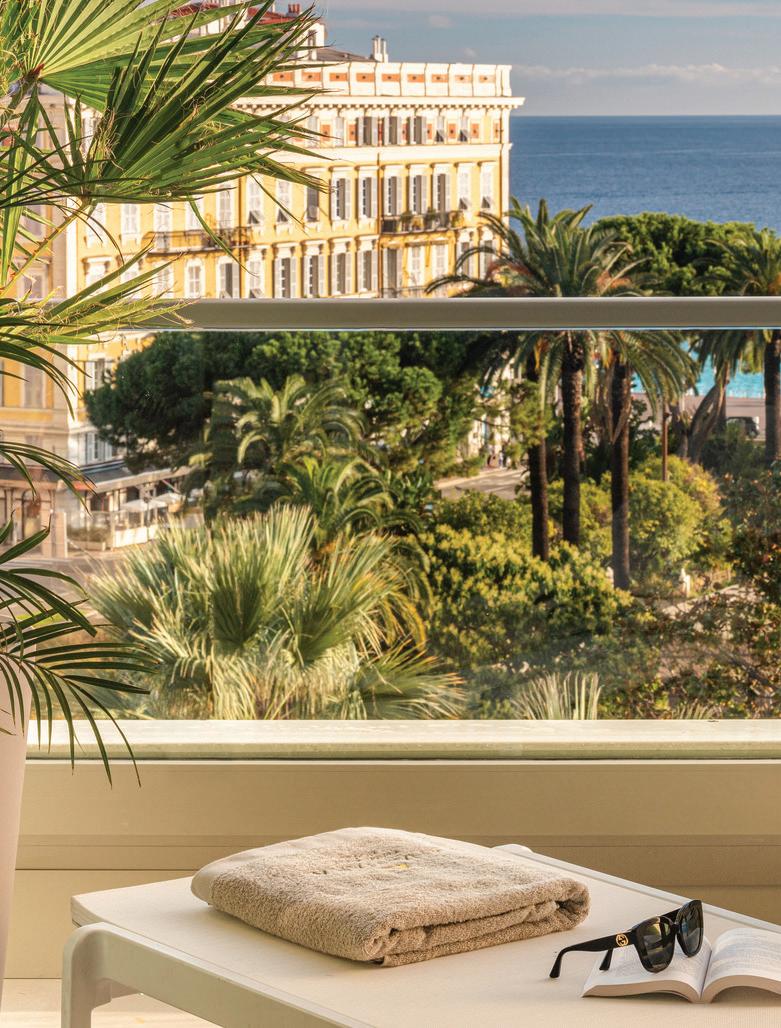
Found in most butcher shops among the old neighborhood, petits farcis make an outstanding picnic main course. Famously, this Provençal stuffed vegetable tradition allegedly began centuries ago when locals stuffed garden vegetables with leftover meat. Look for eggplant, zucchini, mushrooms, and tomatoes filled with anchovies and meat mixed with breadcrumbs.


The glamorous-but-unpretentious hotel reopened this year under the Anantara banner, thoughtfully and lovingly renovated to reflect both its Old World background and its new status as the future’s “it” hotel in Nice. Emanating that chic we associate with Nice from Hitchcock movies, ex-pat American artists, and the turn-of-century global aristocrats who brought the coastal town fame, Plaza Nice keeps things intimate with just 151 rooms, Art Nouveau interiors, and a subterranean spa. Ideally located, it lies as close to Old Town as to Chanel, with the Promenade des Anglais just steps away. Celebrity chef aficionados will swoon over its rooftop restaurant, aptly called SEEN by Olivier, a lively concept hotspot by chef Olivier da Costa.

Fly Air France from SFO to start your French fête the moment you board the plane. Stunning business class service, designer uniforms, top tier champagne, and palate-pleasing meals created by a changing array of Michelin-starred chefs set the mood on your direct flight to Paris, where you’ll continue to Nice. Start your trip in the new Air France lounge, which opened June 16 at SFO. The multi-million dollar renovation will include a dining area designed in the spirit of a Parisian brasserie. airfrance.us

 BY TERESA RODRIGUEZ
BY TERESA RODRIGUEZ
SAILGP TRANSFORMED THE WORLD OF SAILING, AND THIS YEAR’S competition was the biggest and most exciting to date as the world’s best sailors and advanced foiling technology united to push the boundaries of maritime achievement. San Francisco Bay served as the venue for the third season finale’s unforgettable weekend of sailing. With a shared passion for excellence and team spirit making it the perfect partner for this high-stakes event, Rolex proudly supported this year’s competition.
SailGP is more than just a thrilling display of speed and skill: it’s also a championship dedicated to making a positive impact. Known as “Champions for Change,” SailGP is committed to promoting inclusivity and offering clear pathways for aspiring young sailors to develop their careers. Their unique Inspire Program and Women’s Pathway Program are groundbreaking initiatives that strengthen the future of the sport. But SailGP isn’t just about cultivating talent, it’s also about preserving
the environment. The Race for the Future Impact League sets social and environmental criteria to ensure sustainability is at the core of everything they do.
Rolex has been associated with passion, precision, and team spirit in elite yachting circles for over six decades. They are unmatched in partnerships with the most successful sailors of all time, including Sir Francis Chichester and Sir Ben Ainslie. As a partner in 15 major international maritime events, Rolex dominates the offshore racing season with top tier races like Sydney Hobart and Fastnet. Additionally, Rolex supports grand prix competitions such as TP52 World Championship and global sensations like the SailGP championships with supercharged F50 catamarans. Rolex’s anchor partnerships include the Cruising Yacht Club of Australia, Yacht Club Costa Smeralda, New York Yacht Club, and Royal Yacht Squadron, cementing their status as a dominant force in the exciting world of yachting.



 BY NOËL BURGESS
BY NOËL BURGESS
SEQUELS ARE RARELY BETTER THAN THE ORIGINAL, BUT we found an exception with the second annual Healdsburg Food & Wine Experience (HWFE). Co-founded by Steve Dveris and Karissa Kruse, the pre-Memorial Day festival showcased local and international chefs, sommeliers, and winemakers for three days of celebration in the heart of Sonoma County, California.
The multi-day festivities are more than just a Bacchanalia, as it has a philanthropic initiative of agricultural education and empowerment. More than 2000 attendees, 200 wineries, 40 chefs, and dozens of sponsors/partners helped raise $100,000 for the Healdsburg chapter of the Future Farmers of America (FFA), Farm to Pantry, and Sonoma County Grape Growers Foundation.
The weekend officially kicked off Thursday, May 18, with a VIP welcome reception at Montage Healdsburg, where patrons were greeted to caviar bumps in one hand and a glasses filled with champagne in the other. Violinist Rose Crelli’s musical aperitif during the golden hour helped set the tone for an evening of fine wine provided by Jackson Family Wines and culinary delights from famed local chefs Tracey Shepos, Crista Luedtke, Duskie Estes, and Domenica Catelli.
Locals and visitors were ready to begin their HWFE “Fri-yay” with cuisine from award-winning chefs from around the world. Day two started at Dutton Ranch with Food & Wine’s Best New Chef winner, Matt Horn, serving up what he calls “West Coast BBQ,” which is a fusion of Texan and Black Southern techniques. Many found it difficult not to overindulge in fare from Horn Barbecue, so it was fortunate that a private vineyard tour of Dutton was scheduled after lunch. Learning more about the property while walking through the vineyard with wine in hand is a great way to spend an afternoon. Not to mention the calories burned!
Other Friday highlights included:
• A multi-course alfresco lunch at the picturesque Jordan Vineyard & Winery prepared by Michelin-starred chef Jesse Mallgren
• Ferrari-Carano exclusive lunch (ultra-VIP guests)
• Garden-to-table lunch at Kendall-Jackson Wine Estate with Food Network star, chef Maneet Chauhan
• Caviar and champagne seminar at Harmon Guest House
• Craft cocktails at Lo & Behold Bar & Kitchen
• An authentic Italian dinner at Aperture Cellars, prepared by Joe Sasto and Domenica Catelli
• A dinner experience at the Bricoleur Vineyards chef’s table
• Dinner at Cyrus, Sonoma County’s newest Michelin-starred restaurant (ultra-VIP guests).
Over 100 wineries from Sonoma County, Napa Valley, and other famous international wine regions converged in downtown Healdsburg for the Vintners Plaza Grand Tasting Experience. Connoisseurs wove through multiple tents in West Plaza Park, planning out a wine line-up for the 4-hour main event. Some started with sparkling wine or champagne and others went right for the reds, while many started with a classic Chardonnay. Regardless of how they started, wine lovers paired their wines with smiles by the end.
During the grand tasting, attendees had the option to head over to The Matheson for several celebrity chef demonstrations. The owner of The Matheson, Dustin Valette, and host Liam Mayclem engaged spectators as chefs Joe Sasto, Viet Pham, Stephanie Izard, and Maneet Chauhan prepared dishes and answered questions from the audience.
Other weekend highlights included:
• Saturday night concert with live music from the award-winning country duo, Maddie & Tae, hosted by Rodney Strong
• Magnum party at Bacchus Landing, featuring large format wines from the world’s top producers paired with the sounds of deejay Jason Lede of Cliff Lede Vineyards

• Zinfandel Live Wine Experience at Villa Chanticleer.

• Brunch at The Madrona, featuring chef Stephanie Izard
• Chalkboard Community Brunch sponsored by the Foley Family Charitable Foundation.
A central part of the Healdsburg Wine & Food Experience’s mission is to support the rich local agricultural culture of Sonoma County, including celebrating farmers and farmworkers—those who sustain the region’s deep legacy of viticulture and culinary excellence. Through their care and passionate diligence in growing high-quality ingredients, great food and wines are made possible. Through the lens of community, sustainability, and culinary diversity, HWFE is committed to making an impact here and beyond.
HWFE returns for May 16-19, 2024. Visit www.healdsburgwineandfood.com/ to learn more.
THE WESTIN ST. FRANCIS HOSTED AN UNFORGETTABLE EVENING that was the epitome of luxury. Esteemed guests gathered to celebrate In Bloom and the launch of Haute Living, San Francisco’s May-June Travel Issue. Guests gathered under canopies of blooming cherry trees and lush bouquets of colorful flowers by Flowers by Edgar and enjoyed culinary delights with mouthwatering hors d’oeuvres and luscious desserts crafted by executive pastry chef Jean-Francois Houdré and his team. The evening’s highlights included cocktails made by Michael Mina’s Clock Bar and exquisite wines by Chateau Montelena. The authentic San Franciscan experience left guests enchanted.









 Kat Ensign, Theresa Barajas, and Ayesha Emmett
Antonio Contreras and Alan D
Dulo Batsuh, Olivia Hsu Decker, and Charles Baker III
Mark Sullivan, Lee Gregory, Kumasi Aaron, Pernella Sommerville, John Mayo, Dakota Hileman, and Clara Shayevich
Danny Villan, Cheriann Glab, and Vincent Gotti
Fariba Zolnasr, Iraj Zolnasr, and Afie Royo
Lee Gregory and Jessica Rae
Aubrey Brewster and Bacca Silva
Kat Ensign, Theresa Barajas, and Ayesha Emmett
Antonio Contreras and Alan D
Dulo Batsuh, Olivia Hsu Decker, and Charles Baker III
Mark Sullivan, Lee Gregory, Kumasi Aaron, Pernella Sommerville, John Mayo, Dakota Hileman, and Clara Shayevich
Danny Villan, Cheriann Glab, and Vincent Gotti
Fariba Zolnasr, Iraj Zolnasr, and Afie Royo
Lee Gregory and Jessica Rae
Aubrey Brewster and Bacca Silva







 BY TERESA RODRIGUEZ PHOTOGRAPHY RANDY BROOKE
BY TERESA RODRIGUEZ PHOTOGRAPHY RANDY BROOKE
DISTINGUISHED GUESTS AND FASHION INDUSTRY PROFESSIONALS gathered on May 18 in San Francisco to view collections created by graduating students of the School of Fashion, Academy of Art University. The annual runway show also served as a platform to formally introduce the school’s new executive director, Neil Gilks, and its first Industry Advisory Board. The advisory board comprises 13 leaders in fashion design, costume design, textiles, communication, education, talent acquisition, and business across the industry at large. University President Elisa Stephens continued the evening’s celebrations while hosting a private dinner after the fashion show.
Yaya Cantu and Neil Gilks, executive director of the School of Fashion Joe Veronese, Nooshin Behroyan, and Germana Macci

 BY TERESA RODRIGUEZ
BY TERESA RODRIGUEZ
Resort Hualālai welcomed Harlan Estate and its director, François Vignaud, for the second iteration of its 2023 Winemaker in Residence series. The most luxurious of the three in the line-up, the weekend with Harlan Estate included vino-centric programming with Vignaud, including oceanside tastings, educational conversations and more. The weekend was topped off through a delicately curated meal from the resort’s executive chef, Richard Polhemus, at ULU Ocean Grill. The menu showcased local ingredients from across the island, expertly paired with various tastings of Harlan Estate’s premium wines as well as several features displaying the resort’s own selection of fish sourced from its self-sustaining pond, Lake Pūnāwai. The last Winemaker in Residence is scheduled for October 13 and will feature Domain Harlan’s The Mascot and an open-fire cooking menu.



 BY TERESA RODRIGUEZ PHOTOS SCOTT CHERNIS
BY TERESA RODRIGUEZ PHOTOS SCOTT CHERNIS
FOUR HUNDRED GUESTS WERE TREATED TO A STELLAR LINEUP of world class authors and speakers at this year’s Sonoma Valley Authors Festival. The intimate literary event, now in its sixth year, was held at the picturesque Fairmont Sonoma Mission Inn & Spa from April 28 to 30, 2023. Guests were immersed in the transformative, 3-day festival filled with interviews with famed authors in both main tent and breakout sessions, many conducted by Jeffrey Brown of PBS. Beyond exploring various literary genres, science, technology, and medical breakthroughs were revealed in “TED Talk” style presentations. Authors shared their journeys and insights throughout the festival, from the iconic Isabel Allende to newcomer Bonnie Garmus. Other luminaries included US Poet Laureate Ada Limón, humorist Dave Barry, physician and author Abraham Verghese, Pixar’s animation star Danielle Feinberg, historian Stephen Kotkin, conqueror of the seven summits Silvia Vasquez-Lavado, and biographer Stacy Schiff.
The Fairmont Sonoma Mission Inn was the perfect setting for attendees to become informed and transformed. The serene and stunning blend of indoor and outdoor spaces accommodated breakfast and lunch on the lawn and a pavilion stage equipped with cozy seating and elegant chandeliers. The intimate and comfortable atmosphere allowed guests to engage with speakers and other attendees. The first night, after a delicious buffet dinner and fireside cocktails, a poetry reading by US Poet Laureate Ada Limón ignited the imagination. The second night offered stargazing with renowned astrophysicist and scholar Alex Filippenko. The incredible event that left a lasting impression on everyone.
Save the date for next year’s festival: April 26 to 28, 2024. More details: svauthorsfest.org








 BY TERESA RODRIGUEZ GALA PHOTOS DREW ALTIZER
PERFORMANCE PHOTOS VIN VUTHIKORN
BY TERESA RODRIGUEZ GALA PHOTOS DREW ALTIZER
PERFORMANCE PHOTOS VIN VUTHIKORN
THE PRESIDIO PERFORMING ARTS FOUNDATION HOSTED A benefit performance and gala honoring the women of Iran. Proceeds from this event go towards Presidio Dance Theatre’s community outreach program and the Center for Human Rights in Iran, fighting for democracy and social justice for Iranian girls and women.
Highlights of the multi-media performance included a blend of contemporary and Sherene Melania’s signature style of ethno-classical dance and the world premiere of Unbreakable, choreographed by Sherene Melania. Unbreakable is a new social justice dance work amplifying the voices of the women and girls of Iran in their fight for freedom and justice against the brutally oppressive Islamic Republic.
Sherene Melania said, “As an Iranian American, I am very proud to have premiered Unbreakable, amplifying the voices of the women of Iran. It is the story of shir zan, or lioness, carried through generations since ancient times, a woman’s unbreakable spirit that will continue to fight until light overcomes darkness. I am tremendously grateful to our artistic advisor, Lily Samii, for sharing my vision and bringing this important story to life. I remain overwhelmed by the warm reception and everyone’s support of 25 years of justice through dance!”
FESTIVAL NAPA VALLEY BROUGHT THE LOS ANGELES-BASED modern dance group BODYTRAFFIC and its unique style to the ’Ohana Floor of Salesforce Tower for a collaborative performance with cellist Sophia Bacelar. The performance included a world premiere of a new work by composer Pedro Osuna. Atop the San Francisco company’s iconic headquarters, the breathtaking event was part of the festival’s year-round Olivia Decker Power of Music Series and featured a reception with Miner Family wines from Napa Valley.
More than 170 guests attended the event, including Olivia Decker, Daru Kawalkowski, Joel Goodrich, Rick and Karen Walker, Charles Letourneau, Elizabeth Welborn, Gary Linnen, Mark Calvano, Kara Warrin, Alice Corning, Stephanie French, Dena Grunt, Anne Kensok, Christina French Houghton, Amy Ko, Iraj and Fariba Zolnasr, Paul
Kalifeh, Tami Carlson, and Hydra Mendoza. Also attending were composer Pedro Osuna, BODYTRAFFIC Board President Gillian Winn with friend and long-term Bay Area resident Don Santa, and Tina Finkelman Berkett, BODYTRAFFIC’s artistic director and founder. Berkett is an influential dance leader and community builder, producing an original, compelling repertoire and sharing a new vision of dance across the United States and around the world.
BODYTRAFFIC’s eight dancers and world-renowned cellist Sophia Bacelar shared the stage for a program of solos, ensemble numbers, and collaborations.
Dancers Katie Garcia and Joan Rodriguez performed Three Preludes by Gershwin, choreographed by Richard Siegal. Dean Martin’s Pacopepepluto on choreography by Alejandro Cerrudo featured solos by Joan Rodriguez, Pedro Garcia, and Guzmán Rosado.







Sophia Bacelar performed “Beau Soir” by Debussy, “The Swan” by Saint-Saëns, “Moon River” by Henry Mancini, “Meditation” by Massenet, “Nocturne in C# Minor” by Chopin, and “Oblivion” by Astor Piazzolla.
The event’s centerpiece was the world premiere of an excerpt from Blockade by Pedro Osuna, choreographed by Joan Rodriguez, with Bacelar and the entire cast of dancers: Katie Garcia, Pedro Garcia, Alana Jones, Tiare Keeno, Ty Morrison, Joan Rodriguez, Guzmán Rosado and Jordyn Santiago.


This powerful dance was inspired by the dramatic history of Cuba, the choreographer’s own narrative as a Cuban refugee, and the duality of the immigrant experience. The work is a love story framed by the 1962 Cuban Missile Crisis and demonstrates the necessity of community and camaraderie in times of insecurity in the fight for human rights.
The performance brought tears to many in the audience and closed with a rousing ovation, a fitting end to an extraordinary event in this top-of-the-world setting.






 BY TERESA RODRIGUEZ
PHOTOGRAPHY DREW ALTIZER
BY TERESA RODRIGUEZ
PHOTOGRAPHY DREW ALTIZER
DR. CAROLYN CHANG, RICCARDO BENAVIDES, ALLISON CARLSON, Farah Makras, Jorge Maumer, and Marybeth Shimmon hosted a book signing for Komal Shah’s book, Making Their Mark: Art by Women in the Shah Garg Collection, at the prestigious Villa Taverna in San Francisco. The book, which has recently been featured in the New York Times, is a stunning tribute to the achievements and contributions of women and minorities in the world of art. The collection showcases the work of some of the most innovative and groundbreaking artists of our time, including Kara Walker, Julie Mehretu, and Yayoi Kusama. As Dr. Chang noted during the event, it is a testament to the power of art to inspire, challenge, and transform our perspectives. The event was inspiring, thoughtprovoking, and memorable. The book, with its stunning collection of art, is a testament to the importance of diverse voices and perspectives in our culture, and the event was a fitting reflection of this.
 Jorge Maumer and Barbara Brown
Victor and Farah Makras
Jorge Maumer, Komal Shah, Allison Carlson, Farah Makras and Riccardo Benevides
Maja Lithander Smith and Lisa Zabelle Jim and Lisa Zanze
Jorge Maumer and Barbara Brown
Victor and Farah Makras
Jorge Maumer, Komal Shah, Allison Carlson, Farah Makras and Riccardo Benevides
Maja Lithander Smith and Lisa Zabelle Jim and Lisa Zanze
THE TEAM AT 181 FREMONT COMMEMORATED THE CREATORS OF Citizen Film and their latest documentary, Racing on the Spectrum, on Tuesday, May 23. This poignant film chronicles the lives of three young, autistic professional race car drivers as they navigate various obstacles in their personal and professional lives. The event featured exclusive glimpses of the film, the opportunity to meet with renowned NASCAR driver Armani Williams (who appears in the documentary), and the chance for nearly 100 guests to support the $850,000 fundraising campaign to bring this superb documentary to a larger audience.









NOTHING BRINGS A SMILE TO MY FACE LIKE DRIVING THROUGH the emerald-leafed vineyards of Napa Valley on a bright spring day. So, when I got the call to take part in the Mercedes-Benz Test Drive Experience at Auberge Resorts Collection’s Stanly Ranch, I jumped at the chance. Having owned a classic Mercedes-Benz, I was excited about the opportunity to test drive their newest and most innovative models.
To kick off my test drive experience, a Mercedes-Benz concierge dropped a 2023 EQS SUV with 4MATIC all-wheel drive at my home for me to drive to the test drive location, Auberge’s Stanly Ranch, just outside Napa, California. The EQS SUV offers spacious comfort for up to seven people. With a fluid and futuristic aesthetic, the luxurious interior combined the newest tech with the classic Mercedes’ attention to detail. The heads-up display was convenient and featured useful information without being a distraction, while the AI-equipped MBUX Hyperscreen system supplied hands-free access to an impressive menu of infotainment options.
Looking a bit deeper into the EQS SUV, I discovered it is the next step on Mercedes-Benz’s road to an all-electric future. By the end of the decade, they will be ready to go all-electric wherever market conditions permit. In many ways, Mercedes-Benz is adjusting to the future today. They’ve already committed to changes throughout the entire value chain, from development and the supplier network to its own production. For example, they use secondary steel to produce various components and systems. Because of its efforts, Mercedes-Benz AG has had its climate protection targets confirmed by the Science Based Targets Initiative (SBTI).
Rolling across the Golden Gate Bridge, I saw the Marin Headlands ahead and pressed the accelerator. The synchronous front- and rear-axle motors of the 4MATIC all-wheel drive tackled the ascent with ease. Cornering ability was notably smooth and even. Each stage of the hour-long drive to Stanly Ranch by freeway, state road, and country lane was a delight.
On arrival at Stanly Ranch, I was greeted by two polite cowboys. One escorted me to the check-in desk while the other valeted my EQS SUV and transported my gear to a comfortable Rambler 2-room suite. After checking in and receiving a property orientation from the helpful desk staff, I moseyed over to the Mercedes-Benz Test Drive Experience pavilion for my 30-minute test drive.
At the pop-up pavilion I was offered a Mercedes-AMG SL model to test drive, in addition to the brand’s fully electric vehicles from Mercedes-EQ. Specific models available included: EQS sedan, EQS SUV, EQE sedan, EQE SUV, AMG EQS sedan, AMG SL 55 and AMG SL 63. I chose the AMG SL 63 convertible, going straight for the raw power.
As I slid into the driver’s seat, Nancy, my accompanying product specialist, filled me in on the impressive vehicle specs. With an AMG Speedshift MCT 9G 9-speed automatic transmission, standard allwheel drive and all-wheel steering, plus a twin-turbo intercooled 4.0-liter V-8 engine with diecast alloy block and heads, and 590 poundfeet of torque, the 577-horsepower AMG SL 63 has excellent handling and the power of a hurricane.
With the push of a button, the peaceful spring afternoon gave way to thunder. The throttle was perfectly responsive as we pulled out of the
parking lot and began roaring down the open road. I switched through the several adjustable drive modes, eventually settling on Sport+. What a treat!
We cruised at a leisurely pace through country roads south of Napa for a bit, enjoying the variety of curves and straightaways. After several miles, we swung slowly onto Highway 29 to head back toward Stanly Ranch. With very little traffic, I allowed myself the luxury of slowing to 10 miles per hour before stepping on the throttle to test the acceleration. In under three thundering seconds, I met the speed limit of 60 mph and reluctantly backed off the pedal. Turning back into the driveway at Stanly Ranch felt like bringing a thoroughbred into the barn after running the Kentucky Derby: satisfying, but a bit sad because the race was over.
After my test drive, I hung around the pavilion for a while, talking to guests who had come over to take a drive themselves. They had all been as impressed as I. Saks had a pop-up stand there with some stylish merchandise and an immersive digital store featuring a unique, curated collection of road trip essentials from Saks.com. Some guests had purchased sporty sunglasses and scarves or hats for the drive. They all looked rather dashing!
With the sun going down, I headed to my suite to refresh before dinner. With vineyards approaching the cottage edge, the Rambler single bedroom suite brought the outdoors inside. My large king suite featured two rooms with a dual fireplace that could be enjoyed from the living room or the bedroom. The separate living room was well-appointed with a sectional sofa, dining table for four, and a wet bar. Large living room doors opened onto a private terrace with lounge chairs, outdoor dining, and a gas firepit. The cozy bathroom featured a sensational, freestanding soaking tub and both indoor and outdoor showers.
For dinner, I chose to dine at Bear, the keystone of Stanly Ranch’s culinary offerings. As a culinary adventurer, I was happy to see some unusual plates mixed in with the tried-and-true options on offer. To start, I chose the bison tartare with fermented cabbage, red onion jam, and puffed tendon (similar to chicharrones on a Mexican menu). Next was basil-kombu brined cedar roasted steelhead trout with baby leeks and charred citrus accompanied by sugar snap peas in cultured coconut cream, chili oil, fermented calamansi, and habanada. For dessert I enjoyed the 9th & Larkin 72% chocolate mousse, pistachio praline, and candied cocoa nibs. Once the feast was over, I retired to my suite for a relaxing evening by the gas firepit with a delightful glass (or two) of Napa Cabernet Sauvignon.
The next morning, I was greeted by the springtime Napa sun, so I wandered over to Gavel, a buzzing coffee shop complete with Chef Harry’s freshly baked pastries and specialty roasts from Sightglass Coffee. Mocha in hand, I was primed to lounge in my private cabaña by the lavender pool and swim in the soft, saline water until it was time to depart Stanly Ranch.
The polite cowboys made departure just as smooth as arrival. One retrieved my EQS SUV, while the other transported my gear to the valet station and safely stowed it in the spacious cargo hold. I settled into the cockpit and heard a friendly “See you next time, Mister Richards. I hope you enjoyed your stay.”
You will see me next time, polite cowboys. And I certainly enjoyed my stay.



 BY BECCA HENSLEY
BY BECCA HENSLEY
SUN DAMAGE AND THE NEED TO PROTECT OUR SKIN LOOMS LARGE IN our lives. We’ve all heard it. We all know it. We all do the best we can. We can all do better. I was talking to a dermatologist friend the other day who reminded me that even sunshine filtered through windows can damage our skin. She mentioned a famous case in her medical textbook that showed the before and after photos of a woman who worked at the same desk in an office for decades where her left side faced the window. After all that time, the left side of her face showed a drastic amount of aging, while her right side had aged at a normal pace. That story made an impression on me and spurred the subject of this issue’s Haute Beauty column.
Folks, we need sunlight in small doses, but let’s be careful. Let’s take care of our skin. To whit, here’s a compendium of tips and products sure to inspire sun safety. First, some advice compiled exclusively for Haute Living, San Francisco from Dr. Marc Hurlbert, CEO of the Melanoma Research Alliance. Dr. Hurlbert is a pharmacologist by training and previously served as the MRA’s chief science officer.
1. WEEKEND SKIN WARM GLOW
This 2-in-1 UV fighter from Iris&Romeo combines a pot of gold duet with two skincare steps in one product. With agereversing and brightening vitamin C and a transparent mineral SPF, the serum-like, glow-making lotion can be used daily to even skin tone, soften wrinkles, prevent sun damage, and suffuse the skin with golden hour glam. irisandromeo.com
2. UV DAMAGE RESCUE AFTER SUN CALMING SERUM
From Violette_FR, this soothing, hydrating holy grail in a bottle harnesses naturally occurring polyglutamic acid for deep hydration, centella asiatica (aka Indian pennywort) extract to calm and support reparative skin cells, and Melitane™ peptide to reduce inflammation and boost protective melanin. One hundred percent of users reported improved skin after two days of use. violettefr.com/products/rescue-duo
3. OMBRE DEL SOLE
Petaluma and Bay Area-based Benedetta Skincare has your back. Always on the lookout for clean and nontoxic skincare alternatives, they created the Ombre Del Sole series (Defense & Repair Duo and Crème) to combat oxidative stress where it starts—deep within the dermis. The products naturally filter UVA and UVB rays while encouraging healthy cell renewal and regeneration. benedetta.com
4. PAVISE DYNAMIC AGE DEFENSE SPF

The brainchild of Sophie Bai, a Harvard and MIT-educated scientist, this unique product line been the talk of the suncare market. It uses patented DiamondCore® Shield Technology to scavenge and neutralize UV-generated reactive oxygen species (ROS) that age skin and cause hyperpigmentation. An all-inone elixir, Dynamic Age Defense SPF treats, moisturizes, and sheaths the skin with protection. pavise.com
5. ECLIPSE SPF 50+
An ultra-sheer, fast absorbing, water resistant formula with a weightless finish, Eclipse SPF 50+ by Innovative Skincare combines transparent titanium dioxide and micronized zinc oxide with vitamin E for stunning results in two shades. isclinical.com

6. NUDESTIX NUDESCREEN DAILY MINERAL VEIL SPF 30
This 100 percent reef-safe sunscreen, made with 15 percent non-nano zinc oxide hydrates, is an oil-free lotion. Its veganpowered extracts melt into the skin to help protect against the sun’s broad-spectrum UVA and UVB rays as well as blue light. www.nudestix.com
7. BONDI SANDS SPF 50 FRAGRANCE FREE SPF 50

Tested in Australia, this star-powered sunscreen hydrates and protects with SPF 50 UVA and UVB protection. Free of fragrance, the non-greasy formula remains water resistant for up to 80 minutes. Expect to feel moisturized for a full 72 hours. bondisands.com

8. PROTECT RX
From Europe’s number one professional skincare brand Babor, founded by a biochemist in 1956,
There is no such thing as a “healthy tan.” A tan is a sign that your skin is already in distress. A tan provides minimal protection.
Seek out shade where possible when outside. This is particularly important during the hours between 10 a.m. and 2 p.m. when the sun is at peak intensity.
When choosing a sunscreen, the best one for you is one that you’ll wear every day. That said, we suggest looking for three things when shopping for sunscreen: 1) broad spectrum protection (so you know it will protect your from UVA rays which cause aging and UVB rays which cause sunburn);
2) SPF30 or higher; and 3) while no sunscreen is waterproof, look for one that offers water resistance.

Yes, you do need to wear sunscreen on cloudy days. Up to 80 percent of UV rays can penetrate cloud cover. Also, UV damage is cumulative, so every day counts.
Even the best sunscreen in the world cannot protect you if you don’t apply it correctly. For proper protection, you should be using about one ounce— enough to fill a shot glass—for your body and reapply it every two hours or after you get out of the water.

5 THINGS TO KNOW ABOUT SUNSCREEN & SUN SAFETY FROM DR. MARC HURLBERT
 BY BECCA HENSLEY
BY BECCA HENSLEY
NO MATTER HOW WIDE-BRIMMED OUR HATS AND SHADOWseeking our intentions, most of us will have managed to get more sun this summer than anticipated. Cumulative over our lifetime, sun damage takes a toll. Luckily, spas worldwide have developed a scope of treatments to combat the sun’s ill effects, re-hydrate heat-parched skin, tone and brighten the visage, and relieve sunburn aches and pains. Just want to feel relaxed? That goes without saying. Here are a few treatments near and far to put on your list.
Arguably Hawaii’s most popular island, postcard-perfect Maui brims with paradisiacal beauty. At Andaz Maui on Mokapu Beach, the aloha vibe flows freely—as does fun from its multi-level infinity pool and satisfaction at its Japanese American fusion restaurant by Iron Chef Masaharu Morimoto. Check into Awili Spa & Salon to unwind and replenish with the Radiance Facial. The treatment utilizes Natura Bissé® Vitamin C+C line—complete with carrot oil and bitter orange extract—to lighten hyper pigmentation, prevent premature aging of the skin, and protect against sun damage.



Awash in regional motifs and an indigenous spirit, Conrad Tulum Riviera Maya doesn’t feel like a big brand hotel. It wields a boutique aura, cemented in its stunning wood and stone-built spa. Designed to suggest a cenote, the spa feels like an underground hideaway with bits of scattered light coming through a Pantheon-like skylight in the ceiling. Not surprisingly, the Conrad Spa Tulum menu offers an array of treatments with pre-Hispanic references, such as the Nopal Restorative Ritual. Known for its powerful healing abilities, nopal, also known as prickly pear cactus, joins agave to hydrate and revamp the skin with an all-over body mask, mist, and gel application.
Jacques Cousteau referred to the Baja Peninsula as the “aquarium of the world.” Anyone who’s seen the whales spewing and spouting in wintertime knows that’s an apt name for this desert-meets- beach playground. At tony Four Seasons Resort’s Oasis Spa, guests may step away from the pool or beach and retreat into quietude. Look dapper for dinner after the Men’s Environmental Repair Facial, a ritual designed to purify and energize the skin, minimize the appearance of pores, fight against skin damage, and address ingrown hairs.
ANANTARA VELI MALDIVES RESORT
THE TREATMENTS: VITAMIN-SEA AND ALOE AFTER-SUN SOOTHER
It’s a long way to go for a spa day, but you’ll thank yourself once you arrive. Breathe deeply at Anantara Veli Maldives Resort, an otherworldly island haven known for its overwater bungalows, restaurants by the water, and array of land and water activities. Enveloped in its Balance Wellness by Anantara spa, heal sunravaged skin with Vitamin-Sea, a vitamin C-boosted massage plus collagen facial touted to protect from sun exposure and address elasticity and firmness. A little pink despite all that sunscreen? Try the After-Sun Soother which cools with aloe vera gel, black tea, and a mint poultice compress.
AMANYARA, TURKS AND CAICOS

THE TREATMENT: EXOTIC COCO SUN SALUTATION (A PRE- AND POST- RITUAL)
Tranquil and sacred in mood, Amanyara epitomizes Aman’s mainstay pillar that ensures the possibility for transformation on every front. Located on Provo, Turks and Caicos’ most touristed island, this haven lies in a less-thronged area on the northwest coast. In the temple-like spa, treat yourself to the Exotic Coco Sun Salutation, a 3-step ritual that begins with a sea salt and coconut oil exfoliation followed by a warm oil body massage. It ends with an application of coral-safe sun protector. After a few days of sunbathing and scuba diving, regain your perfect skin with a curative aloe vera wrap, a scalp and hair treatment, and a rose crystal face massage.

THE TREATMENT: HYDRATING DRENCH

Bring an extra suitcase for your stay at The St. Regis Bal Harbour Resort which occupies prime shopping territory amid exclusive Bal Harbour Village. Its St. Regis Spa, one of the few Forbes 5-star-rated spas in the United States, reigns as a refuge from urban surroundings. A sanctum that spans 14,000 square feet with 12 treatment rooms, whirlpool, sauna, steam room, and relaxation lounge, it brandishes an all-new spa menu created as an ode to socialite Caroline Astor, whose son opened the first St. Regis in New York. Recalibrate with the 60-minute Hydrating Drench wrap which works miracles on dry skin. I am sure Caroline would have loved it.

THE TREATMENT: MORPHEUS8
A celebrity hub and happening scene, Malibu vaunts some of the world’s best beaches and surfing hotspots. Check into the Malibu Beach Inn on Carbon Beach where the tranquil sound of the sea will be your lullaby. During your stay, push yourself along the area’s famous hiking trails, shop at peerless boutiques, and dine at an al fresco table at see-and-be-seen cafés. Save late afternoon for renewal in Malibu Beach Inn’s Cure Daily Spa, home to a bevy of results-driven treatments. Try Morpheus8, a toning and contouring micro-needling treatment that uses radio frequency to improve skin quality, contour the face (and body), remodel collagen, and soften fine lines.
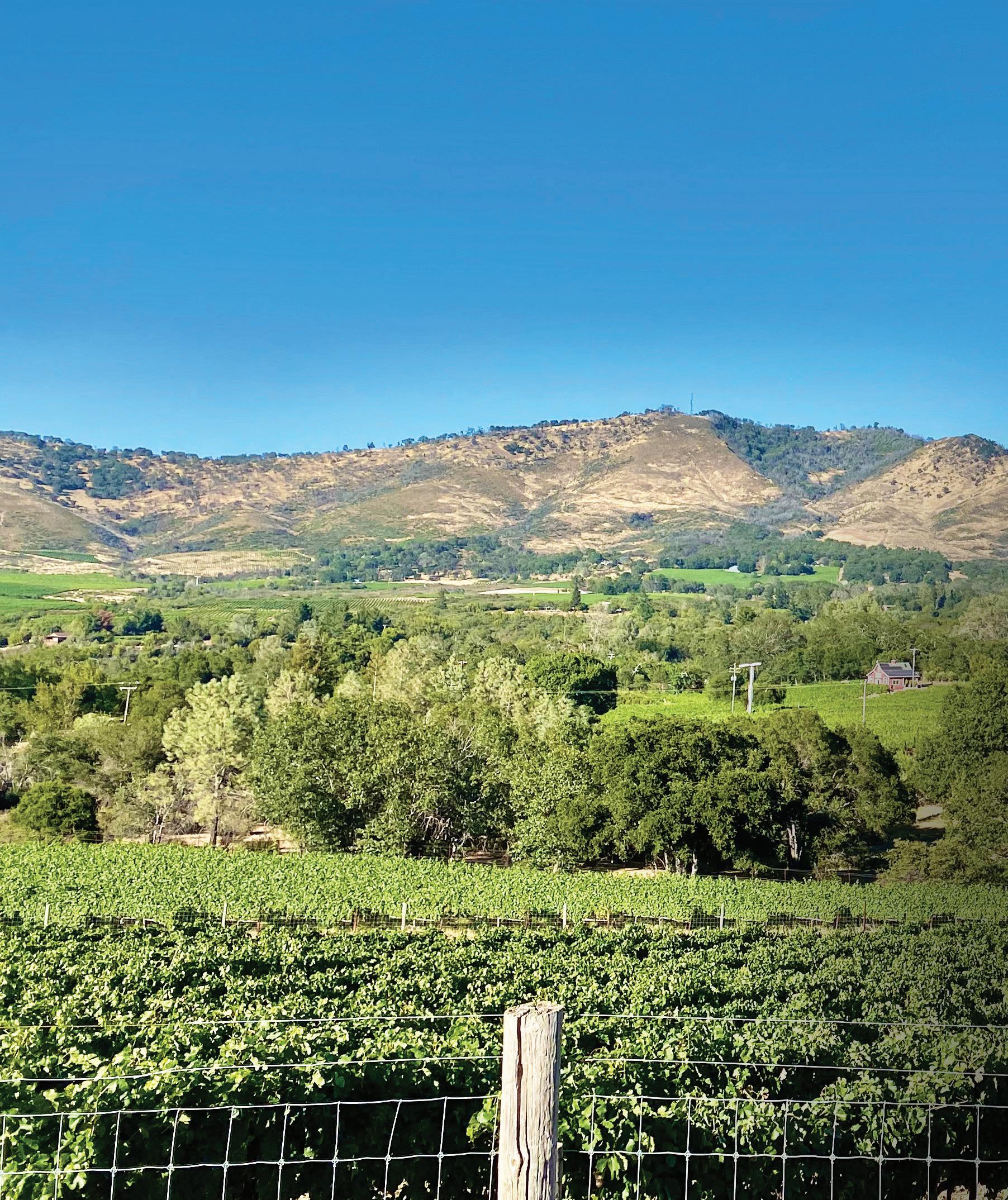
NAPA VALLEY HAS LONG ENJOYED A REPUTATION AS the premiere wine-growing region of California and the USA. The gated, private property at 3265 Soda Canyon is situated on one of the best vineyards in Atlas Peak wine region where high-quality vines produce the grapes which are sold to excellent wineries in Napa Valley. A spacious residence with timeless wine country architecture and a separate red barn serving as the vineyard manager and workers’ office, this property offers the indoor-outdoor Napa Valley lifestyle, a breathtaking view, and the charm of the wine country living.
Napa Valley is the most renowned wine growing region in the United States and the world. The Napa Valley appellation is unique due to the diversity of soils in such a small area. The area’s topography supports a wide variety of soils: over 30 different types have already been identified, ranging from well-drained, gravelly loams to moisture-retaining, silty clays. These soils vary in depth and fertility. The structure and composition of the soil significantly affect vegetation, including the grapes.
Napa’s wine reputation has risen to meteoric popularity among the Bay Area’s elite. Napa Valley is recognized worldwide as host to international legions of wine enthusiasts throughout the year. In 2019, the gross production value of Napa Valley agricultural products was reported at $937,961,800. Atlas Peak is the most prominent feature of the area; 3265 Soda Canyon is
located in east central Napa County, within the Atlas Peak AVA. The AVA draws its name from the highest peak in the appellation, but is perhaps more defined by the shallow Foss Valley, where most vineyards lie.

The unique land formation of Foss Valley allows for the infiltration of cooling breezes from San Francisco Bay, which moderate the daytime high temperatures experienced during the growing season. It also sits above the coastal fog that regularly blankets Napa Valley, so, despite the cooler temperatures, it enjoys more sunlight.
Environmental restrictions and controls on new hillside development significantly constrain new vineyards on the surrounding hills. Planned Napa vineyard acres were reported at 34,598 in 1995 and have grown to only 43,430 in 2018. Therefore, vineyard values have been consistently stable in this market. There has been a steady demand for Napa properties as the valley’s global reputation as the home of the best wines of the New World grows.
Entering the stately iron gate, tall Italian cypress trees line the driveway. This enchanting private vineyard estate is prominently sited on 41.76 acres in the Atlas Peak wine region, with 28.18 acres of high quality, plannable land with the best soil for complex wines grown on Soda Canyon’s peak, known for its rocky soil and undulating elevations. The 26.76 aces of currently planted vineyard are mostly modern style, including 14.35 acres of Cabernet Sauvignon—the king of grapes within this valley—4.23 acres of Merlot, 2.88 acres of Malbec, 1.33 acres of Zinfandel, 1.98
acres of Sauvignon Blanc, 0.87 acre of Tempranillo, and 1.42 acres ready for replanting. The vineyard is certified organic by CCOF and CDFA. The grapes produced at this vineyard are sold to local Napa Valley wineries.
The parcel’s zoning designation is Agricultural Watershed, which allows for agricultural uses, one singlefamily dwelling unit, a guest cottage, and farmworker housing. The property is improved with several structures, including an estate residence, a red barn, a vineyard office, and equipment storage.
The spacious 5,487-square-foot residence with timeless wine country architecture features large windows in each room facing panoramic views of the vineyard, hills, natural landscape, and beyond. Bright sunlight shines into every room, bringing in the warmth and charm of wine country.

The open kitchen features the finest materials, a large granite countertop island, and a dining bar. The formal dining area looks out upon the magnificent view of the vineyards, perfect for hosting dinner events and gatherings.
The living room, with a fireplace and attached large deck, showcases a panoramic view of the vineyard and dramatic vistas. Enjoy sunrise and sunset over the vineyards with a glass of wine.
The master suite is located at the end of the hall on the second floor and features a marble bathroom, walk-in closets, a fireplace, and large windows with an attached deck facing a dramatic view of the vineyard and beyond. It brings privacy, peace, and tranquility. Two guest bedrooms are also located on the second floor, each with a bathroom. Two more bedrooms on the third floor feature vaulted ceilings and panoramic views of the hills and vineyard.
The basement includes a wine cellar, one bathroom, and an office which may also be used as an additional bedroom for staff.
A separate, two-level, red barn building features four rooms and one bath. It serves as an office building for vineyard staff and storage. This separate building, as bonus rooms, can also be used for other purposes.
Total 41.76 acres.
• Total 28.18 acres of high quality, plannable land good for vines, rocky with undulating elevations
• Total 26.76 acres currently planted vineyards, include:

- 14.35 acres of Cabernet Sauvignon
- 4.23 acres of Merlot
- 2.88 acres of Malbec
- 1.33 acres of Zinfandel

- 1.98 acres of Sauvignon Blanc
- - 0.87 acre of Tempranillo
- 1.42 acres ready for replanting.
For sale at $14,995,000. www.3265SodaCanyon.com


EXPERIENCE THE ULTIMATE SUMMER CELEBRATION AT Festival Napa Valley 2023. This flagship festival in California’s wine country is back for its 17th season with an incredible line-up of music, food, and wine events that cater to every taste and budget. Headliners include Carrie Underwood, Matteo Bocelli, Pablo Sáinz Villegas, Lucas Meachem, and Time for Three. With more than 60 concerts and events at iconic venues scheduled from July 8 through 23, this is the summer event you won’t want to miss.
Discover all the insider details about Festival Napa Valley straight from the president and CEO, Rick Walker.

HL: What can guests expect during this year’s Arts for All Gala?
RW: The gala is among the most magical nights of the festival—it’s when the community comes together to enjoy the best in food, wine and music while supporting our mission of making the arts accessible to all. This year, the incredibly talented, 8-time GRAMMY® Award winner Carrie Underwood is our headliner. Michelin-starred chef Charlie Palmer is working his magic to create a special dinner paired with wines from Far Niente and Nickel & Nickel. And the live auction will feature a collection of “money can’t buy” experiences. The Arts for All Gala has become one of the nation’s premier arts charity events, raising over $20 million to date to support free and affordable access to world class performances, educational programs, original programming for youth, and scholarships.
HL: What are some additional must-see experiences at this year’s Festival Napa Valley?
RW: Here are a few: Opening Night at Charles Krug July 14 will feature Spanish guitarist Pablo Sáinz Villegas in Rodrigo’s popular Concierto de Aranjuez, Russian pianist Alexander Malofeev performing Rachmaninoff’s Second Piano Concerto, and a world premiere by the talented young composer, Yang Bao, winner of this year’s Maria Manetti Shrem Daniel Brewbaker Composer Prize. Afterward, we will celebrate with a dinner at Dario Sattui’s magnificent Castello di Amorosa.
The following day, July 15, is Taste of Napa at the Meritage Resort. Expect a fun-filled day with more than 70 participating wineries, breweries, restaurants, culinary artisans, games, live music, and more. It really is a perfect summer afternoon in Napa.
That evening, rising star vocalist Matteo Bocelli and violinist Francisco Fullana take the stage for an Olivia Decker Power of Music concert, followed by dinner at the stunning HALL St. Helena.
Another highlight is this year’s Manetti Shrem Opera, Donizetti’s Don Pasquale, with an amazing cast and a new state-of-the-art production on July 21 at Charles Krug.
This season we are celebrating stories of courage, resilience, and hope. On July 18, we are presenting the Northern California premiere of Lera Auerbach’s Symphony No. 6, “Vessels of Light,” dedicated to Chiune Sugihara, the Japanese diplomat who saved thousands of Jewish refugees
during World War II. Also on that program is Gordon Getty’s Joan and the Bells, honoring the life and martyrdom of Joan of Arc. On July 21, we bring together a star-studded ensemble of dancers displaced by the war in Ukraine for Reunited in Dance
HL: Why are patron packages the best way to experience Festival Napa Valley?

RW: Napa Valley has a tradition of hospitality second to none. Vintners and others in the community roll out the red carpet for festival guests. The only way to experience vintners luncheons, patron dinners, fashion shows, and other special events is with a patron pass which also includes premium concert seating, valet parking, and access to the very popular patron lounge at the concerts. The passes afford ultimate access while helping to support the festival’s core mission.
HL: What are the best ways to make the most out of the Festival Napa Valley experience?

RW: The festival has been discovered by people everywhere, who share a passion for the best things in life: music, wine, culture, friendship. Whether you come for a day or the full season, be open to meeting new friends from around the world. Passes sell out quickly, and I recommend reserving your place early. You can secure your spot for the 2024 summer season as soon as passes go on sale in August.
HL: How does Festival Napa Valley make the arts accessible to all?
RW: Every day, from July 9 through 22, we present admission-free daytime concerts at CIA Copia in downtown Napa. These include Festival Live! concerts with participants from the Frost School of Music and Blackburn Music Academy, Bouchaine Young Artist concerts, and family-friendly Novack Concerts for Kids. Evening concerts are priced at $35—affording everyone an opportunity to see world class performances. The festival runs two tuition-free summer conservatories for pre-professional musicians: the Blackburn Music Academy for instrumentalists in partnership with Frost School of Music and the Manetti Shrem Summer Vocal Conservatory for singers.
Throughout the year, the festival presents a wide variety of arts education programs, partnering with schools, assisted living facilities, Napa Valley College, and Napa County Boys & Girls Clubs, among others.

 Lera Auerbach
Lera Auerbach
HL: Does Festival Napa Valley make a lasting impression on guests?

RW: Nowhere else on the planet is there an event like Festival Napa Valley. The natural beauty of the region, the generous hospitality of the vintners and the community, and the diversity of people, architecture, and styles make the festival a draw for artists and audiences alike. We are proud that virtually everyone who participated in Festival Napa Valley in the early days, starting in 2006, is still involved—and even more so 17 years later. And we have become a magnet for artists around the globe who are more than happy to come as often as we will have them! The festival community is warm and welcoming and continues to grow with openness and generosity. We have something very special and it keeps getting better.
HL: How has Festival Napa Valley enhanced your appreciation of LIVE music?

RW: There is no substitute for sharing the experience of a live performance. During the pandemic, we presented concerts virtually and were surprised when they went viral, reaching millions around the world. This allowed us to reach new audiences. However, it felt unfulfilling for us and, I’m sure, for the artists performing to empty spaces. Festival Napa Valley was one of the first festivals in the country to return to live performances in 2021, and it was an emotional catharsis. Jennifer Hudson was our gala headliner that year, performing for the first time since before the pandemic, and she loved it so much she didn’t want to leave the stage! The audience felt the same. As humans, we respond to music and dance best when we see it live in the company of others, especially when the quality is very high. This is what we aspire to achieve with every performance at Festival Napa Valley.
HL: Does Festival Napa Valley enrich the community?
RW: The festival presents international stars and emerging talent in free and affordable concerts during the summer season and year-round through the Olivia Decker Power of Music Series. The festival also offers inspiring education programs for youth, families, and seniors; tuition-free summer academies for vocalists and instrumentalists; and scholarships for talented students. In all these ways Festival Napa Valley plays an important role in creating a thriving, healthy, and engaged community and fulfills its mission to bring the arts to all. For more information or to purchase tickets visit www.festivalnapavalley.org

Eight-time GRAMMY® award-winner Carrie Underwood headlines the Arts for All Gala.

Opening night with Festival Orchestra Napa features guitarist Pablo Sáinz Villegas, pianist Alexander Malofeev, and this year’s Maria Manetti Shrem Daniel Brewbaker Composer Prizewinner, Yang Bao, unveiling a world premiere.

Matteo Bocelli and Francisco Fullana performing with Festival Orchestra Napa, conducted by Eugene Kohn, an Olivia Decker Power of Music concert..
2023 GRAMMY® winning trio Time for Three makes its Festival Napa Valley debut.
Festival Napa Valley Dance Gala: Reunited in Dance, directed by Xander Parish and featuring Ukrainian and Russian ballet soloists displaced by the war.
Gordon Getty’s choral works Annie Laurie, Shenandoah and the cantata Joan and the Bells, with Melody Moore, Lisa Delan, Lester Lynch, and Volti Chorale
Northern California premiere of Lera Auerbach’s Symphony No. 6, “Vessels of Light,” featuring cellist Kristina Reiko Cooper and soprano Ronit Widmann-Levy and dedicated to Chiune Sugihara, the Japanese diplomat who saved thousands of Jewish refugees during WWII.
2023 Manetti Shrem Opera: Donizetti’s Don Pasquale directed by Jean-Romain Vesperini with Constantine Orbelian conducting Festival Orchestra Napa, starring Lucas Meachem, Alexey Lavrov, Serena Sáenz, and Xabier Anduaga

Taste of Napa, Festival Napa Valley’s signature celebration of food, wine and music, at The Meritage Resort and Spa, with music by Shelly Berg and the Frost School of Music All-Stars and Broadway singer Christina Maxwell
Jazz @ Charles Krug starring Gregg Field and the Frost School of Music All-Stars performing Mancini and Gershwin at the Festival Napa Valley Stage at Charles Krug.
THE SAN FRANCISCO OPERA’S 100TH ANNIVERSARY CONCERT TOOK place at War Memorial Opera House on June 16, 2023. The musical program spanned their first century, featuring the San Francisco Opera Orchestra and Chorus, conductor Eun Sun Kim, formal music director Sir Donald Runnicles, and former principal guest conductor Patrick Summers, along with a host of star soloists in selections inspired by SFO’s history. The one-night-only concert spectacular was augmented by a special dinner with the artists fundraiser.

Founded in 1923 and only the third American opera company to reach the centennial milestone, the San Francisco Opera united Bay Area audiences and the global music community in this celebration. The evening’s specially curated program traversed the company’s musical styles, artistic traditions, and thrilling moments. Pairing many of SFO’s beloved artists with unforgettable music and archival imagery spanning their first 100 years, this celebratory retrospective was sensational and powerful. I was overwhelmed with emotion and pride.
Befitting SFO’s early emphasis on Italian repertoire under founder Gaetano Merola and reemphasized throughout the past century, the centennial program represented the Italian opera canon with selections from the works of Giacomo Puccini, Giuseppe Verdi, Umberto Giordano, Gioachino Rossini, and Arrigo Boito. Riveting choral scenes from Puccini’s Tosca and Boito’s Mefistofele, prepared by San Francisco Opera Chorus Director John Keene, closed the program’s two halves.
The evening featured selections from Wagner’s Tristan und Isolde, Die Meistersinger von Nürnberg, and Tannhäuser, three works that marked a dramatic acceleration for SFO on the way to opening the 1935 season with its first-ever Ring cycle. European masterpieces of the 20th century were signified with selections from the works of Benjamin Britten and Erich Wolfgang Korngold. Excerpts from Piotr Ilyich
Tchaikovsky’s Pique Dame (The Queen of Spades) and Leoš Janáček’s Její pastorkyňa represent the proud Slavic traditions first explored by the company in the 1930s and later presented with unforgettable performances and premieres that reintroduced many powerful masterworks into the repertory of American opera.
San Francisco Opera’s status as a pioneer in staging long-overlooked baroque (and earlier) operas was highlighted with selections from Claudio Monteverdi’s L’Incoronazione di Poppea, which entered their repertoire in 1975, an aria from Handel’s Xerxes, and the rarely heard mezzo-soprano aria “Amour viens rendre à mon âme” from Hector’s Berlioz’s 1859 French version of Christoph Willibald Gluck’s Orfeo ed Euridice. The operas of Wolfgang Amadeus Mozart, which entered SFO repertory comparatively late, and the French repertoire, a staple since the first season, were denoted with music from Mozart’s Don Giovanni and Charles Gounod’s Roméo et Juliette.
The evening’s program blended contemporary song into the program via John Adams’ “Batter My Heart” from Doctor Atomic, one of three
operas by the Bay Area composer to have its world premiere on the War Memorial Opera House stage. A highlight from Stephen Sondheim’s Follies was presented as a tribute to SFO’s presentations of American musical theater.



The evening’s program performed by artists who have performed in San Francisco for many decades: sopranos Karita Mattila, Ailyn Pérez, Patricia Racette, Nina Stemme, Heidi Stober, Adela Zaharia; mezzo-sopranos Susan Graham, Daniela Mack; tenors Lawrence Brownlee, Michael Fabiano, Brandon Jovanovich, Russell Thomas; baritones Lucas Meachem, Brian Mulligan; and bassbaritone Christian Van Horn.

My top four favorite performances were: my friend, tenor Michael Fabiano, founder of ArtSmart mentorship programs for talented students in underserved area which I have been supporting, performed “Vicino a te” from Andrea Chenier. This most powerful and romantic voice of the evening was not a surprise, as Michael starred the leading role of poet Andrea Chenier in the San Francesco Opera’s 2016 season. This beautiful aria spoke of Chenier falling in love with the young aristocrat Magdalena during French Revolution while in prison awaiting the guillotine.
Soprano Patricia Racette, who completed the Merola Opera Program in 1988 and Adler Fellowship in 1989 and performed in three productions I sponsored at Marin Opera in 1992: La Boheme, Carmen, and The Merry Widow. She has blossomed into an operatic superstar. At the centennial concert, she performed Stephen Sondheim’s “Losing My Mind” from Follies.
Baritone Lucas Meachem performed Pierrot’s “Tanzlied” from Die Tote Stadt by Erich Wolfgang Korngold, which contains this nostalgic lyric: “My yearning, my obsession, they take me back in dreams.” This 1920 masterpiece had its San Francisco Opera premiere in 2008.
Bass-baritone Christian Van Horn performed Scarpia’s Act I in “Te Deum” from Tosca by Giacomo Puccini. In his role as the chief of police, Scarpia gloats at the thought of having Cavaradossi executed for hiding a prisoner, thereby facilitating his possession of Cavaradossi’s lover, Tosca. This popular opera was performed at the San Francisco Opera’s first season in 1923, at the inauguration of the War Memorial Opera House in 1932, and for SFO’s re-opening after the pandemic shutdown in 2021, when Michael Fabiano performed Cavaradossi.






The festive celebration had a special dinner with the artists. Very rarely do artists have dinner with audiences after performances. Those attending the dinner enjoyed this celebratory occasion amid décor inspired by the company’s past, present, and future. I was seated next to bass-baritone Christian Van Horn and enjoyed getting to know him: he is from Long Island, New York, not the Netherlands. The co-chairs for the dinner with the artists were San Francisco Opera Association board members Anna Fieler, Sue Marineau, and Jason Phillips. Proceeds benefit SFO’s commitment to artistic excellence and innovation for a second century.
One other special treat of the evening was an invitation for all concert attendees to a complimentary pre-show champagne toast in the lobby of the War Memorial Opera House from 5 p.m. to 6 p.m.

President Joe Biden sent the below congratulatory letter to San Francisco Opera on June 16. San Francisco Opera General Director Matthew Shilvock read the letter as part of his speech on stage.
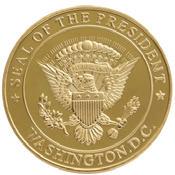



Lydia is a passionate advocate of healthy living. She has launched and positioned many health and wellness-related companies, products, technologies and organizations receiving more than 100 awards nationally and internationally. Her focus in the health sector is specifically on healthy living, aging and longevity. She is a partner and investor in several recognized national brands. She sits on the board of the Buck Institute for Research on Aging whose mission is to eliminate the threat of age-related disease for today’s and future generations. It is the only independent research organization globally dedicated to extending the healthy years of life. Like the scientists at the Buck, Graham envisions it will be possible for people to enjoy life at 95 as much as at 25. To support Buck’s mission, please visit www.buckinstitute.org.

WHILE CRACKING THE CODE ON WHY WE AGE IS AN ambitious and encompassing endeavor, cracking the glass ceiling of science, especially for a woman, is probably just as elusive. Although the field is changing, science for decades was the purview of men and research was largely conducted using male subjects, animals, and cell cultures. But no longer.
Despite the odds, one woman, Judith (Judy) Campisi, Ph.D., approachable and soft-spoken, is an understated powerhouse and science pioneer who has achieved both endeavors. In 2018, she was elected to the National Academy of Sciences, one of the highest recognitions in science, for her pioneering work on cellular senescence—an important discovery toward unlocking the code on why we age. Members are elected to the National Academy of Sciences “in recognition of their distinguished and continuing achievements in original research. Membership is a widely accepted mark of excellence in science and is considered one of the highest honors a scientist can receive.”

Her path, however, was not always straightforward. Campisi was the first in her family to attend college after attending an all-girls Catholic high school in New York City. Upon entering junior college when selecting her courses, she admits, “My guiding principle was I wanted to be where the boys were—and that was science, it was chemistry. I was pretty good at it, but my motivation was, unfortunately, teenage hormones.” Upon finishing her 2-year degree, she pursued short stints at odd jobs, eventually reaching
the conclusion, “I didn’t want to spend my life being un-gainfully employed. I remembered I enjoyed chemistry, aside from the boys.” Thus she began her long love affair with science. After completing a bachelor’s degree in chemistry at State University of New York at Stony Brook, she continued her studies there to receive her Ph.D. in biochemistry, then did a postdoctoral fellowship at the Dana Farber Cancer Institute in Boston.
In learning more about Judy Campisi and her career path, Robert Frost’s famous poem, “The Road Not Taken,” keeps coming to mind. “Two roads diverged in a wood, and I—I took the one less traveled by, And that has made all the difference.” And, in Campisi’s case it did.
Having secured a faculty position at Boston University Medical School in 1984, her mentor, Arthur Pardee, urged her to pursue a project that was not mainstream. Campisi reflects, “at the time, oncogenes had just been discovered; everyone was jumping on that.” She continued, “I decided I should try to study the flipside, because my lab was small and all these giants were working on oncogenes. I
decided to study why we don’t get cancer, which was tumor suppression.” This groundwork ultimately led to her eventual breakthrough research on senescence—a process that drives chronic inflammation, tissue degradation, and the promotion of disease as we age.
At Boston University, she received her first grant to explore senescence, a known tumor suppressor as a potential contributor to aging. As she began her research, it became clear that senescence does contribute to aging, but exactly how was yet to be understood. Senescent cells stop dividing. The hypothesis popular in the early 1990s was that the secretions released from these cells caused cell division to cease. Once again, Campisi took the road not taken—considering the possibility that it might be the other way around—that the secretions came after cell division stopped and they inflamed surrounding cells. “They (the secretions) affect surrounding tissue. That’s what aging is about,” she said.

In 1996-97, she put forth her theory of aging in two “prophetic papers,” one in Cell and the other in the Journal of the American Geriatrics Society. It took five years to gather enough data to demonstrate how this might happen in a mouse. That study appeared in the National Academy of Sciences of the United States of America and, in 2008, her team described what is now known as the SASP—the senescenceassociated secretory phenotype—in PloS Biology. It became one of the most cited papers in biomedical research.
During the 1990s, Campisi worked at the Lawrence Berkeley National Laboratory, focusing mainly on cancer. By 1999, she ran the Department of Cell and Molecular Biology and co-directed their Center for Research and Education on Aging in conjunction with the University of California, Berkeley. In 2001, she joined the faculty at the Buck Institute in Novato, California, which solely focuses on the science of aging and where there was a tremendous opportunity for ongoing collaboration. There, she also enjoys mentoring younger scientists. Reflecting on her lab there, she says, “Modern medicine has enabled us to extend lifespan—often at the expense of healthspan. My lab is focused on disrupting one of the major drivers of aging. Our goal is to enable more healthy years of life.”
Today, Campisi’s work is widely credited for the emerging focus on “inflamm-aging” based on her scientific body of work on senescent cells—a process whereby cells permanently lose the ability to divide when they are stressed. While senescence suppresses cancer by halting the growth of premalignant cells, it is also suspected of driving the aging process. Senescent cells accumulate over time as we age and release a continual cascade of inflammatory secretions. This process sets up the surrounding tissue for a host of maladies, including arthritis, atherosclerosis, and late life cancer.
Campisi explains, “The correct way to think about senescence is that it’s an evolutionary balancing act. It was selected for the good purpose of preventing cancer: if (cells) don’t divide, (they) can’t form a tumor. It also optimizes tissue repair. But the downside is if these cells persist, which happens during aging, they can become deleterious. Evolution doesn’t care what happens to you after you’ve had babies, so after around age 50, there are no mechanisms that can effectively eliminate these cells in old age.”
Moving the science from lab bench to bedside in 2016, Campisi became a scientific co-founder of Unity Biotechnology (which incubated at
the Buck) and is now based in South San Francisco, California. The company’s most promising drug candidate is in Phase II clinical trials for age-related macular degeneration and diabetic macular edema. The candidates are in a new class of drugs, called senolytic, that selectively eliminate senescent cells. Campisi says, “Unity’s drug is designed to cause chronically present senescent cells to simply die and go away in a manner that does not impact surrounding tissue. Preclinical work in mice has successfully addressed other age-related diseases, including cancer relapse and metastasis and chronic lung disease.”
In 2015, Campisi became the first recipient of the Olav Thon Foundation Prize in medical and natural sciences. According to the foundation, “Campisi’s research is highly acclaimed in the international community of scientists … she has contributed significantly in turning ‘ageing’ into an exciting and prestigious domain of research. Considering the aging of the population, it is vital to secure for our seniors a healthy life, not only for their own sense of wellbeing but also for their being able to contribute to their social environment, this is where the larger promise of Campisi’s research lies.” Campisi is the recipient of numerous other awards, including the Longevity Prize from the Ipsen Foundation.
If anyone questions Campisi’s stature as a powerhouse, one only need look at her CV—an impressive litany of more than 15 pages recapping her many academic positions, major research/achievement awards, major scientific review and advisory positions, editorial board memberships, publications and citations, scientific engagements, and the many post-doc fellows and graduate students she has trained and mentored. I don’t know about you, but I’m beginning to feel like an underachiever. Honestly, how could anyone accomplish so much? Easy—if you are Judy Campisi. And all the while she is so modest about it all. Perhaps one of her greatest strengths is her ability to translate hardcore, complicated science into plain English for folks like us.
There is no question Campisi is a legend and leader in her field; someone to keep an eye on. Curiosity is her laboratory, courage and tenacity her currency. What road she follows next, we will have to wait and see. If the past is any prediction of her future—there’s lots more to come. Stay tuned.
To follow Campisi and other scientists like her, join the Buck (www. BuckInstitute.org)
Aubrey Brewster, a bon vivant and man-about-town, is a. product of his environment. His affinity for cooking, fashion, and entertaining was inherited from summer vacations shared in Charleston, West Virginia with his southern belle model-turned-hostess grandmother. It should come with no surprise that Brewster followed in his grandmother’s footsteps, with an inherent talent for hosting legendary parties. He is often listed among San Francisco’s best dressed. Aubrey is a San Francisco native, traveler, and food and lifestyle blogger (aubreyabouttown.com). He resides in San Francisco with his husband, Edward. Aubrey can be found enjoying afternoons lunching with friends at Neiman Marcus and some of San Francisco’s favorite haunts when not hosting or attending events.
“Won’t you join me for afternoon tea?”
Guests, June 14, Neiman Marcus San Francisco

SUMMERTIME IS HERE! WITH THE LONG DOG DAYS OF SUMMER upon us, it’s time for summer get-togethers. Whether it’s a posh picnic, an outdoor wedding, a day at the beach, or a good ol’ backyard barbeque, for most of us summertime is the best time of the year to entertain family and friends: the weather is good, and everyone just seems to be in a more jovial frame of mind.
This summer there will be plenty of Saturday dinners of eight (a tradition at our home), showcasing a different theme and cuisine with each dinner. From French to Spanish to Mediterranean to good, old fashioned Southern comforts (a tip of the hat to my late father’s Southern roots, as it’s Father’s Day I’m writing this) and more. I go all out in creating the menu and décor to pay homage to the evening’s theme. But I have to say, one of my favorite ways to kick off summer entertaining (and guests would agree) is an elegantly posh and truly British afternoon tea. And with the recent coronation of King Charles III, why not be on theme?
And that’s just how we began this summer!
One of the United Kingdom’s most favorite export is the ritual of afternoon tea. Lady Anna Russell, the Duchess of Bedford, debuted the ritual in 1840 as a means to stay hunger during the long hours between 11 a.m. lunch and fashionably late dinners served traditionally at 8 p.m. The duchess would order her chef to prepare her a tray of tea accompanied by lightly filled sandwiches and cakes. Eventually, the duchess invited friends to join her in the late afternoons for conversation, and a tradition was born. Queen Victoria popularized the tradition, serving buttery sponge cake with layers of whipped cream and strawberries, a recipe made possible after the invent of baking powder by English food

 Afternoon tea service by chef Erik Harrelson at The Rotunda, Neiman Marcus
Afternoon tea service by chef Erik Harrelson at The Rotunda, Neiman Marcus
manufacturer Alfred Bird in 1843. The cake became to be known as the Victoria sponge and is (to this day) synonymous with teatime. It’s the quintessential afternoon tea cake enjoyed across the UK and was a favorite of the late Queen Elizabeth II during strawberry season at the woodlands of her Balmoral estate in Scotland.
Today, afternoon tea—often mistakenly referred to as “high tea”—is an entirely different meal usually consisting of hot and hearty fare that we Americans would call “pub food,” such as savory, handheld meat pies, jacketed potatoes (loaded baked potatoes), chicken wings, and sliders, to name a few. The name “high tea” refers to the height of the pub table known as a “high boy” (and afternoon tea could be referred to as “low tea,” as tea is often taken at a low table, such as a coffee table). We would liken it to our happy hour.
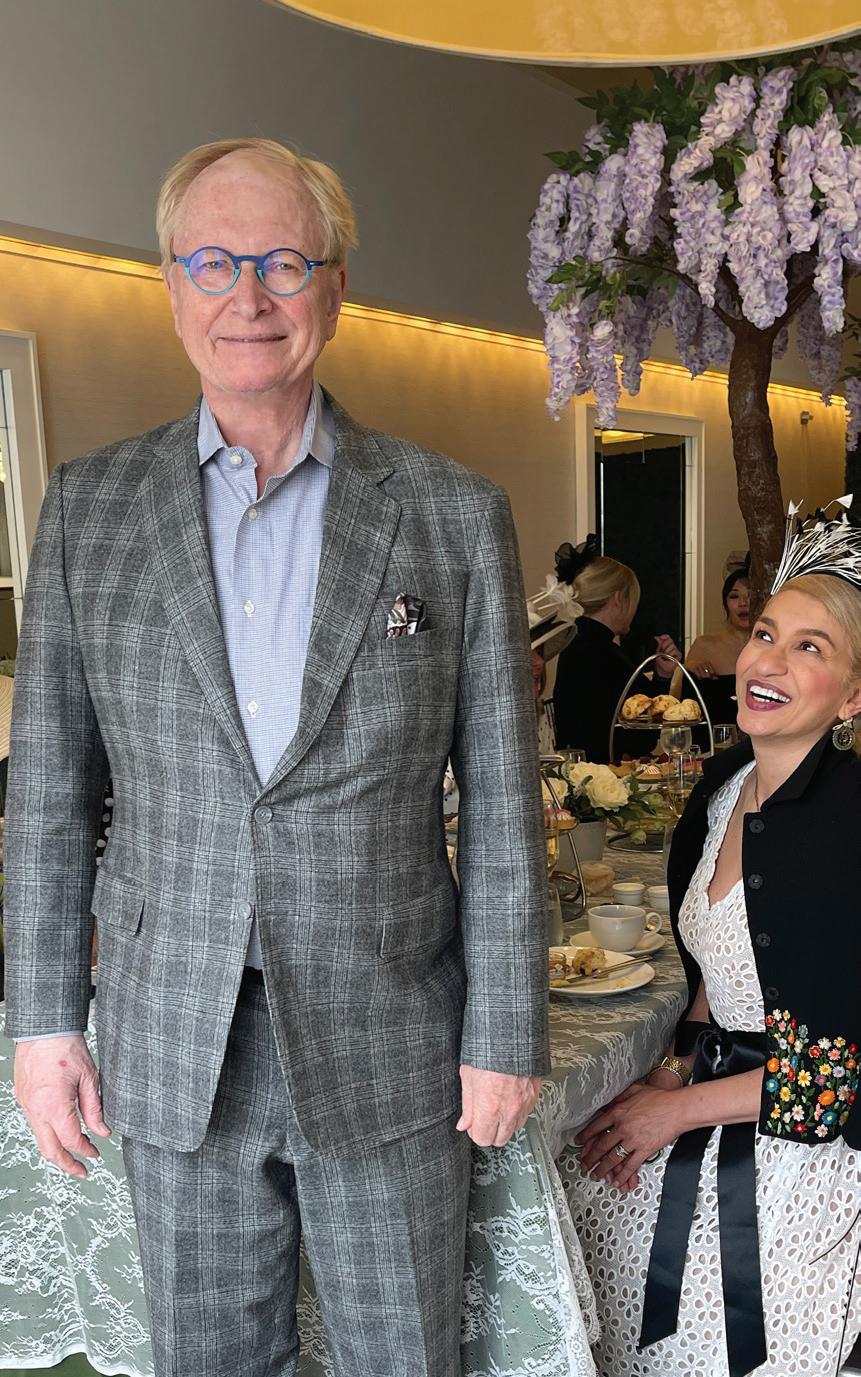


To me and many, hosting afternoon tea is the quintessential start to summer entertaining. June’s sunny and pleasant weather lends itself to taking tea in the garden and decorating the space in flowering garden motifs. It is a means for catching up with friends for a little polite conversation and naughty gossip or “spilling the tea” over a pot of good tea, champagne, and light bites of refreshing, summer harvest cucumber sandwiches, petite cakes, and freshly baked scones with Devonshire cream, zesty lemon curd, and sweet preserves. Ladies can display their fashionable hats to shield their faces from the late afternoon sun and adorn themselves in chic and elegant tea-length summer dresses. Whether tea is served indoors or out, afternoon tea is always a welcome way to show the friends in your life how much you value their company. And that’s just the sentiment my Ed and I shared to start this summer’s entertaining!
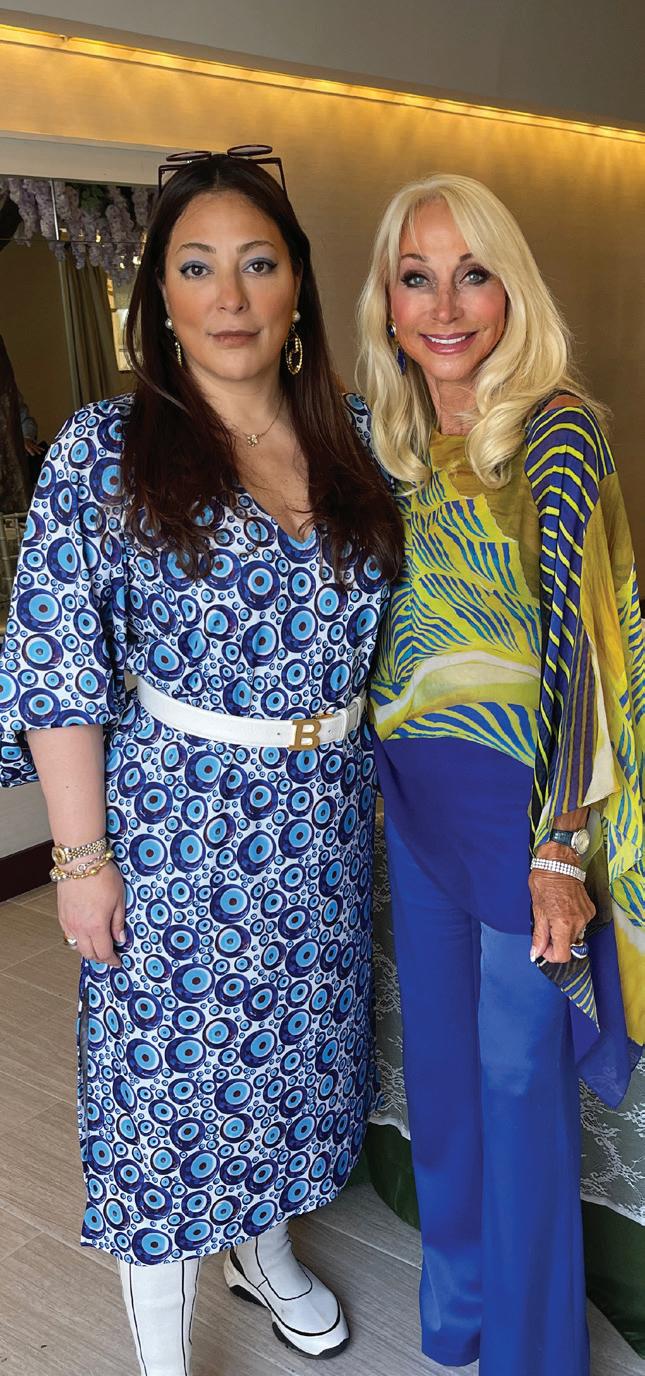
In planning afternoon tea, I keep three essential things in mind: the invitation, the menu, and the tablescape. The invitation serves as a unique call to action that gives the guests a glimpse of what to expect. I purchased four elegant watercolor images of ladies in Victorian-era garden scenery that I used to create a whimsical, animated clip: hovering butterflies, a fawn, and wisps of steam rising from teacups add a wow factor. (See it in action on my Instagram account, @aubreybrewster).
Two: the menu. I collaborated with the executive chef, Erik Harrelson, and the general manager, Katrina Parlato, of Neiman Marcus San Francisco’s The Rotunda to curate a tea tray selection that would represent the art of traditional British teatime with American sentiments. Minced country ham and Swiss cheese on artisan white bread and egg and pimento salad on tomato bread paid homage to America’s Southern heritage. Classic English cucumber with dill cream cheese on spinach bread and “Coronation Chicken” on white bread paid homage to the United Kingdom. A chopped chicken salad with a hint of curry that was served at Queen Elizabeth II’s coronation on the second of June in 1953 paid further tribute to the late queen.
Finally, the tablescape. It was essential to me that guests felt they were a part of something exquisitely special and that their every need and want was catered to. Table captain Dahn van Laarz, a longtime server of The Rotunda, made sure of that. Guests sipped on French Henriot Champagne, Nuit à Versailles green tea, and English Breakfast black tea on ornate, white lace overlaid atop willow green linen tablecloths under grand and lush, 7-foot-tall, cascading lavender wisteria trees. White porcelain service ware, teapots, teacups, and china kept the afternoon’s vibe clean and airy.
Dr. Edward Winger and Navid Armstrong Aubrey Brewster and Carolyn Tyler Sanam Baiani and Daru KawalkowskiConcerned for etiquette protocol, one guest, Betty Yu, texted me to ask if it would be appropriate or too macabre for her to wear a black dress and sheer black gloves to tea. I replied, “Why not? It could be Wednesday Addams chic!” Much to both our surprise, all but one of the ladies attending wore black and white outfits! So, yes, opting for black or dark blue over summer or spring colors added to the very chic afternoon—and as Coco Chanel once said, “Navy blue is the black of summer.” The afternoon’s guests included my partner and cohost, Dr. Edward Winger; author/socialite Jennifer Walske; socialites Farah Makras, Daru Kawalkowski, Betty Yu, and Clara Shayevich; philanthropist Navid Armstrong; Sanam Baiani; Pernella Somerville; ABC7’s Carolyn Tyler (retired); Table & Teaspoon founder Liz Curtis; Union Square Alliance’s president, Marisa Rodriguez; Haute Living SF’s editor-in-chief, Teresa Rodriguez; interior designer Gioi Tran; and couture designer Vasily Vein. It was a fabulous afternoon filled with some of San Francisco’s most notable and marvelous personalities.



For many Americans, not much more conjures up summer fun than a day enjoying America’s favorite pastime: baseball. It’s an activity we all can get behind, no matter rich or poor, gay or straight, male or female: we can collectively celebrate it together. There’s something in the air that lifts us up and fills us with team spirit. And what a quintessential way to kick off summer!
When our friends, Doug Donnellan (partner and executive vice president of San Francisco Toyota) and his husband, Frank Anthony Celaya, called to say that Doug had rented out the Salesforce Champions Suite at Oracle Stadium for 30 of their closest and most fabulous friends, Ed and I didn’t think twice. We were in!
The day was electrified. It was a special day at the ballpark: the San Francisco Giants versus the Chicago Cubs. The Giants were celebrating San Francisco Pride month with their “Pride Night” kicking off summer in the Bay Area with a pink Saturday Pride night game. In typical San Francisco fashion, the game started in high camp with SF’s very own drag laurate and SF native, D’Arcy Drollinger (owner of San Francisco’s iconic Oasis nightclub) throwing the first pitch in honor of Drollinger’s longtime close friend and drag icon, the late and great Heklina.
Doug and Frank pulled out all the stops with a fabulous party at the ballpark and treated guests to hot dogs, nachos, and pulled pork, scrumptious cupcakes, and Giants baseball caps.
The game was on fire. Halfway through, a foul ball hit our box suite behind first base, missing Ed’s face by just inches and adding even more excitement to the game! To commemorate Pride Night, the Giants gave game goers collector baseball jerseys with the Giants insignia in LGBT+ pride flag colors. Though the Giants lost to the Chicago Cubs 0-4, it didn’t stop this crazy group of vagabonds from having a marvelous summer afternoon at the ballpark.
When it comes to summer entertaining, I’ve come to learn that there are some things that are tried and true “Dos” and some definite “Don’ts.” Here are some rules to live by when planning your summer soirées that will make any event memorable and hassle-free!


DO PLAN AHEAD. Make lists of the menu, bar essentials, and décor. Hosting a party should be an exciting and enjoyable time. Being ill-prepared leads to stress, and if the host is unprepared, this stress will pass on to everyone involved.
DON’T CHARGE GUESTS TO OFFSET THE COSTS. You are the host, not your guests. Period. Consider co-hosting if budget is an issue. If you want a Parisian birthday party, then make Paris your theme; unless you’re planning on flying your guests to Paris, don’t expect them to pay the costs. Doing so is a major faux pas.
DO HAVE A THEME. Immerse your guests in an escape they’ll talk about for years to come. A theme also gives your event direction, helps in menu and décor decisions, and makes planning easier.

DON’T SERVE ALCOHOLIC BEVERAGES WITHOUT FOOD TO SNACK ON. If you are hosting a cocktail party during dinner hours (6–9 p.m.) and not serving dinner, offer hearty bites. If your event is late in the evening, light bites and sweets are the exceptions. Allowing your guests to drink on empty stomachs is irresponsible.
DO PERSONALIZE. Small, personalized details make guests feel special; and having guests’ names in front of them ensures that everyone gets to know each other. Whether simple place cards or menus, party favors or glassware, a personalized touch takes your soirée to the next level.
DON’T IGNORE YOUR GUESTS. They’ve come to see you! Be visible and available.
DO SEND INVITATIONS VIA MAIL. Not to say that electronic invitations aren’t effective, and they are indeed far more affordable; however, a tangible invitation that one can hold engages guests. If done right, your invitation will create buzz, and guests will feel like they are a part of something special.
DON’T SEND OUT INVITATIONS LATE! Your guests need time to schedule. This is especially the case when hosting an event in the summer months. Two months out is perfect. At the least, send your invitations no less than one month before your party.
DO BE ATTENTIVE TO DIETARY RESTRICTIONS. Nothing ruins a party like a sick guest. A simple “please advise of any food allergies” at the bottom of your invitation will suffice.
DON’T USE HIGHLY SCENTED FLOWERS. You may love freesia and tuberose, but nobody wants to be inundated with them, especially when eating. Except for the powder room, scented candles, oil diffusers, potpourri, and strongly fragrant flowers are best left out of the party.
DO MAKE A SEATING CHART. When hosting a sit-down luncheon or dinner, conversation flow and guest compatibility are essential for a memorable time. Having place cards with their names ensures everyone feels welcomed and thought of.
DON’T TRY TO DO EVERYTHING. If necessary, delegate small tasks to others or hire help.
Dr. Karen Horton is an internationally board certified plastic surgeon in San Francisco, a fitness enthusiast, proud mom to fraternal twin girls, and devoted wife of over 26 years. Hailing from Toronto, Canada, “Dr. Karen” relocated to San Francisco in 2005 for her final year of surgical specialty training. A surgeon’s daughter, she is proud to have built a successful, women-focused boutique private practice in Pacific Heights. Featuring a brand new Quad A-certified, fully equipped operating room, Dr. Horton offers her patients the highest level of aesthetic care, both surgical and nonsurgical, in a modern, bright and discrete setting. She considers it an honor and a privilege to care for her patients! To learn more about Dr. Horton, visit www. drkarenhorton.com and follow her on social at @drkarenhorton.

SO MANY WOMEN TODAY JUGGLE VARIOUS ROLES IN their lives. This is also the case in my life. My daughters know me as their mom, my patients trust me as their surgeon, and my husband sees me as his life partner. Yet, as a woman with multiple roles to fulfill, I also strive to excel as a dedicated businesswoman. In 2006, I became a surgeon at San Francisco Plastic Surgery (SFPS), formerly known as Women’s Plastic Surgery. Since joining, I’ve witnessed firsthand the unwavering dedication, professionalism, and kindness of the staff, making working here feel much more than just a job.
In 2010, I bought the practice and was elated that the entire team decided to stay on board. Since then, we have established a thriving

practice. Nonetheless, I recognize the need to consistently put effort into our business relationships, as they are akin to other relationships requiring ongoing maintenance to remain strong.
At our second annual team-building retreat, I hosted my team in Healdsburg where we enjoyed beautiful Sonoma wine country and embraced the philosophy of continuous improvement. While we may be satisfied with our progress, we know there’s always room to improve. Throughout the retreat, we focused on building stronger communication, improving relationships, promoting diversity, increasing productivity, and cultivating a happier team.
While the wine country weekend was an excellent opportunity to relax and have fun, it was also a time to boost critical team-building priorities:
• Communication: Effective communication is vital to your success as a team. Even though office members might work in the same location, their unique roles may make it challenging to share information. For instance, our surgical and nonsurgical staff have less contact with each other than within their own teams. However, our recent retreat was successful in allowing everyone to share experiences and thoughts, creating a more transparent and fluid communication system that enhances our practice’s efficiency and harmony.
• Establish company culture: Staying focused and dedicated to your company’s mission while embracing opportunities to have fun is essential. Throughout our event, we engaged in discussions centered on maintaining the highest standards for patient care while still finding ways to enjoy our work and avoid burnout.
• Continue to learn: Stay ahead in your ever-changing business landscape with one key strategy: learning. First, experience lasting success by staying abreast of industry trends and developments.
Next, invest in your knowledge to propel your business to greater heights. Our eagerness to learn was a topic of discussion over the weekend, and I was keen on understanding what our team knew and what they wanted to learn more about. Our office provides ample opportunities for mentorship, cross-training, access to conferences, and continuing education units. Strengthening our knowledge and expertise keeps us engaged and leads to greater professional fulfillment.
• Celebrate victories: Take pride in your accomplishments and celebrate with your staff. Our team came together that weekend to applaud our victories. We’ve achieved success, thanks to our supportive, intelligent, and unified team. Although we strive to improve continuously, it’s also essential to recognize our triumphs. We will continue to build upon our achievements with confidence and enthusiasm, since improvement is in our DNA.
We spend so much time at work that it becomes critically important for people to bond with their professional families. Respecting each other’s perspectives and individual skill sets pays considerable dividends in how we interact with each other and our patients. Not long ago, a patient told me she aspired to interact with her clients the way my team and I interacted with her. She truly appreciated that we got to know her in a relational manner and explored what was best for her, rather than simply trying to sell her services. In addition, she was impressed that we weren’t being entirely transactional.
Receiving this compliment is an accomplishment for us. While gathering patient medical histories is part of our job, we see it as having meaningful conversations with them. Our goal is to understand their stories. Achieving this level of care requires a united team effort, and I am fortunate to lead such a strong team of women.

Rooted in California and having earned her degree at UCSB, Claudia Ross is living her best life in Knights Valley after leaving behind a career in public relations as the founder of Cross Marketing and former director of Harper’s BAZAAR and Marie Claire. She has worked with the world’s most iconic luxury brands. The owner and vintner of Ross Ranch, a working farm and vineyard producing a farm-totable experience, Ross now enjoys sharing thoughtful insights into the world of wine country life, both socially and agriculturally.

AS A WINEGROWER AND WINEMAKER MYSELF IN KNIGHTS Valley, Sonoma County, I am always looking to support local wineries when dining out. Whether in Silicon Valley or Napa Valley, I do my best to select unique, exceptional wines to support my wine community. When I travel abroad, it’s all about the local fare. When in Italy, I look for the best Barolo; in Spain, a Rioja Gran Reserva; and when in France—where do I start?—a Blanc de Blanc Champagne or a hidden gem of a Bordeaux. So, when dining locally, I drink locally.
As of late, I have frequented a few Michelin-star and sought-after restaurants in both Silicon Valley and Napa Valley where, when asking for the wine list and selecting a wine, I struggled in my selection due to wine lists offering an abundance of internationally acclaimed wines that outweigh my local varietal options. The more I tried buying local, the more fascinated I became with the unique choices offered at the international level, with the latter becoming more abundant. So, I asked myself why, when we have so many great wines offered here in Napa Valley. The answers surprised me.
One reason, restaurants may opt for a more diverse wine selection to appeal to a broader audience, especially when catering to a discerning clientele. While Napa Valley is known for its exceptional wines, some restaurants may choose to offer wines from other regions to provide a wider variety of options and exceptional value. Take, for example, master sommelier and owner Dennis Kelly of Protégé in Palo Alto. He offers lots of international producers on his much-curated wine list that are not expected and even more rare classics housed in the wine room that don’t even make the wine list but are introduced only for the most exceptional of circumstances. “We provide our customers with the best wine experience and pairings with our menu. The evening always starts with listening to our guests and, if asked for
my opinion, I have had the experience of tasting so many wines where I can bring an extraordinary product with a tremendous value,” says Kelly. At Protégé where the wine selections are remarkable, Dennis Kelly is always there to impress his guests with his selections: “We don’t love expensive wines, we love transparent wines.”
At Montage in Healdsburg, Director of Beverage Paul Coker, selects his wines by telling a story of quality and diversity in wines that can be found first locally. Seeking to appease his two primary guests, resort and local clientele, Coker works with his team (a master sommelier, a James Beard Award winner, winemakers, and mixologists) to create robust and different wine lists. “By bringing together all these various opinions and flavor profiles, we ensure that we have more than a ‘house palate’ and maintain respect for different flavor profiles and approaches.” For their extensive rare wine collection, They keep their most treasured wines off the list, specifically because “we believe in the power of relationships. Just putting the ultra-elite wines on the list has potential to be transactional and a recipe for a quick dollar. We find more value in using these treasures to begin or grow relationships with our guests that can last for many years to come.”
When talking to local chefs and wine buyers as to why European wines have become more abundant on their wines lists, the overall consensus was that many feel that European wines tend to overdeliver, and when asked about wine lists and pairings: “Chefs do not want a Napa Cabernet with steak, due to the fact that Napa wines do not have enough acidity with too much oak and not much acid, which doesn’t pair as well with food,” says Max Mayeri, head wine and spirits buyer for Diablo Foods. With that said, it really does come down to personal preference.
At Solage in Calistoga, sommelier Louise Olivares recognizes that guests travel from all over the globe to experience Napa’s robust Cabernet Sauvignon, and the extensive selection of local Cabernet reflects that expectation. However, with over 10 years of experience in the wine industry, Olivares both embraces this signature style and also turns the stereotype on its head. Currently, the Cabernet Sauvignon by the glass is a 2013 vintage coming from two tiny acres in the Oak Knoll district of Napa. Olivares says, “The majority of Napa Cabernet is consumed very young, within three to five years of harvest. While this is certainly enjoyable, I love it most when the tannins have had more time in-bottle to soften and the secondary notes of earth and spice have integrated with the primary black and red fruit notes. Many guests have never enjoyed a Napa Cabernet with 10 years of age on it, and to them it’s a revelation.”
As a nod and homage to other world class growing regions, Solage’s wine list offers wines from classic regions of the world, such as Bordeaux, Burgundy, Spain, Italy, and Germany. “These ‘faraway finds,’ as non-local wines are categorized on the list, are what many of our local guests gravitate toward as well as those who often encounter ‘palate fatigue’ after a long day of wine tasting in the Napa Valley,” says Olivares.
Overall, both Silicon Valley and Napa Valley offer impressive wine lists that showcase their great pairings for their menus with the overall idea of creating a memorable and great tasting experience. After all, it’s all about the palate and respect for the taste.


 Dennis Kelly at Protégé
Montage Healdsburg
Montage Healdsburg
Dennis Kelly at Protégé
Montage Healdsburg
Montage Healdsburg
Stephanie Block is an award-winning writer and Bay Area standup comedian. She produces, hosts, and performs in comedy shows around the country. She is a fine wine specialist and sits on the board of IE Madrid’s local alumni association where she earned her executive MBA. Diagnosed with type 1 diabetes as an adult, she is a passionate champion of nonprofit JDRF dedicated to T1D therapies and cures.
HOWDY! WE’RE POPPING THE CHAMPAGNE FOR THIS NEW Haute Living, San Francisco column, “Around the Block,” with me, Stephanie Block. This space shall be resplendent with tales of the city’s people. Let’s show ’em that San Francisco is neither dead nor doomed.

These glittering lines promise to paint a broader picture—not rose-hued because there’s a shortage of pink paint due to all things Barbie movie! If you aren’t awash in blush right now, are you even an astronaut and the president and a veterinarian? Friends, you know I’m Barbie-obsessed. My collection sits in Lucite cases above my bar. You throw one back, you glance at Hello Kitty Barbie. All hail!
You may wonder how I come to inhabit these chic pages. I’ve known your brilliant editor-in-chief, Teresa Rodriguez, for eons, and have had the pleasure of editing and contributing to her literary projects. I’m also known to trip (not on) the red carpet fantastic. I’m out a lot, being a wine expert and standup comedian. I might be evaluating vintages or at an open mic at midnight on a Tuesday. And if I’m not somewhere, you’re probably there. Let’s talk.

Here’s a dreamhouse goal for you: getting mentioned in Around the Block where all things haute and happening in the Bay Area really shine. Dish to me like Dominique Crenne—serve me multi courses of your most amusing bouches. Catch me at @howdyblock. So, what’s the happs? My birthday of some significance! My plan is simple: host 50 parties between now and New Year’s Eve. Can it be done? You bet your cool sculpted ass it can. Help me to get to 50 fêtes.
Enough about me; what do you think of me? Is it even me? We are the AI capital of the world: everyone who’s anyrobot is here. Our fab friend realtor, Joel Goodrich, expects a bleep-blorp surge as all that end-of-humanity cashola gets invested in real estate, art, and— sure—a new Beatles single featuring John Lennon. Treat yourselves, newtelligence sympathizers! Too, this will be the first season of parties at the astounding Conservatory at One Sansome with interiors by Jeff Schlarb and event coordination helmed by Lillian Phan, of Chef Dynasty: House of Fang TV fame. Is it too late to reserve it for your holiday party? Prolly.
Plus, sex, duh. Our tongues wag in various mouths vis-à-vis recent revelations about elite underground swingers’ clubs round here. I always had my suspicions, didn’t you? Someone invite me, I’ll bring the libations, you bring the lubrications.
Shopping is a primo tenet of “Barbiecore.” You may sense that all stores have left, except a swap market at the 16th Street BART station, but fear not! Neiman Marcus assures me that they’re staying. We must carry on the stealth wealth trend, wearing effortless, high-end, logo-free goods best found in those charming boutiques in Jackson Square. I am a maximalist, so this means nothing. My outfits shout. Do yours whisper? Private client experiences are everything right now, like the shhhh floor above the retail étage at Saint Laurent downtown with the most beautiful dressing room I’ve ever seen.
Yes, some businesses are thriving. Scarlet Sage Herb Co., an apothecary and 28-year Mission District fixture, just moved to Fillmore Street. While hotel and mall executives rue their debt structure, an LGBTQ+ herbalist entrepreneur is slaying the retail game. Brava to Laura Ash who did much of the renovation herself.
Finally, our OUT-IN roundup. Dine and dance events are out and experience-oriented theme parties are in, observes party planner extraordinaire, Robert Fountain. Paparazzi is out; hiring your own camera crew is in. Dive bar comedy is out; dispensary smoking room comedy is in. Super blooms are out; stealth blooms are in. Pop-ups are out; residencies are in. Naked eyeballs are out; Apple goggles are in. Rideshares are out; driverless rides between 10 p.m. and 5 a.m. are in.
P.S.: My stunning photo was taken by the Vincent Gotti! Swoon. Real talk: it took two hours to uplevel moi’s face and hair, y’all. Tease it to Jesus! I did it in the spirit of Barbie, the original influencer whose powerful message is simple: you can be anything, even a wine comedian society columnist! Time to stand on your tiptoes, repeatedly change your outfit, and hop in your hybrid pink Corvette. It’s time to contribute to what’s going on around town, especially Around the Block. Thank you for being part of Episode 1, The Block Begins
How does someone get started with content creation, influencing, and/or blogging?
Once you setup your website and social media accounts, create a strategic plan with niche-specific short and long-term goals, audience analysis, consistent posting schedules, etc!
Tip: Grab my planner, Do it for the Gram, on Amazon for help getting started on Instagram!
How do you make money as a content creator?
I make six figures of income through affiliate marketing, brand partnerships, social media planners, conference speaking opportunities, SEO consulting, influencer management, and more.
Having multiple streams of income helps you spread your talents, and opens new possibilities. Why put all your eggs in one basket anyways?
Be versatile!
How do you balance a full-time job and content creation?
I have always been a multitasker. I love my tech job, but also love my blog! Prioritizing time for both requires discipline and dedication, with my daily schedule mapped hour-by-hour to keep me on track.

Do you think having a website is necessary?
YES! You don't own social media apps, but you DO own your website. No matter what, you can always count on that. Oh, and build out a newsletter list. It is a valuable way to communicate with your audience!
What do you want your readers to take away from Sonia Begonia?
I started my blog and Instagram to discuss mental health and life's challenges It slowly evolved to include fashion and lifestyle topics too I want readers to learn how to look and feel their best on a budget I want them feel inspired to keep going when life gets hard I always say, the inspiration you desire is closer than you think In fact, it has been right inside you all along. xoxo
Photo by Emily Kim Photography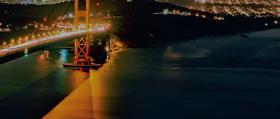















































3 Beds | 3 Baths | Bay Views | 3,000± sq. ft.










For Rent Furnished at $2 2 ,000/Month































This waterfront showplace was a former home of award winning designer Martin Kobus which he fully renovated in 2011-2012. Known for creating calm, welcoming spaces that showcase his modern aesthetic, Martin reimaged this sunny bright home into a waterfront resort-like design with high ceilings and huge windows to enjoy the breathtaking San Francisco Bay views. Located on the coveted West Shore in Belvedere, this appx. 3,000 sq ft, 3 bedroom, 3 baths waterfront home features a state-of-the-art kitchen with a huge Caesarstone island, all bathrooms feature limestone floors and Caesarstone counters; living room with high ceiling, wall-to-wall windows and a large fireplace; family room with TV and built-in desk, dining room and kitchen combo sharing a large fireplace and large view windows; two bedrooms each with full bath on main floor with direct doors to Bay and garden. All main floor rooms have doors opening to the spacious 1,000 + square foot waterfront deck for gracious outdoor entertaining. Luxurious second full floor master


A spectacular high quality contemporary residence with panoramic views of San Francisco Bay from every room, this majestic ±7,693 sq ft 6 bedroom, 5 full baths and 2 half-baths mansion was built in 2006 on a ±0.94 acre lot adjacent to Tiburon open spaces with ample privacy. The interior features huge windows providing great natural light, the formal living room showcases 2- oor-high ceiling windows that frame the panoramic Bay views, a stunning chandelier, and a replace. The formal dining room with matching chandelier connects to a high quality designer kitchen with center island, dining counter for 6 seats, and ample cabinets. This open oor plan includes a butler’s pantry, spacious family room with replace, a wet bar and a temperature controlled wine cellar, all leading to the expansive entertainment terrace with an outdoor kitchen. The private and opulent master suite features a replace, a separate




suite with fireplace, walk-in closets, a cozy office area and a terrace overlooking the Bay. Wide plank hard wood oak floors through-out the entire home. Almost every room enjoys spectacular views of Bay, San Francisco, Golden Gate Bridge, Sausalito, Mount Tam and beyond. There is a two car garage and a gated garden. West Shore Road is the widest street in Belvedere with ample off-street parking. Belvedere West Shore is known as the best yachting location on San Francisco Bay with easy access to Corinthian Yacht Club and San Francisco Yacht Club. Downtown Tiburon is walking and biking distance with Ferry services to San Francisco and Angel Island and has dozen great restaurants.
sitting room, a luxurious bathroom with stunning views and a walk-in closet. 5 other bedrooms all have beautiful Bay views. There is also a deluxe library/ media room and a billiard room with a bar. The nearly one acre grounds feature a huge stone terrace with an outdoor kitchen, a bocce ball court, a golf putting green, terraced gardens, a marble gazebo with re pit, a pool site, a three-car garage, and a gated motor court with a marble fountain and space to park 10+ cars. Downtown Tiburon is just a few minutes away with 2 world class yacht clubs, Bayside bike path, ferry services to San Francisco and Angel Island, great restaurants such as Michael Mina’s Bungalow Kitchen, Malibu Farm, Caprice and Sam’s Cafe.
More details and photos at: 55WestShore.com
More photos and information available at 189GilmartinDrive.com.







































